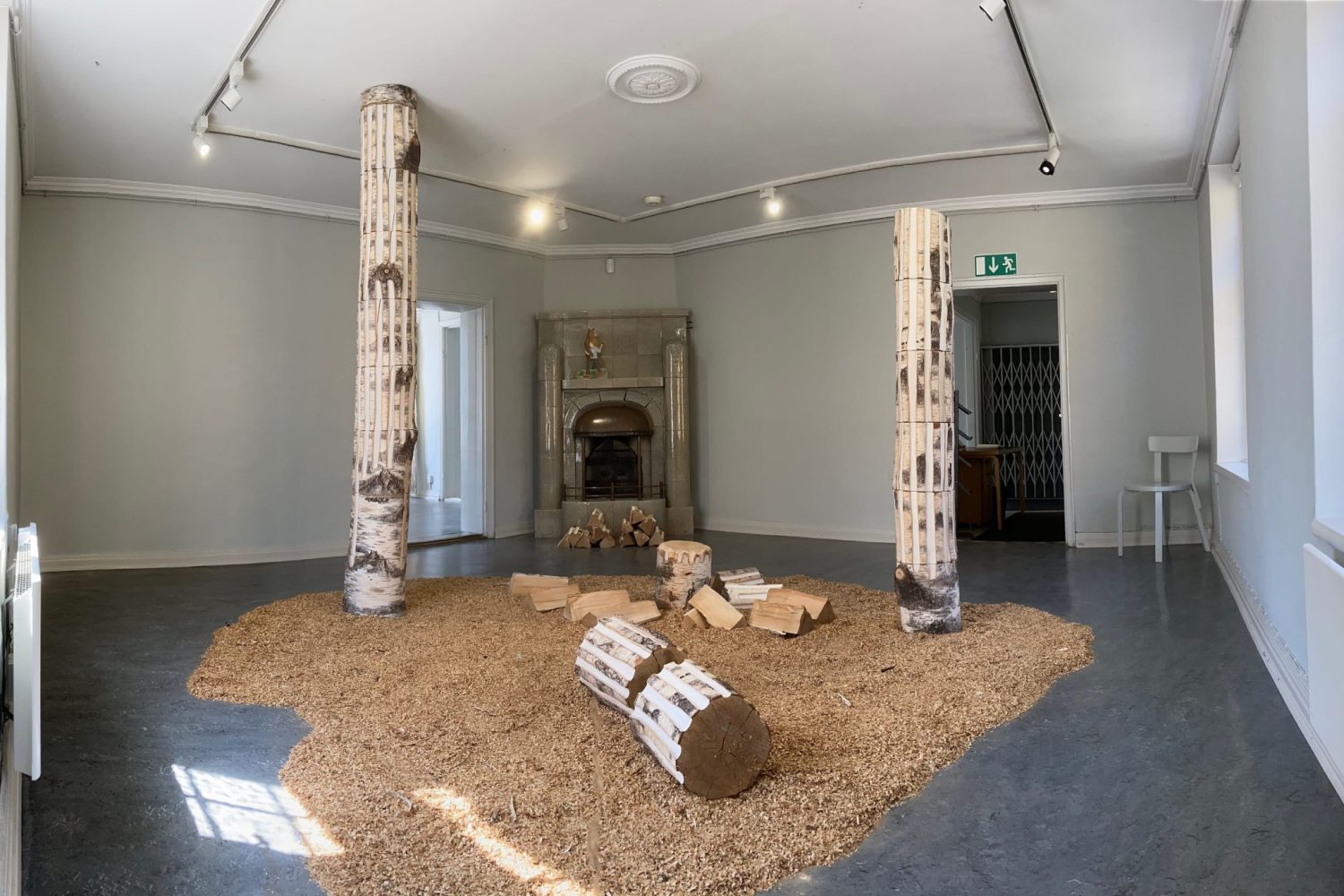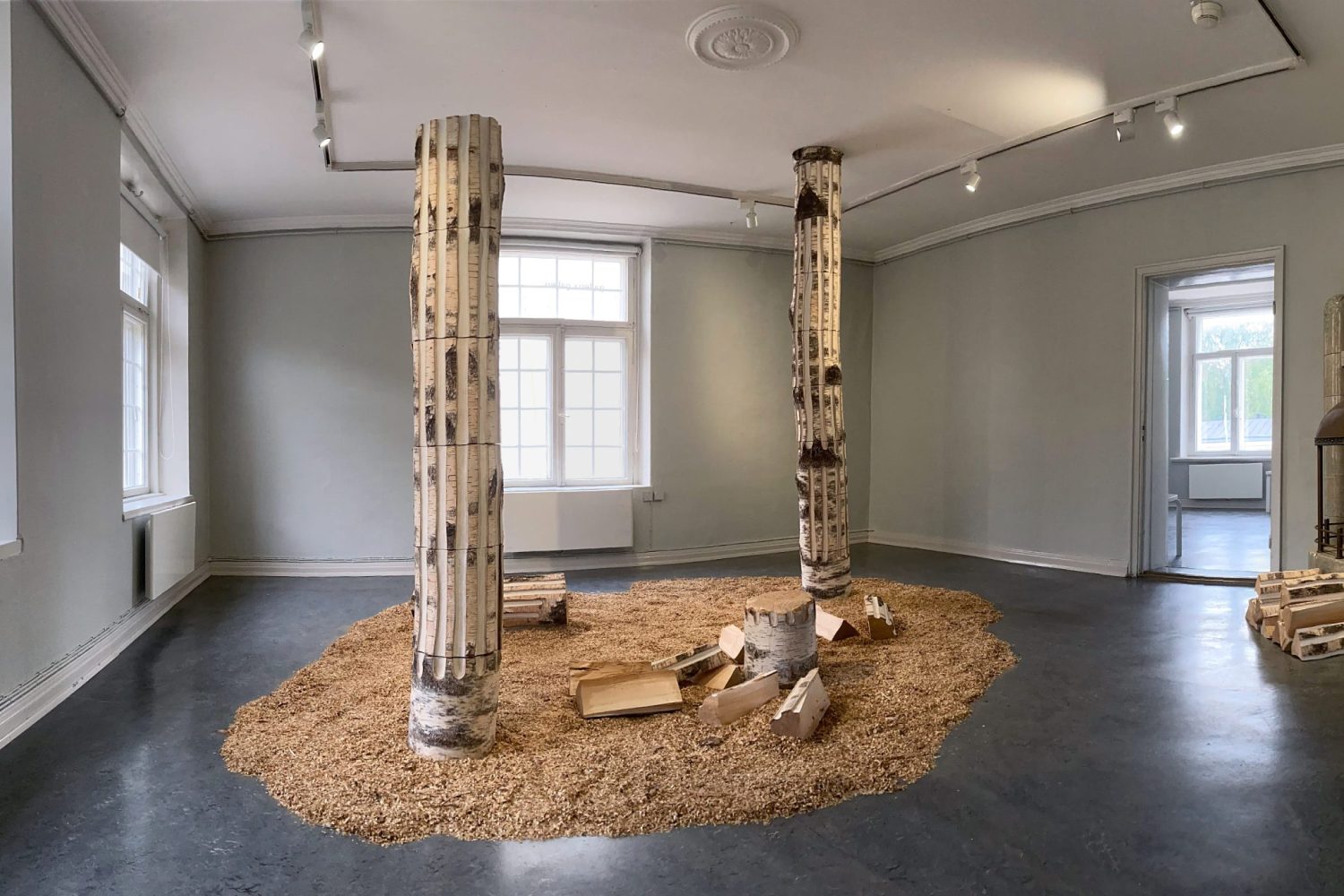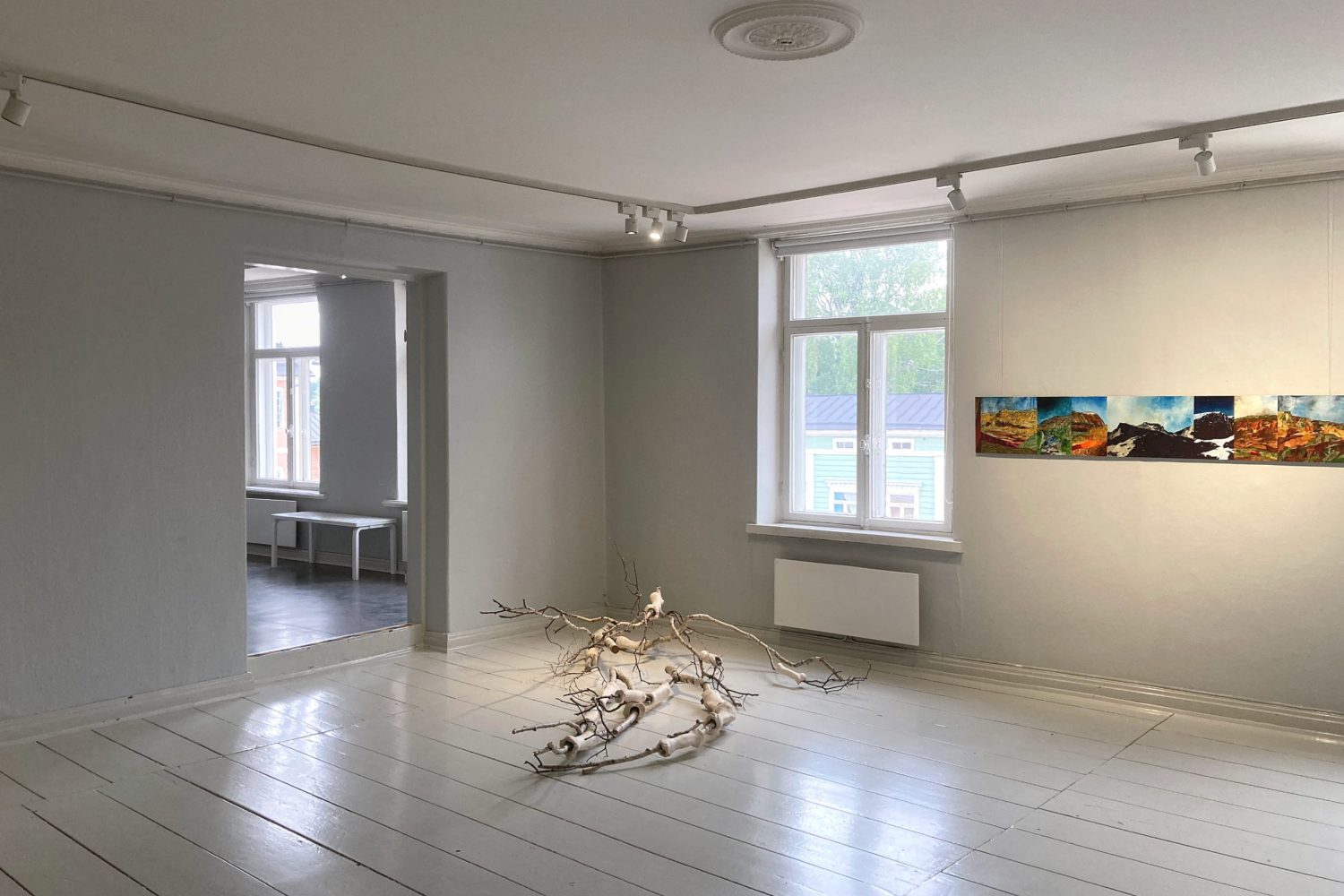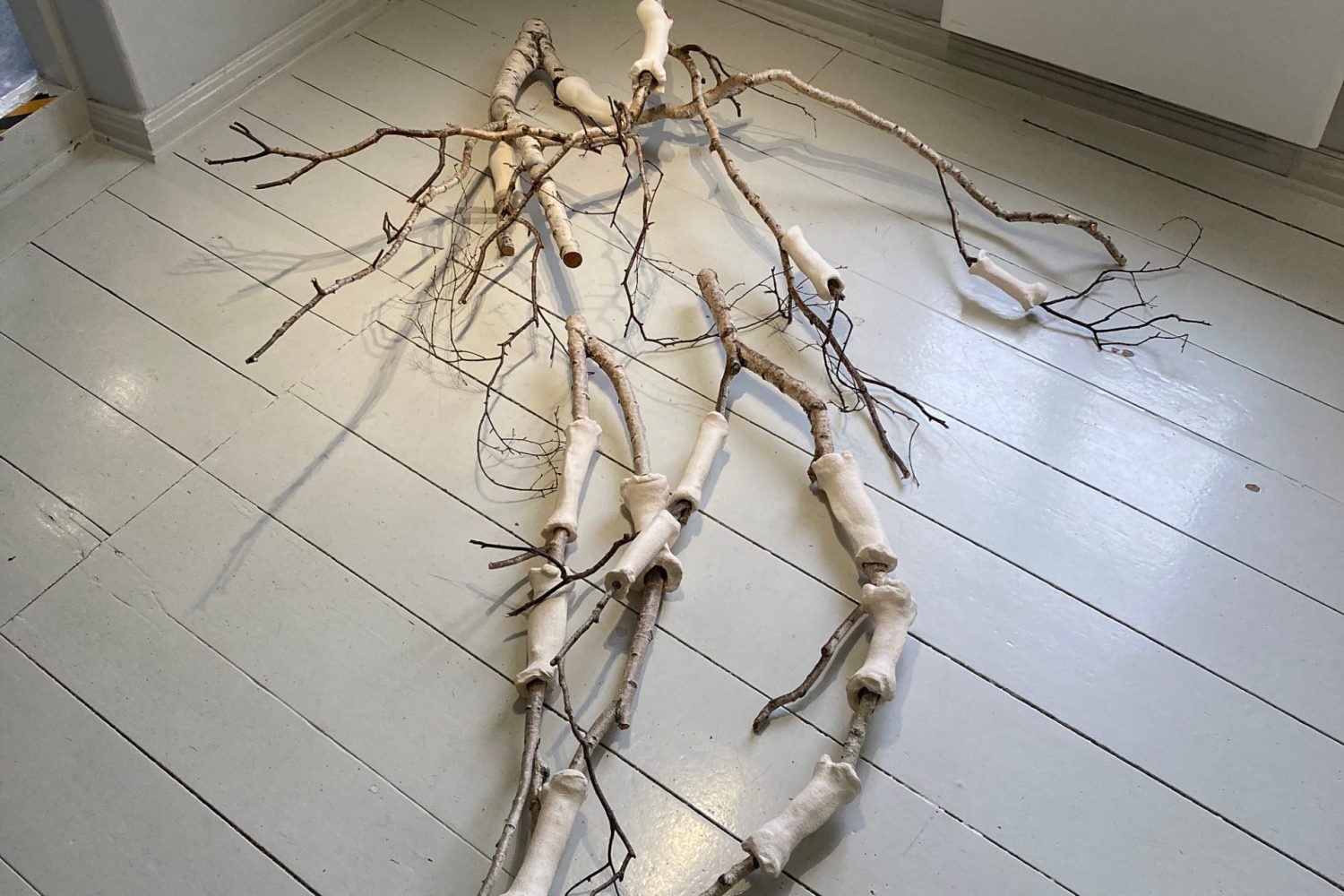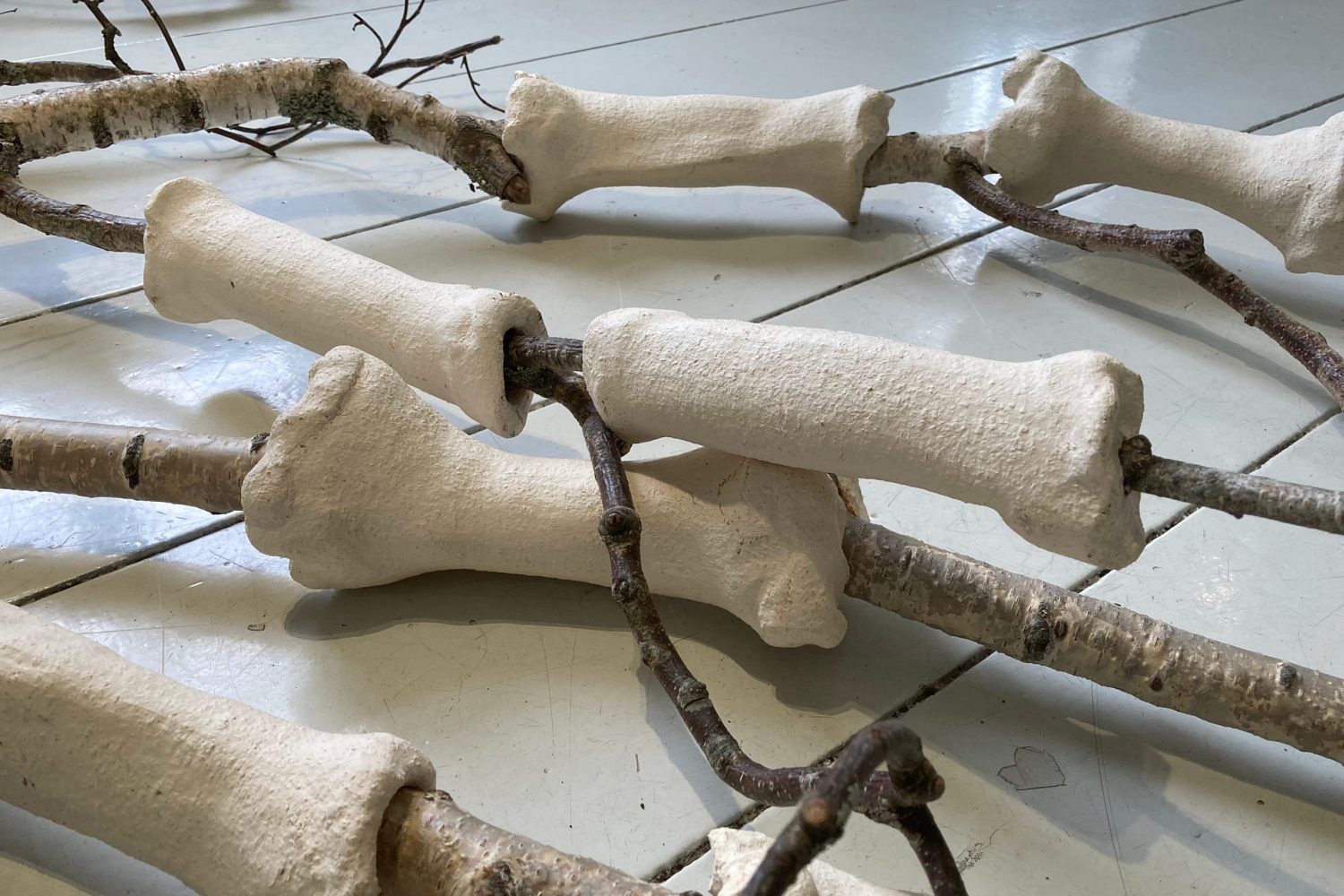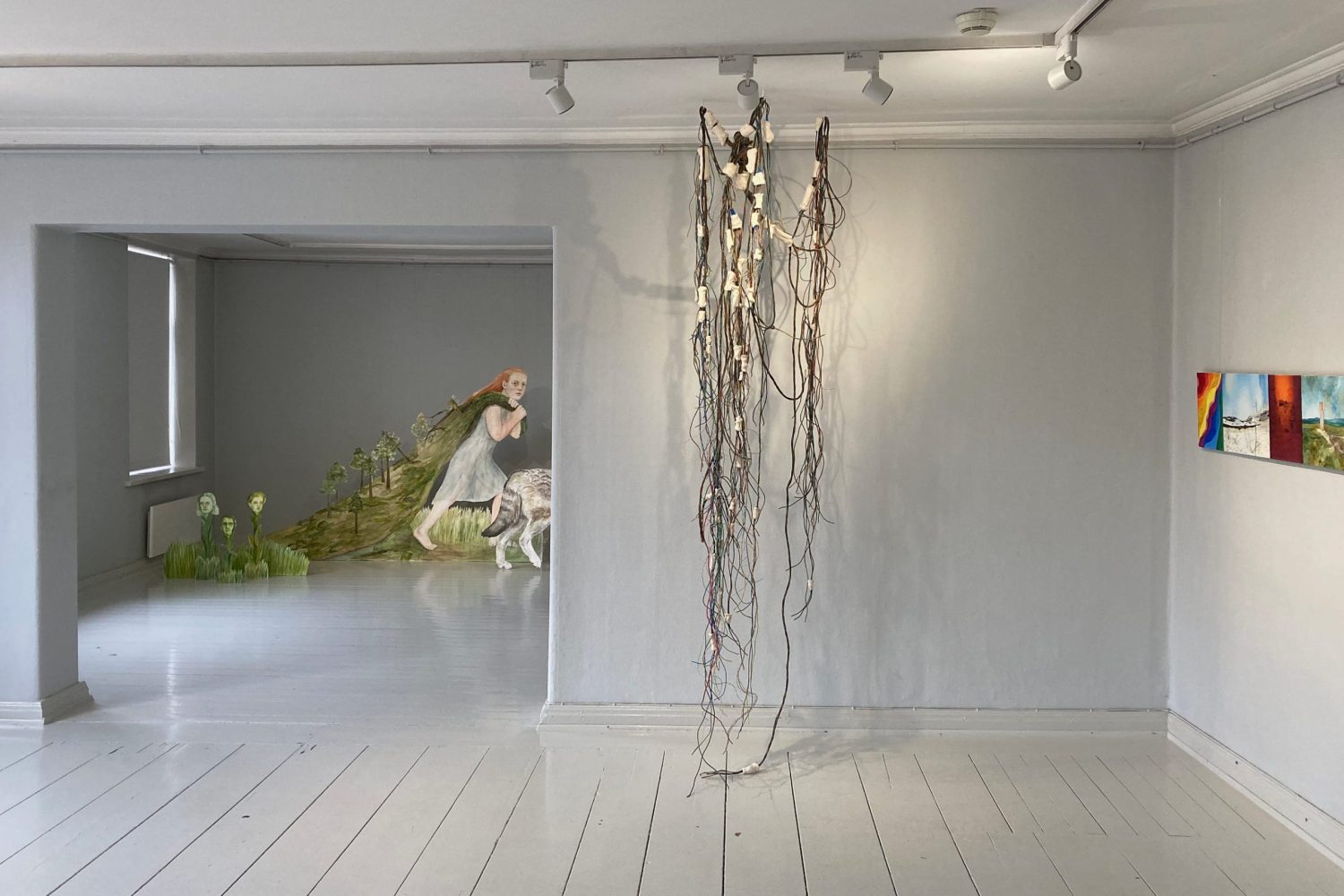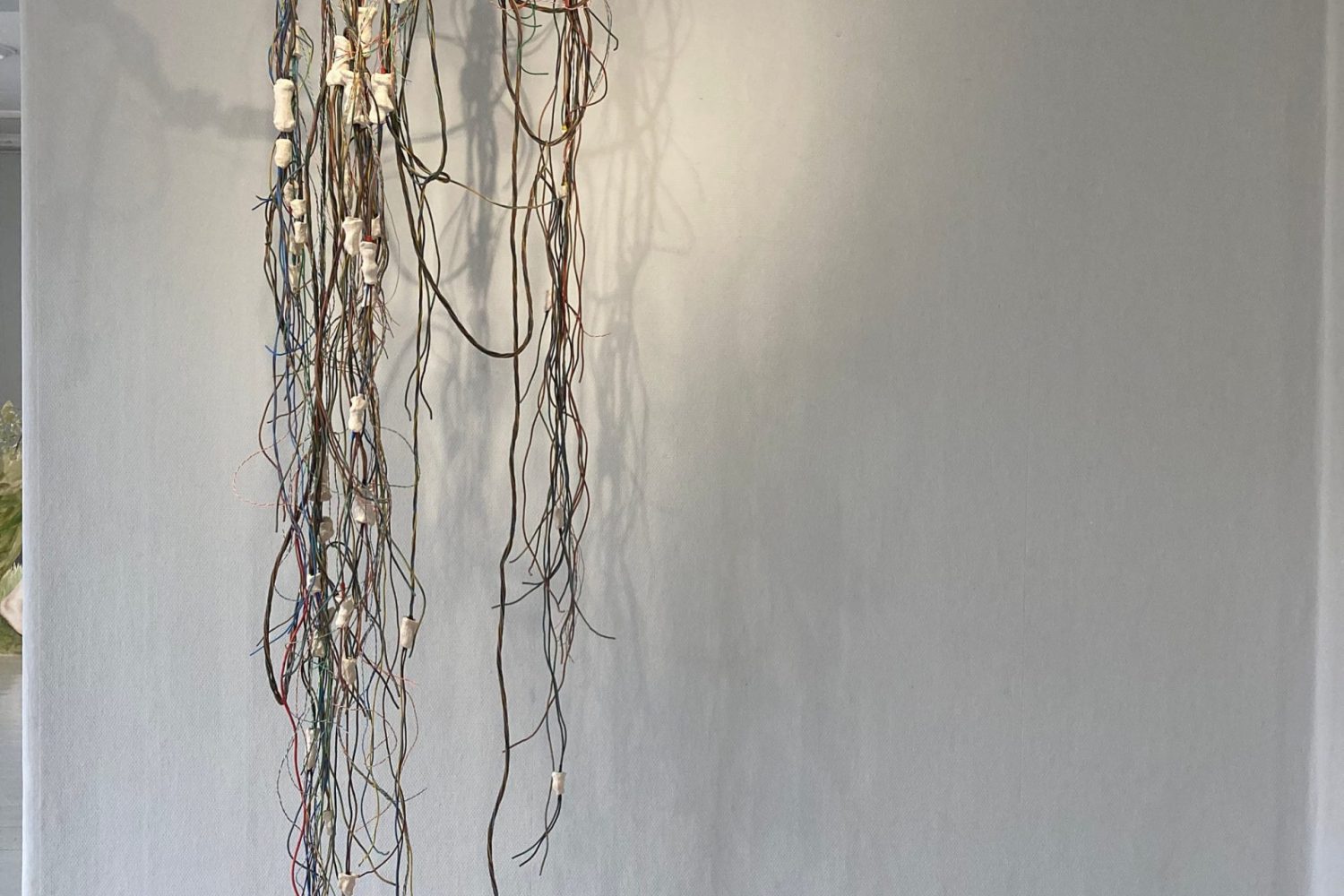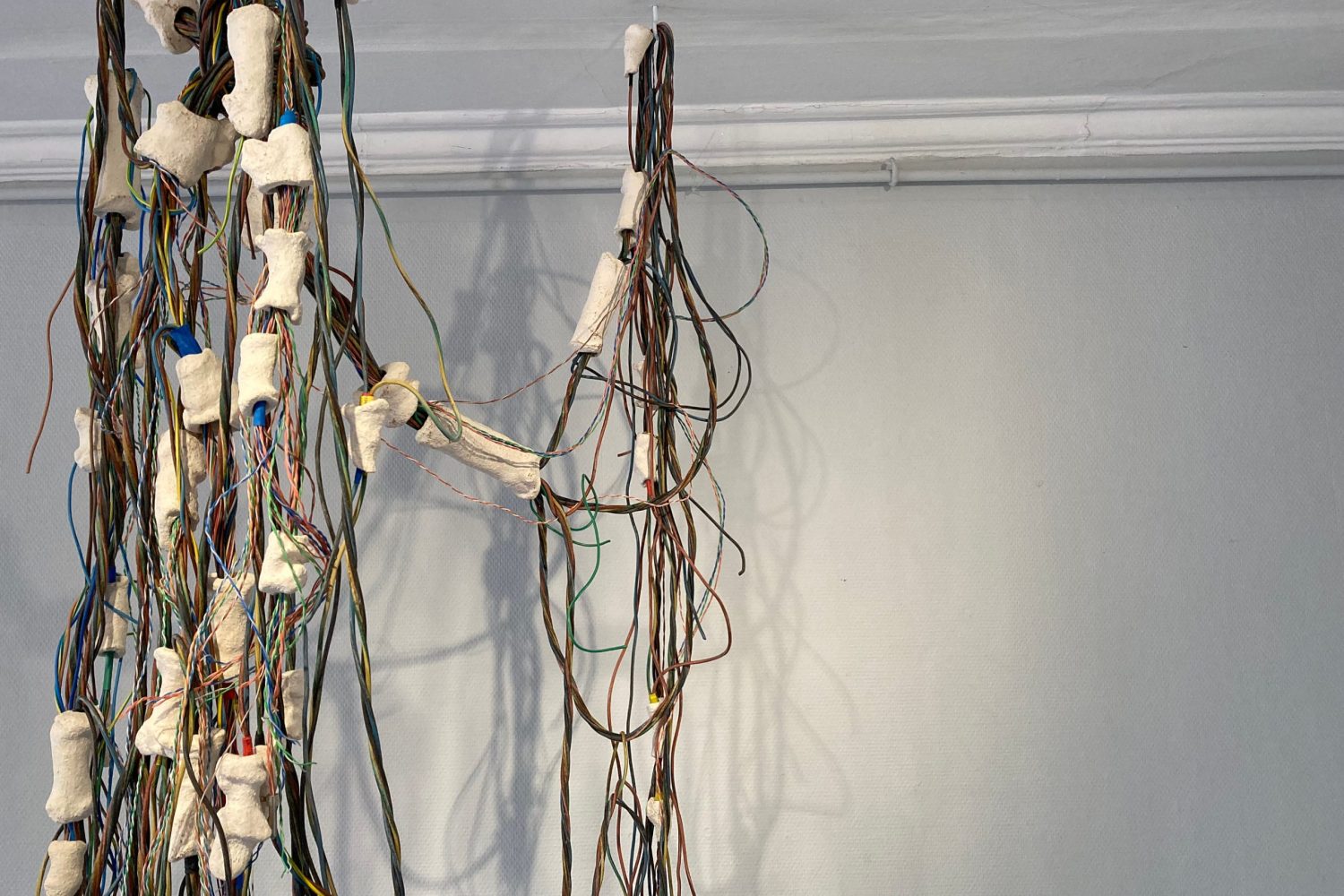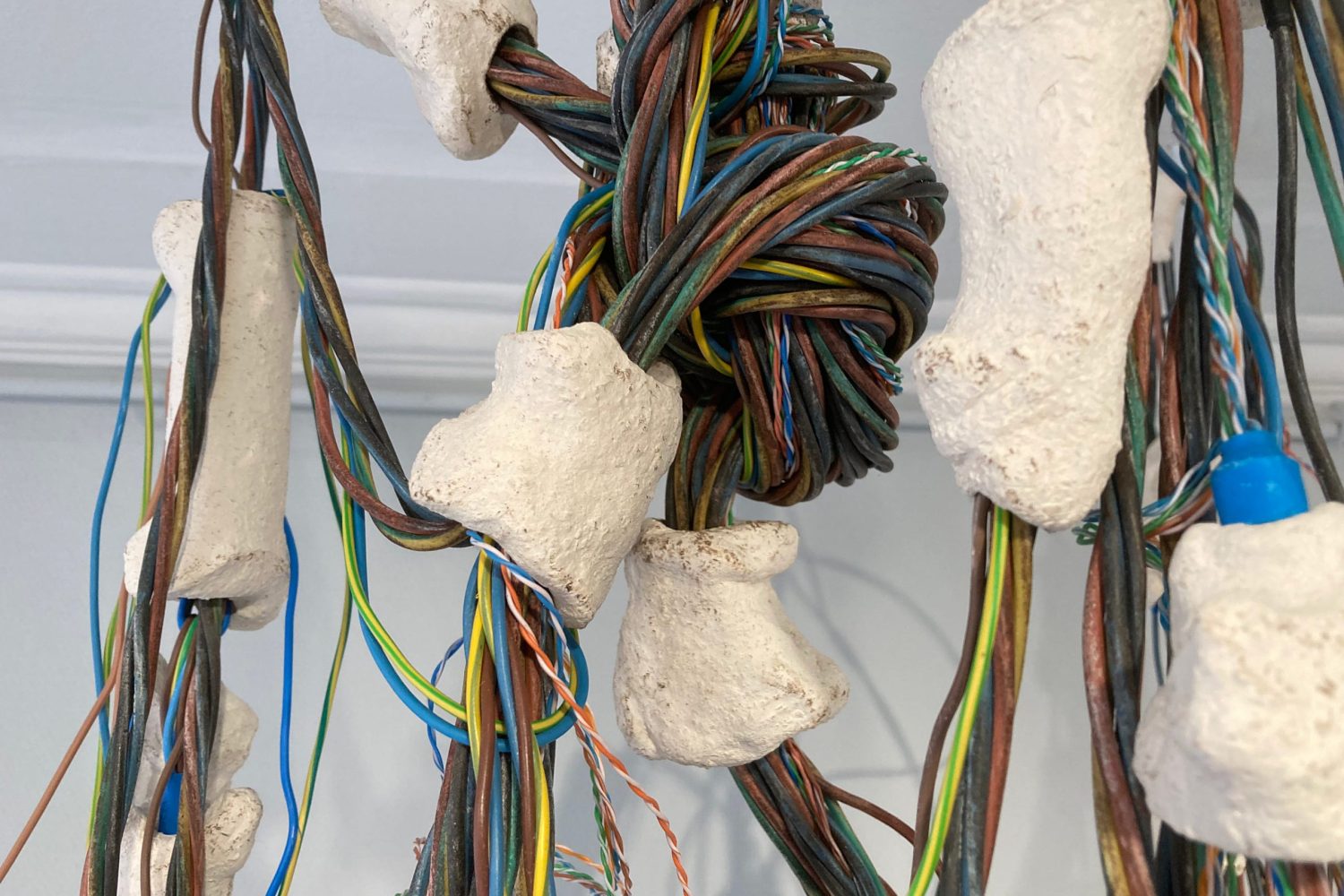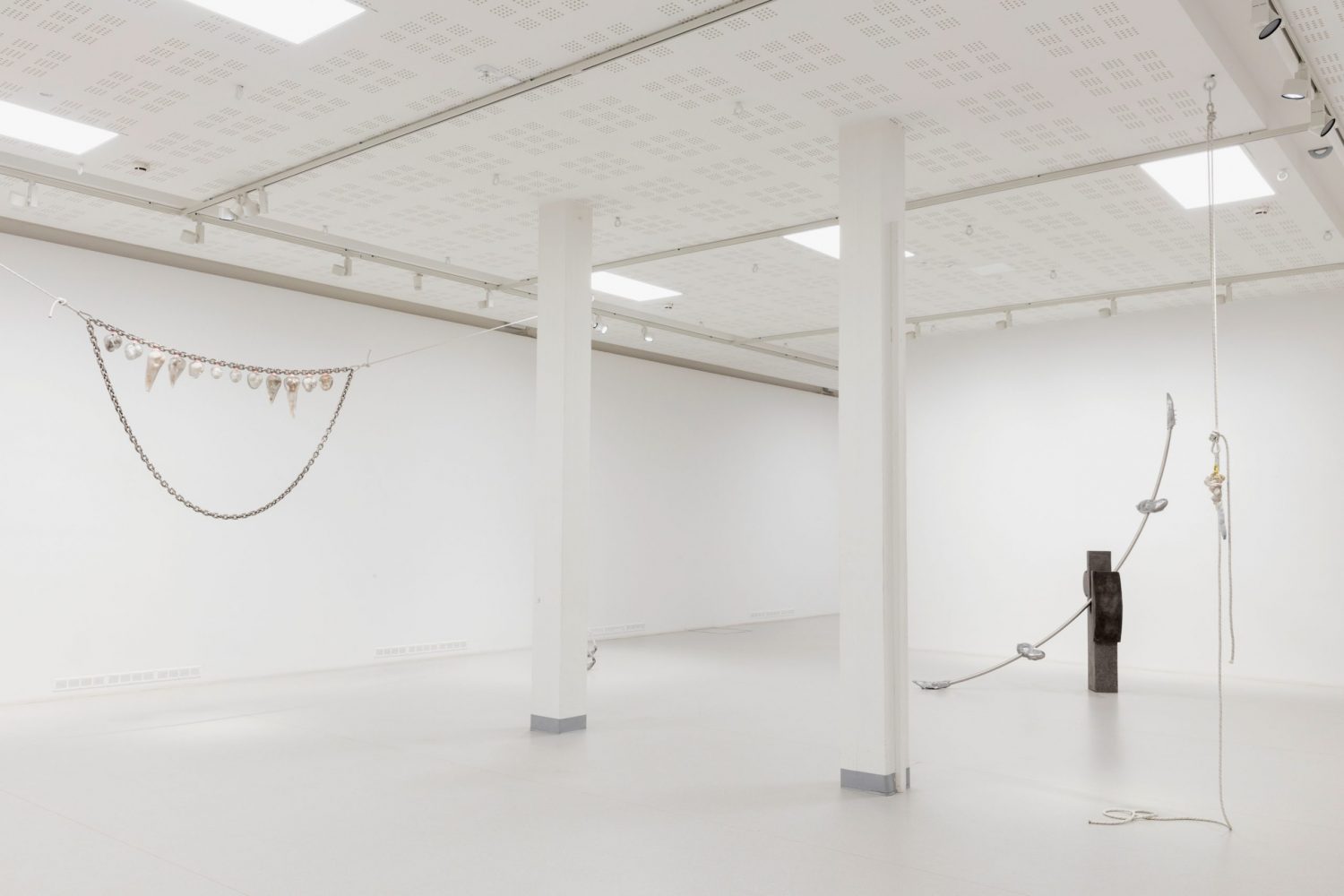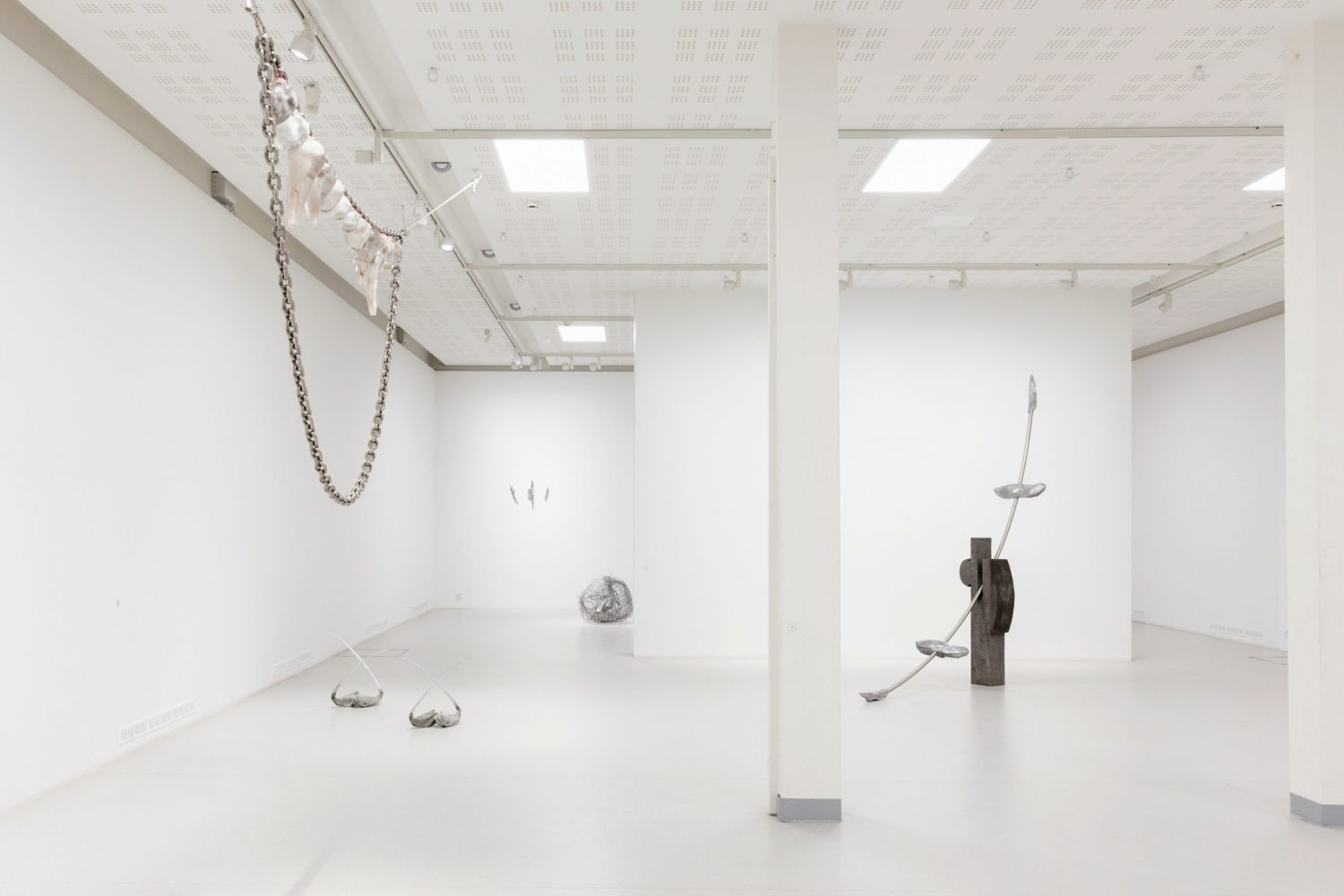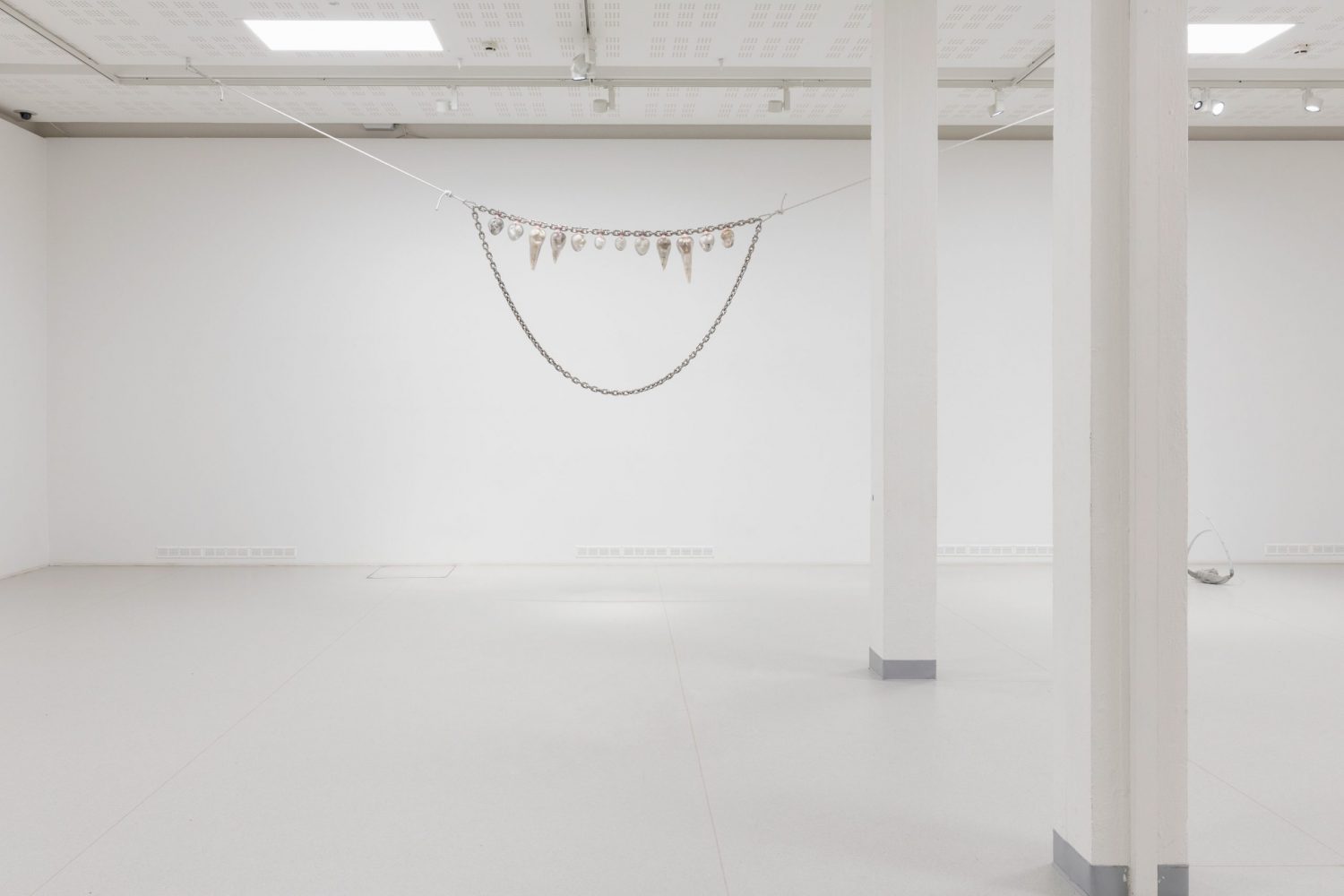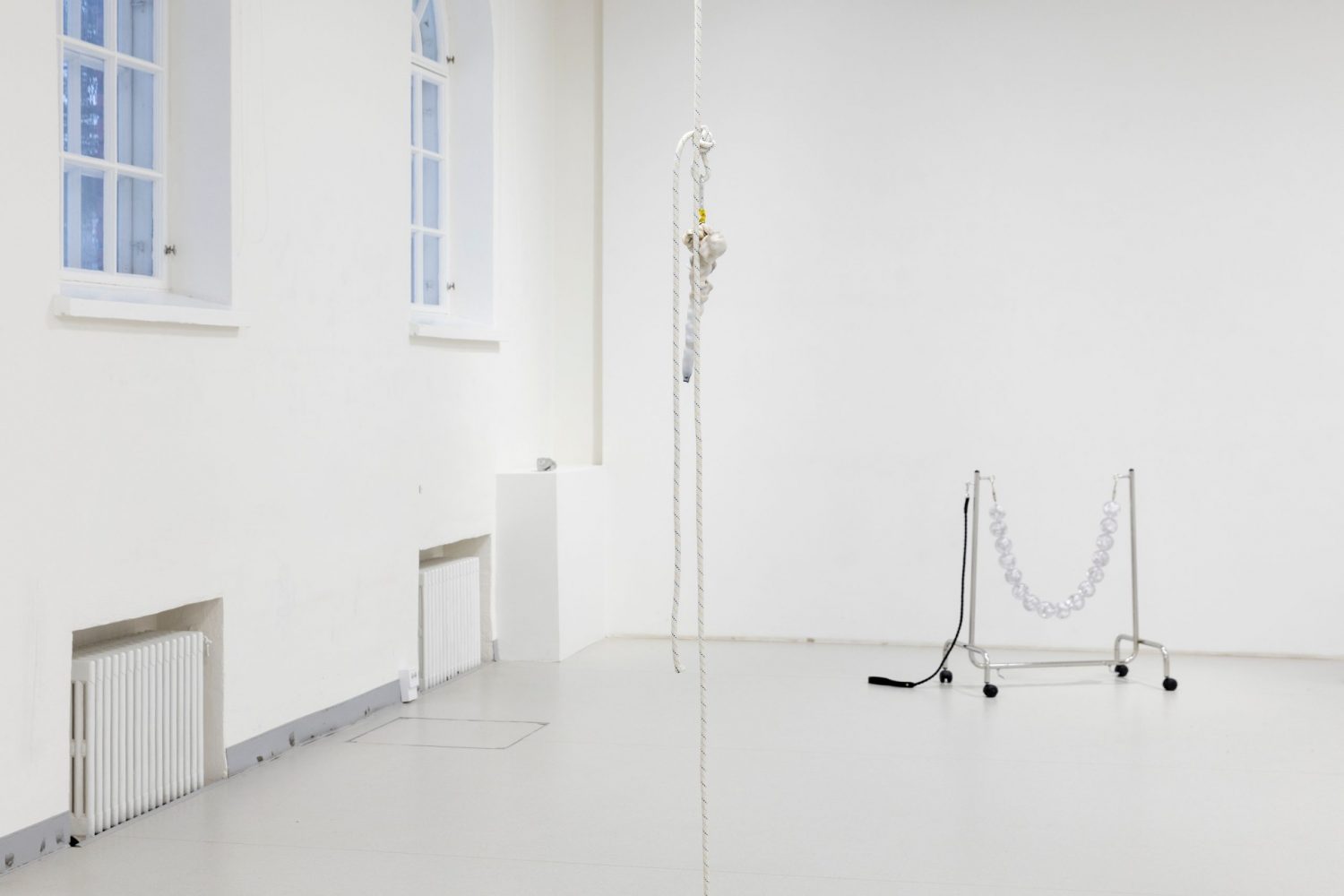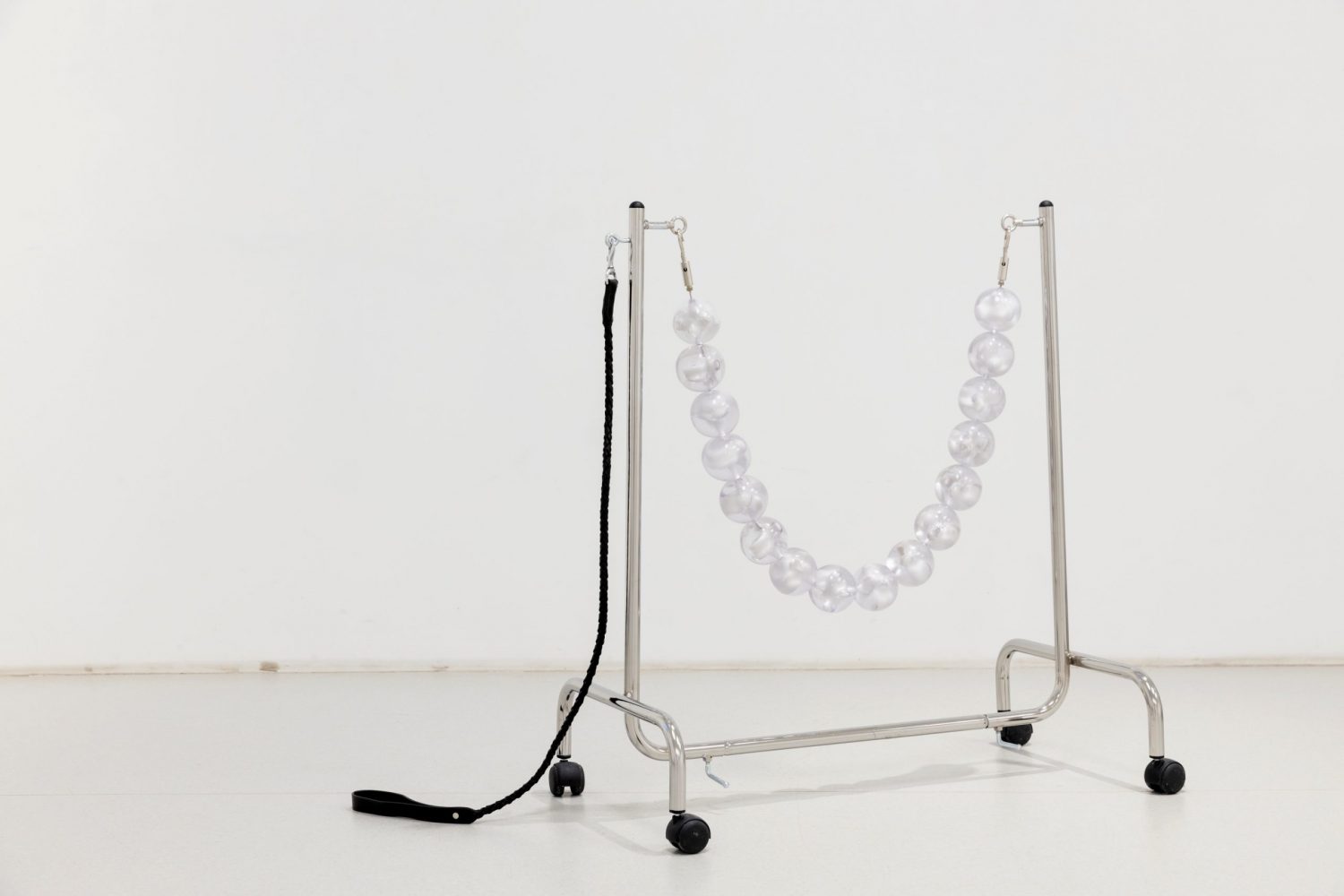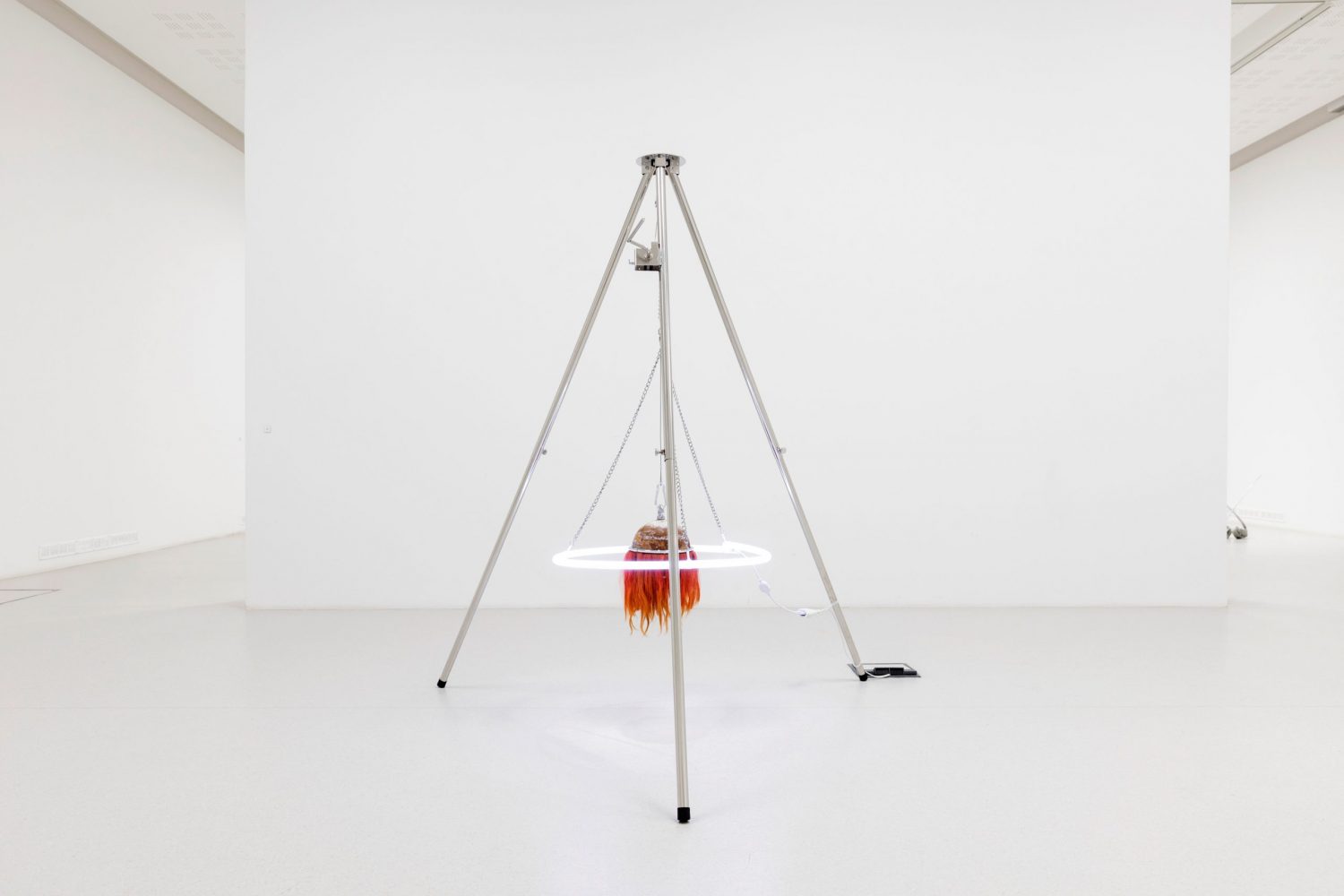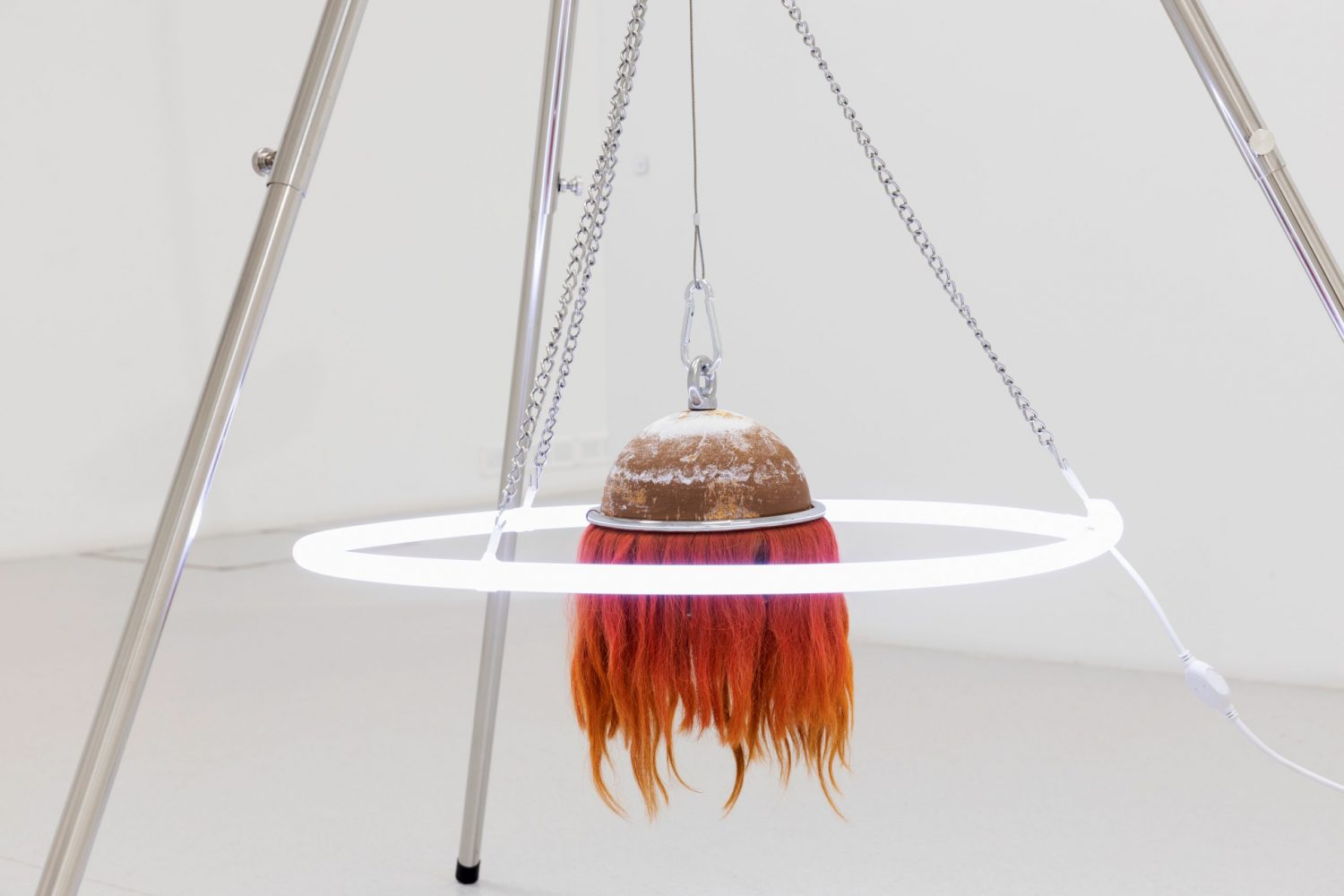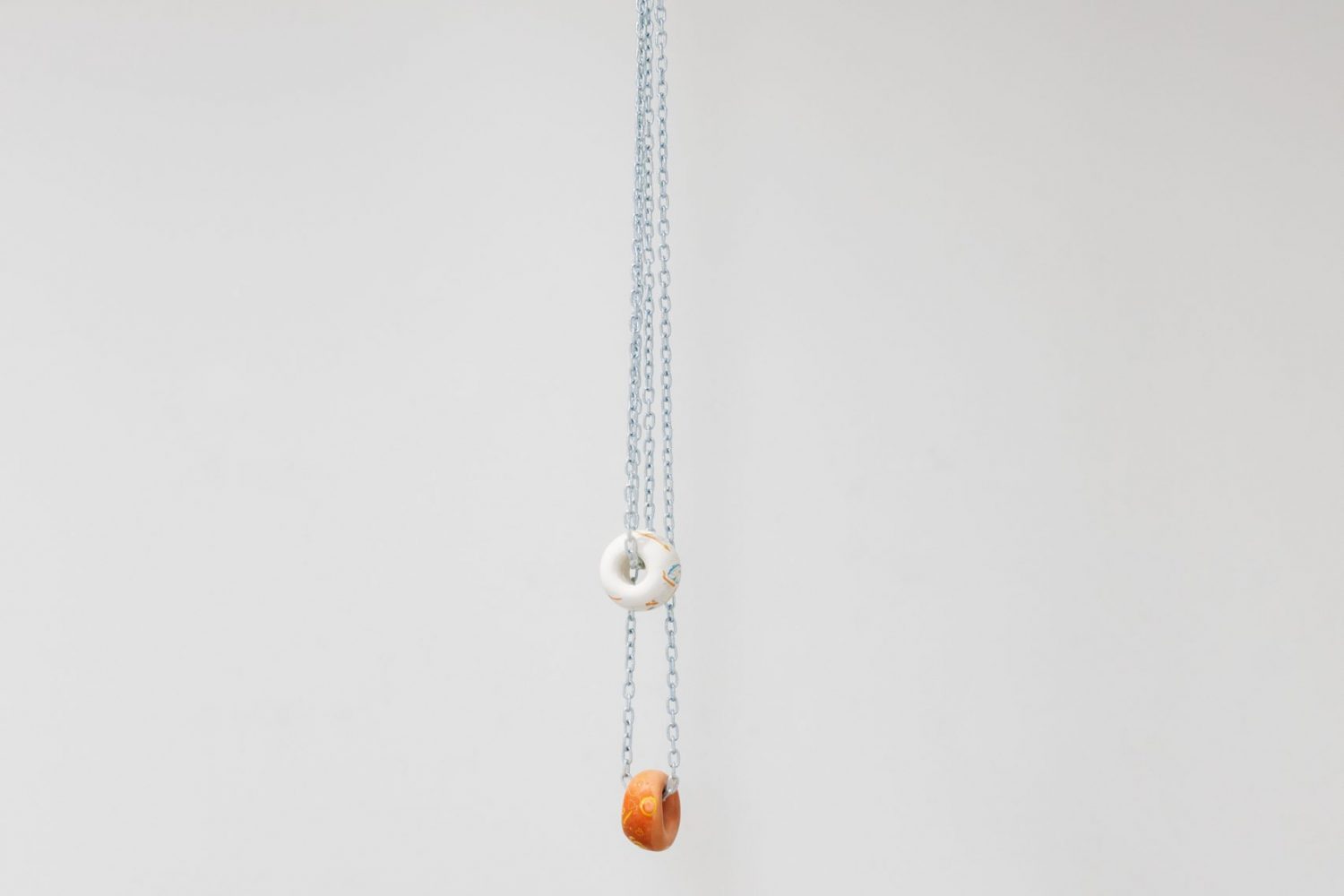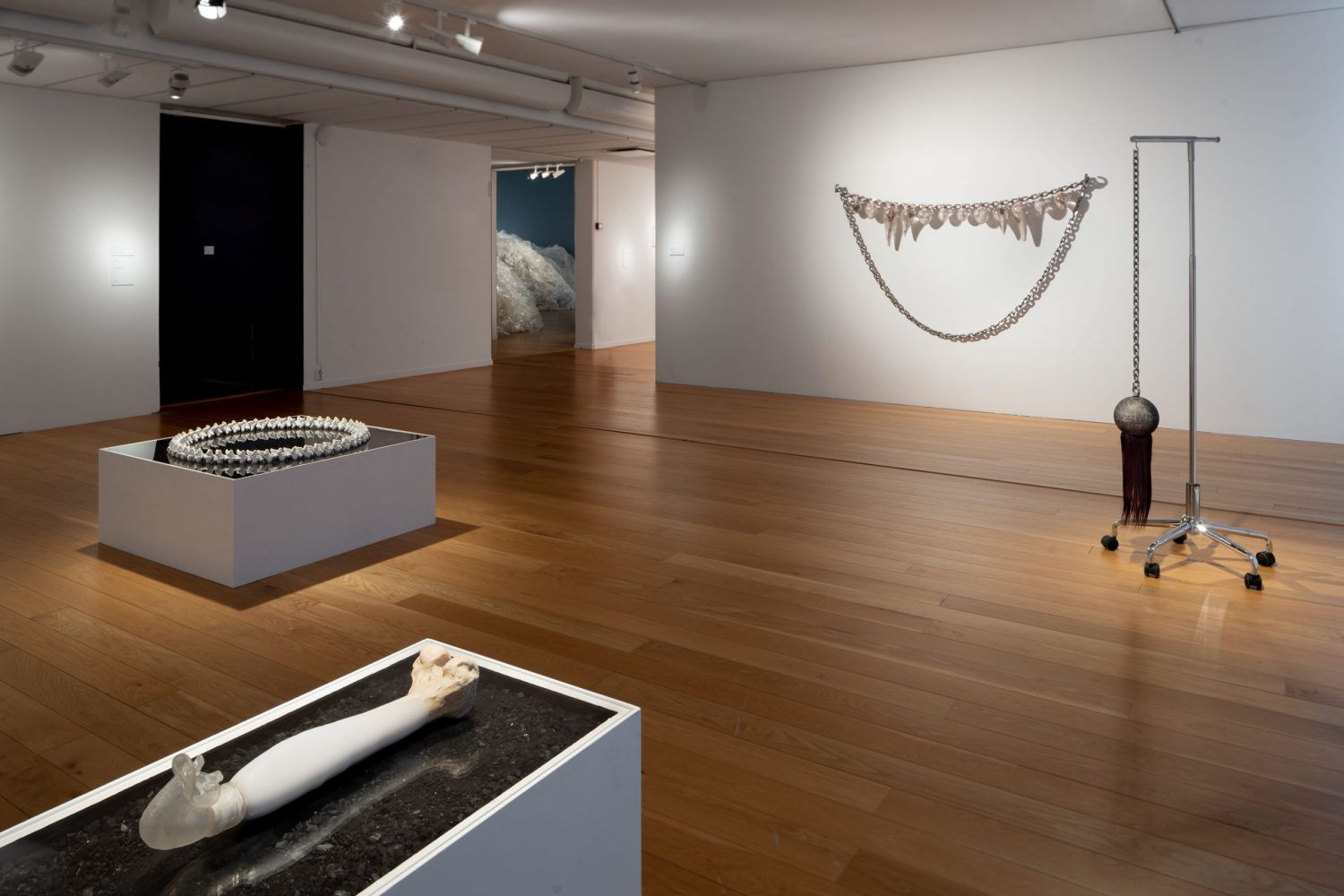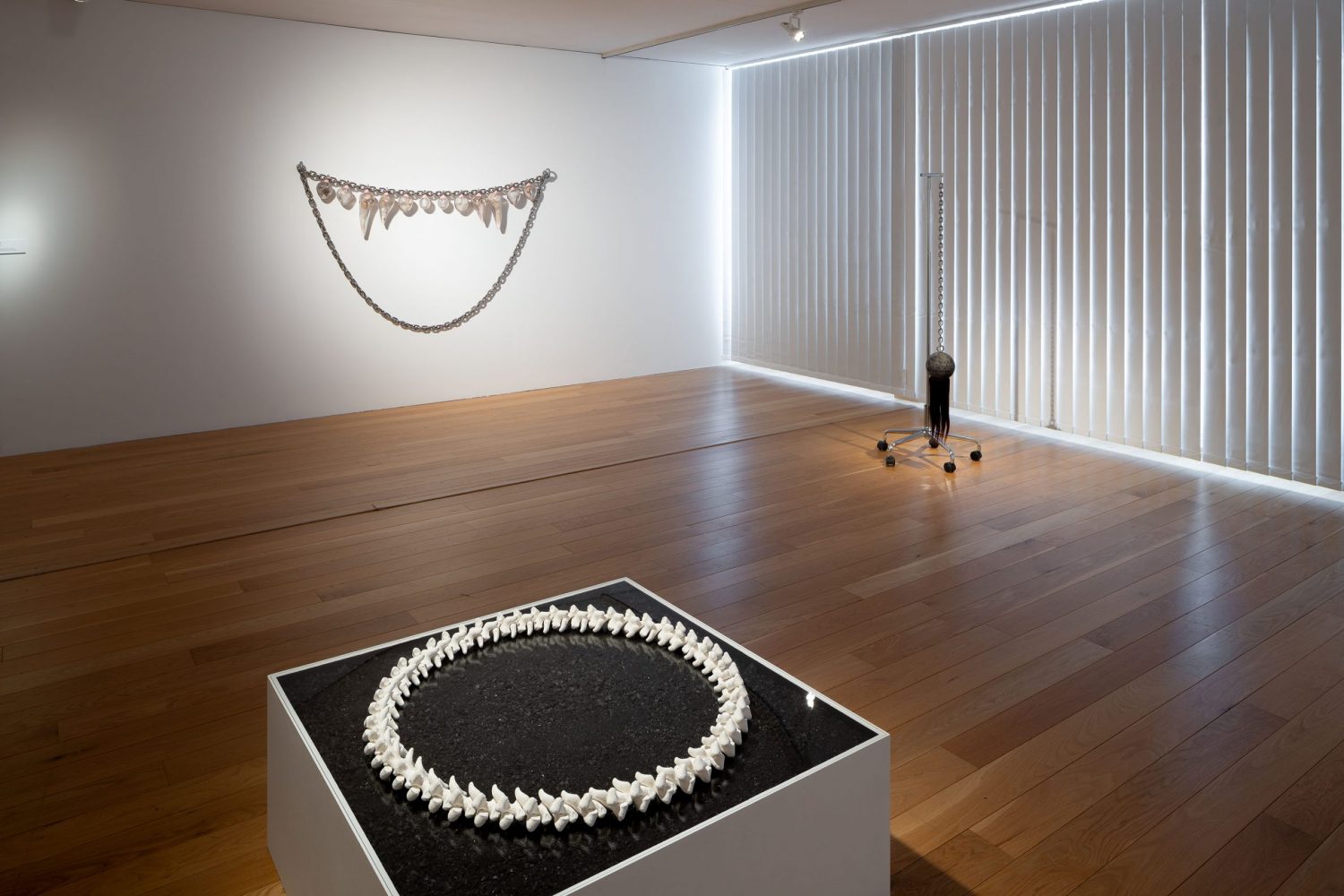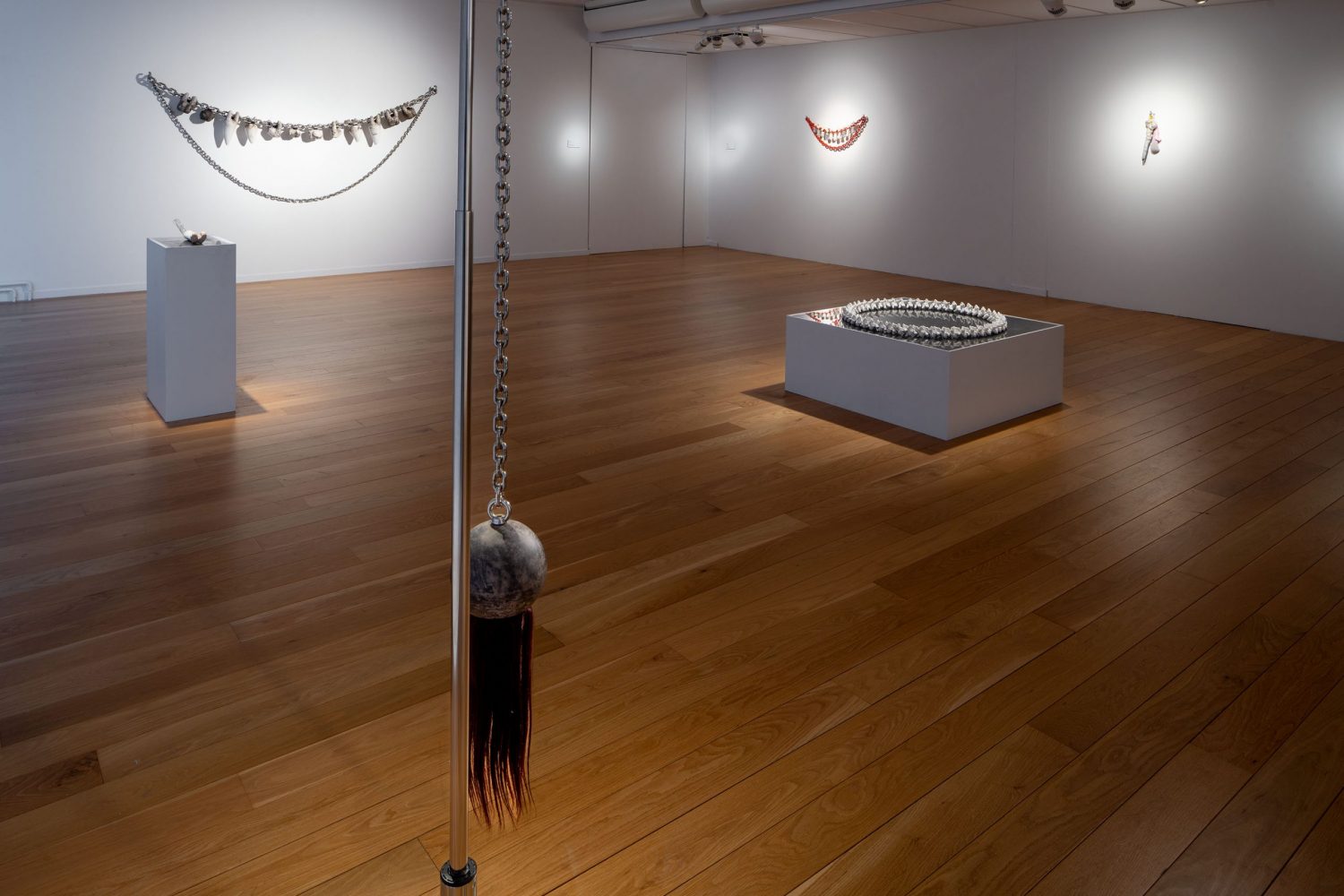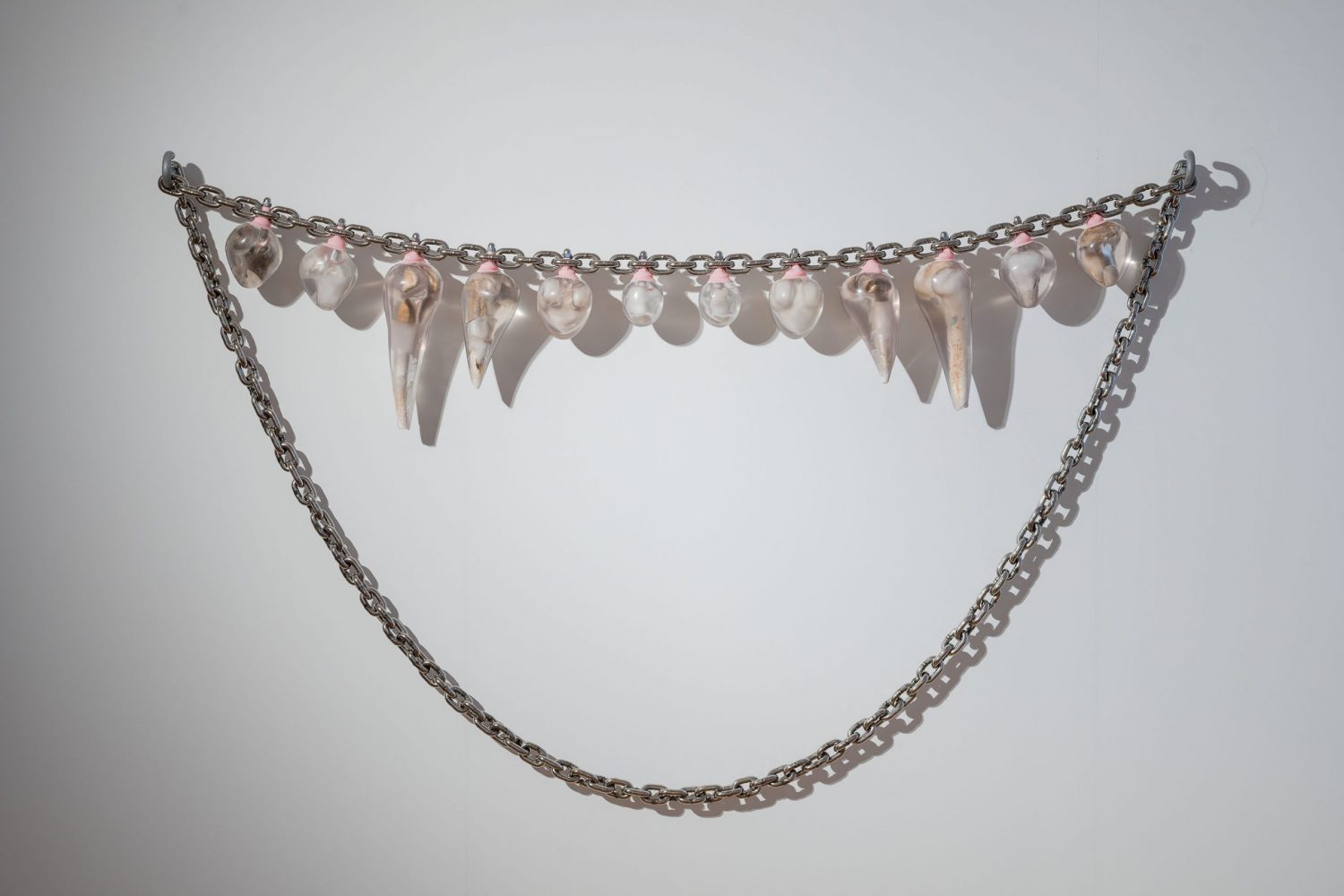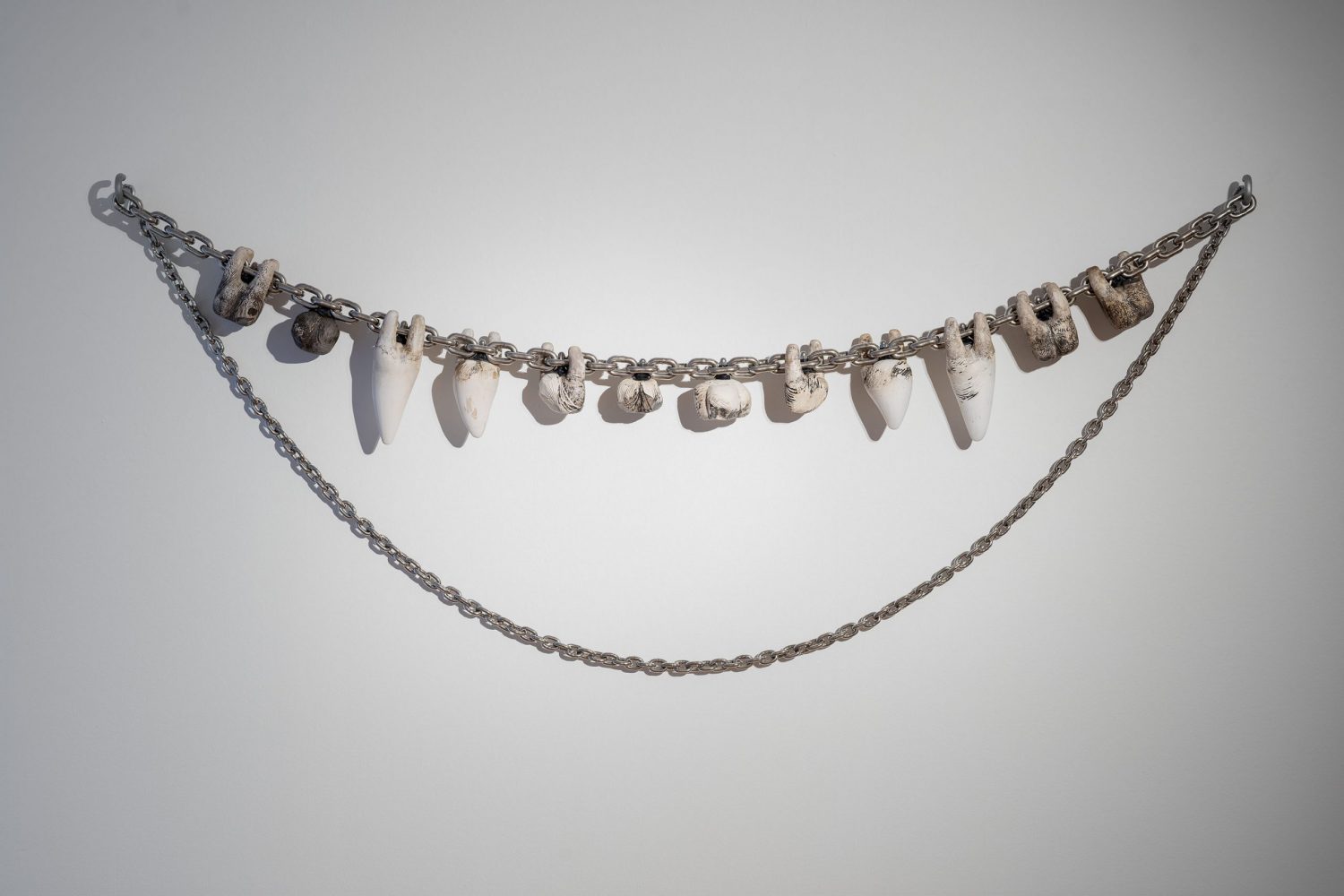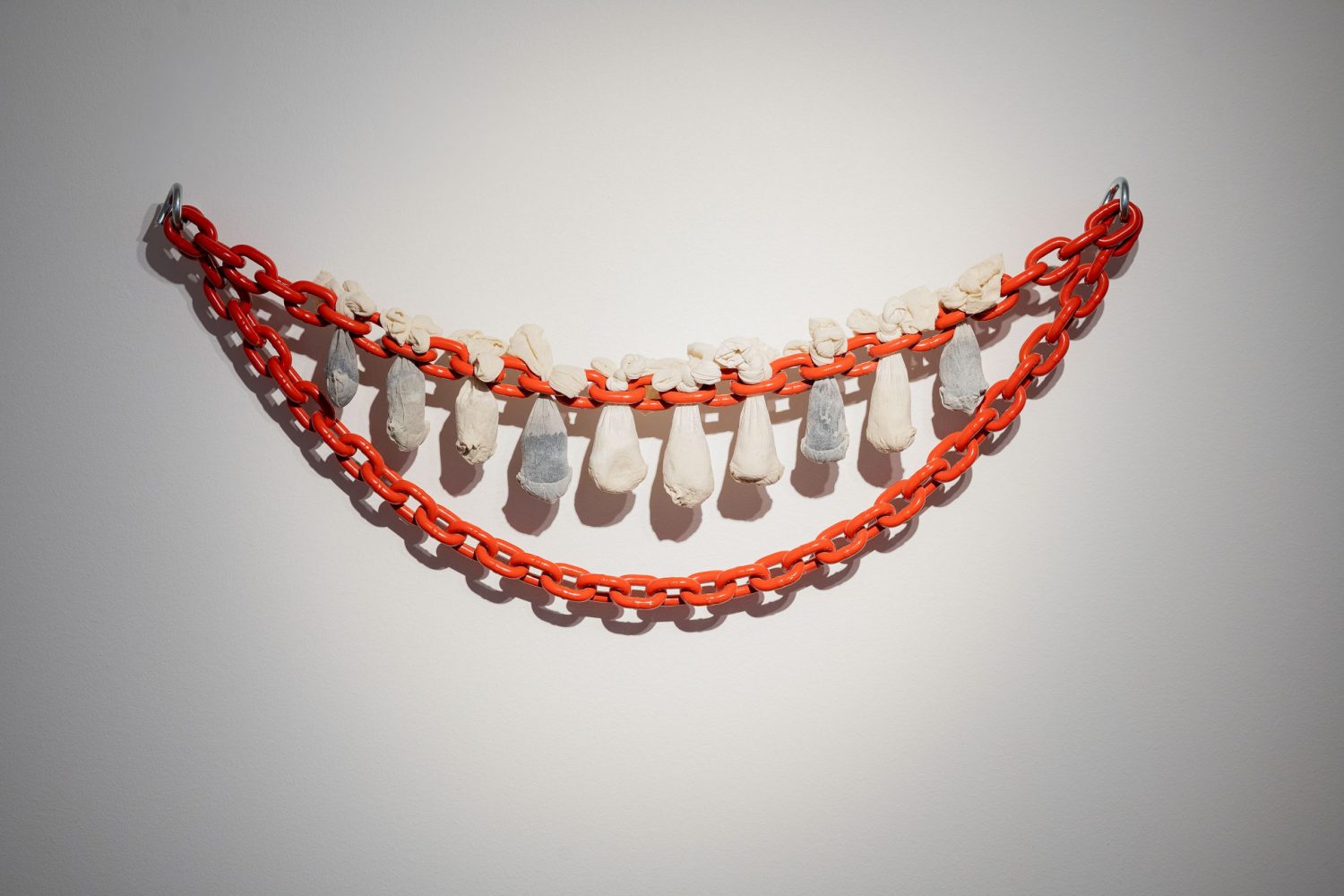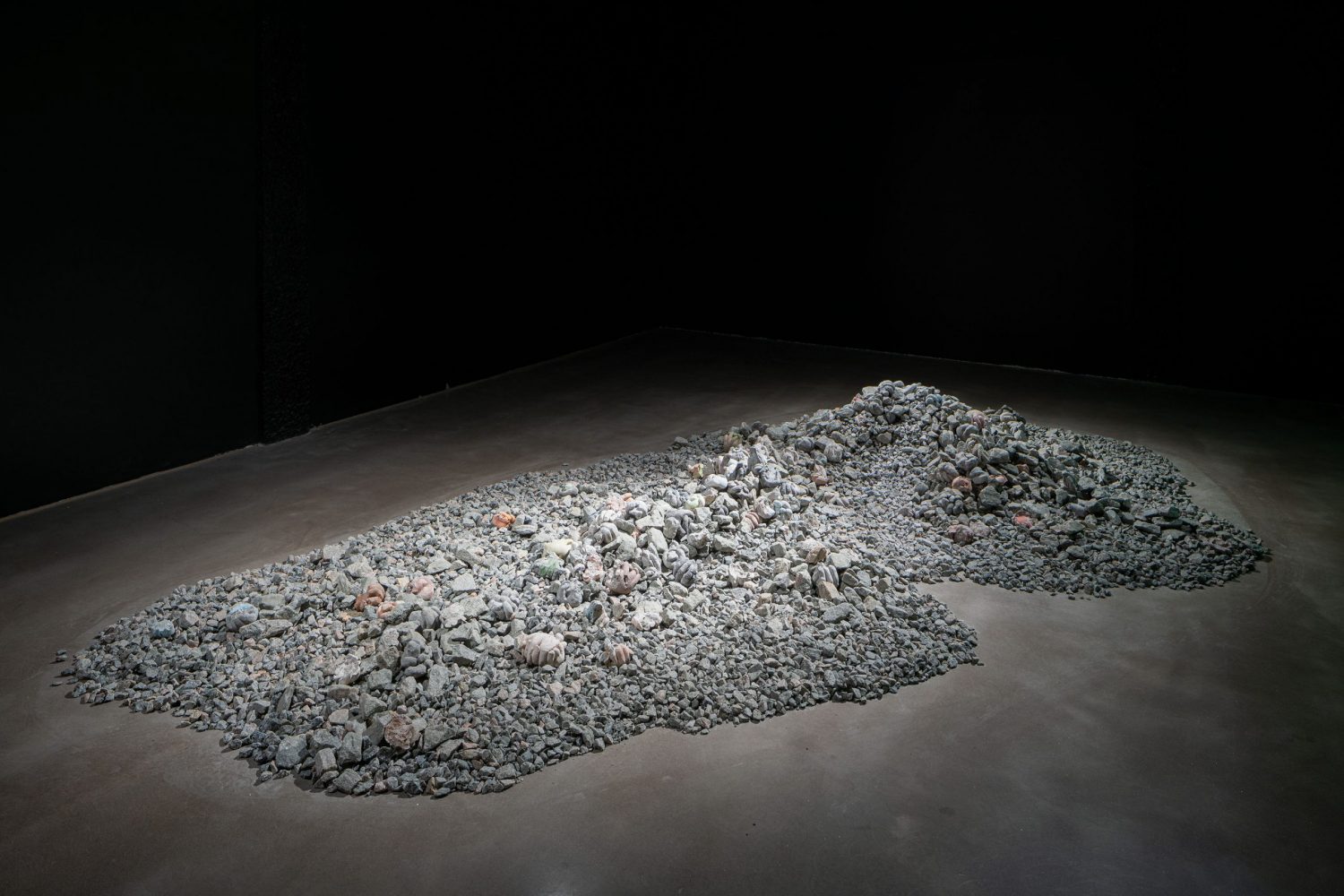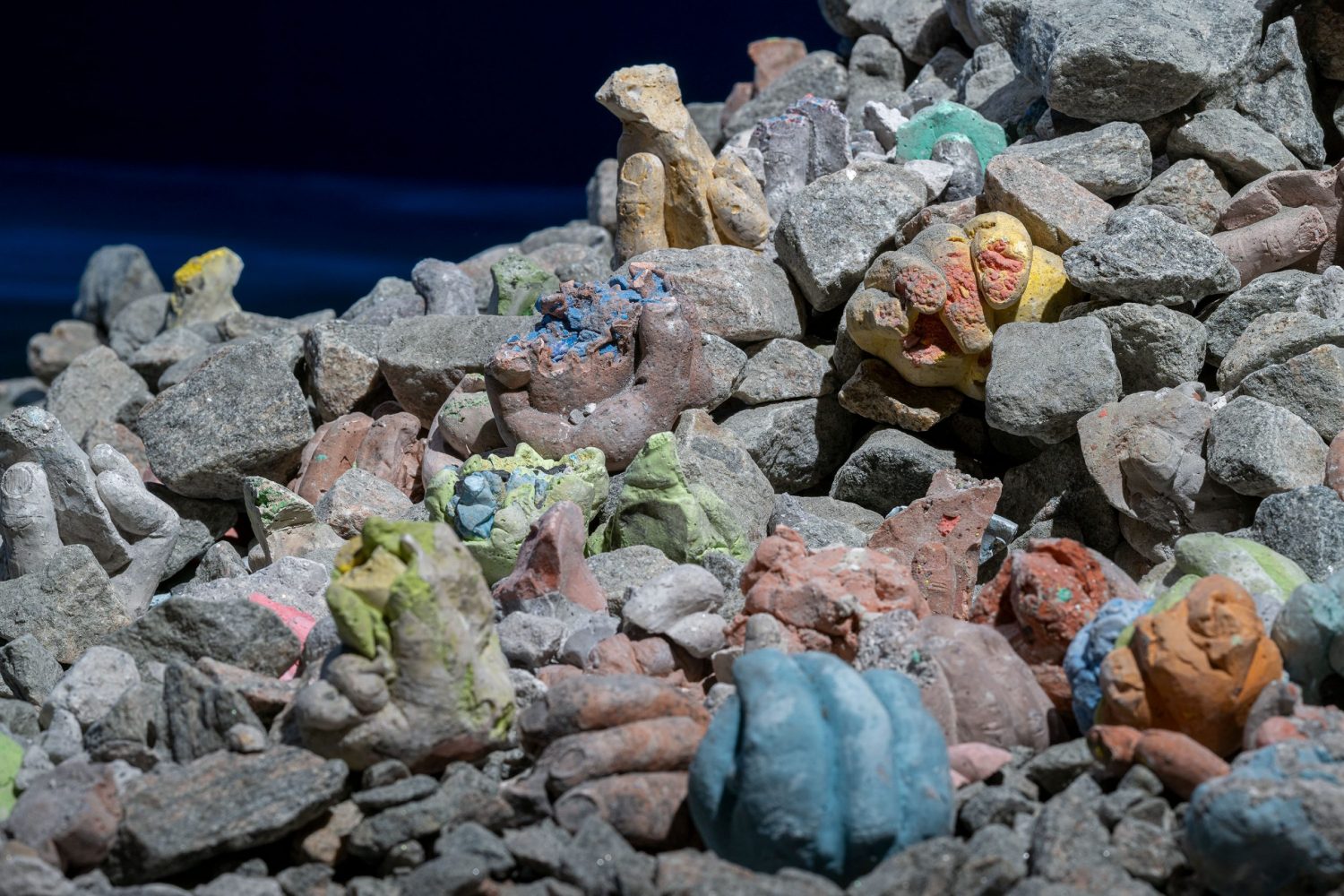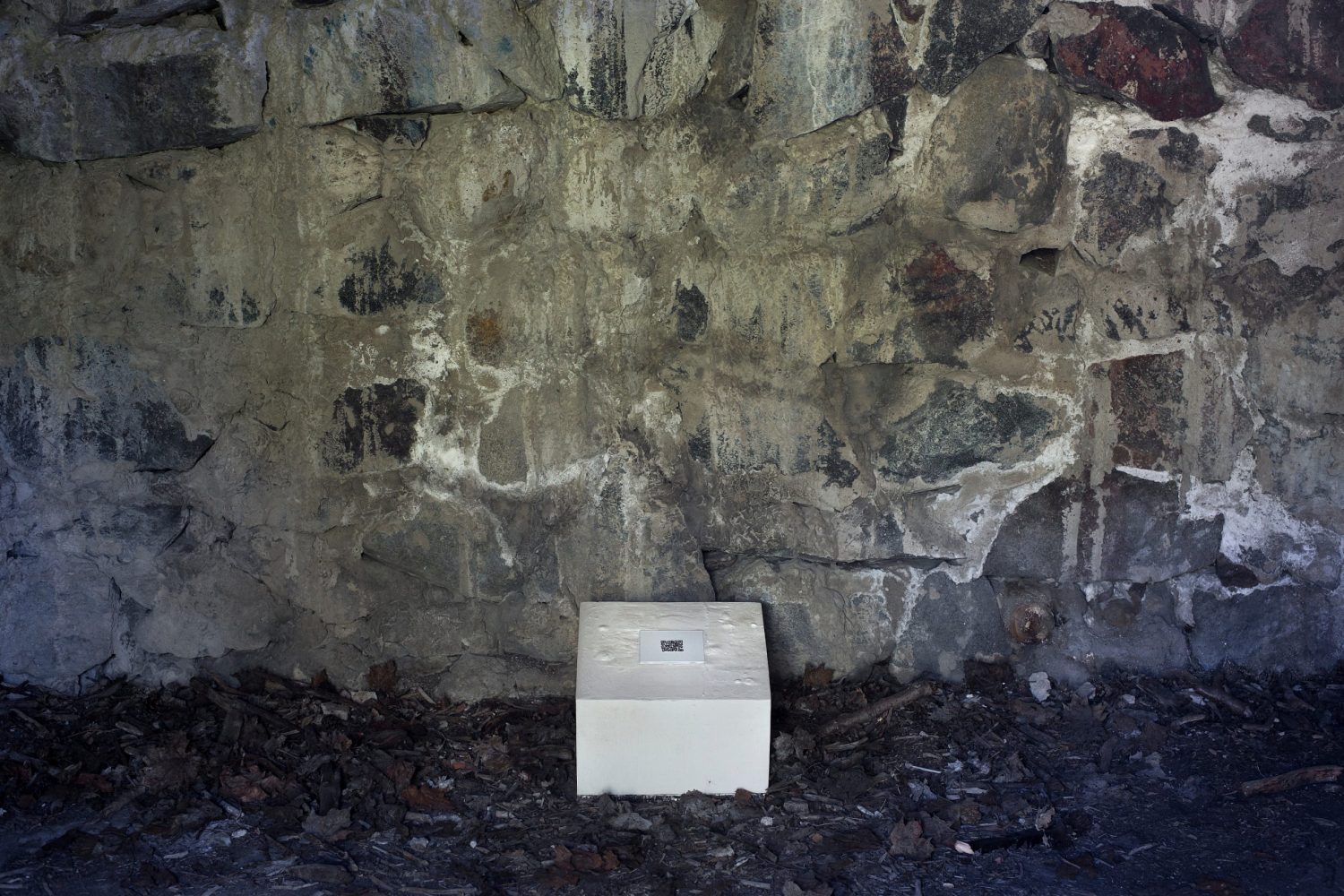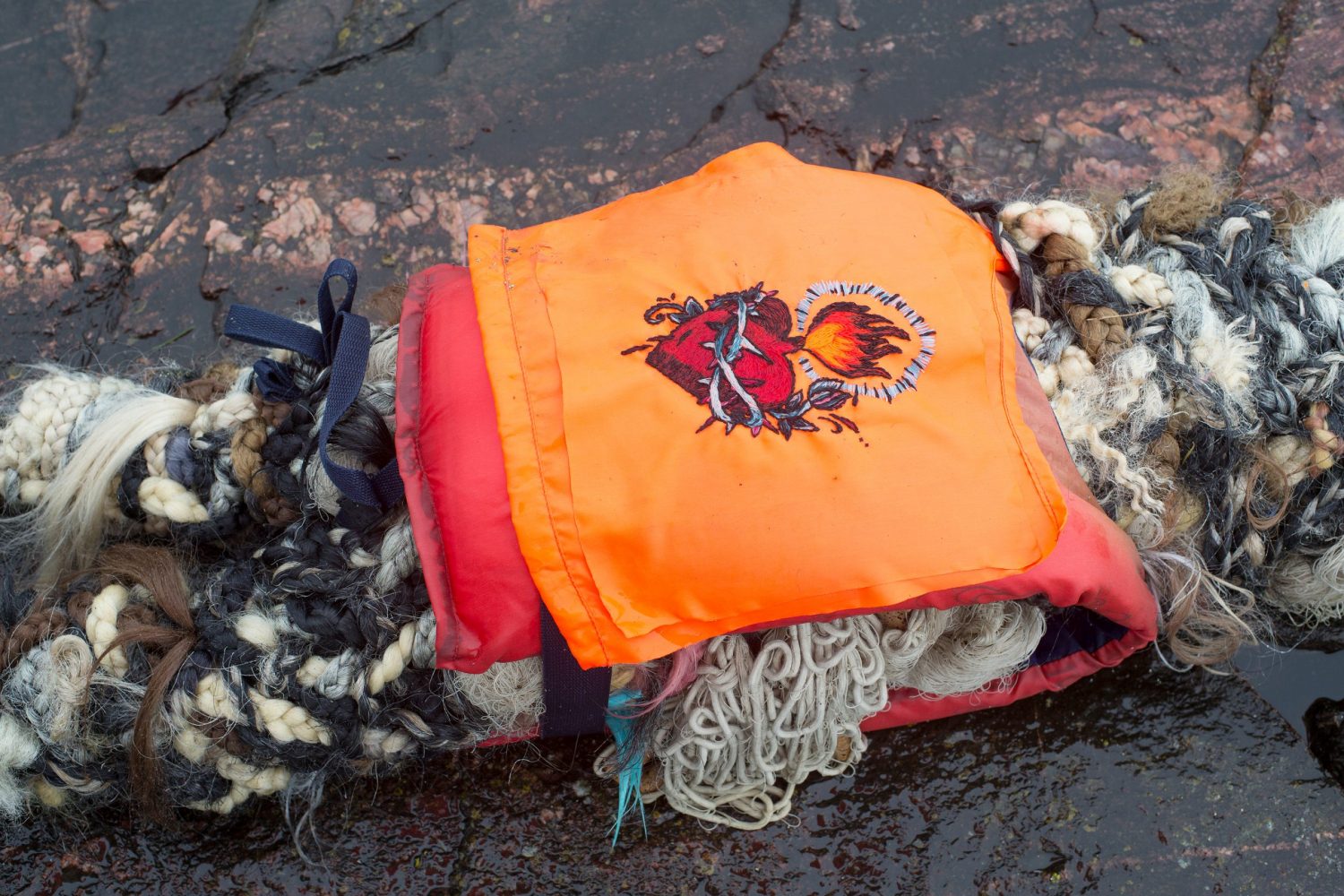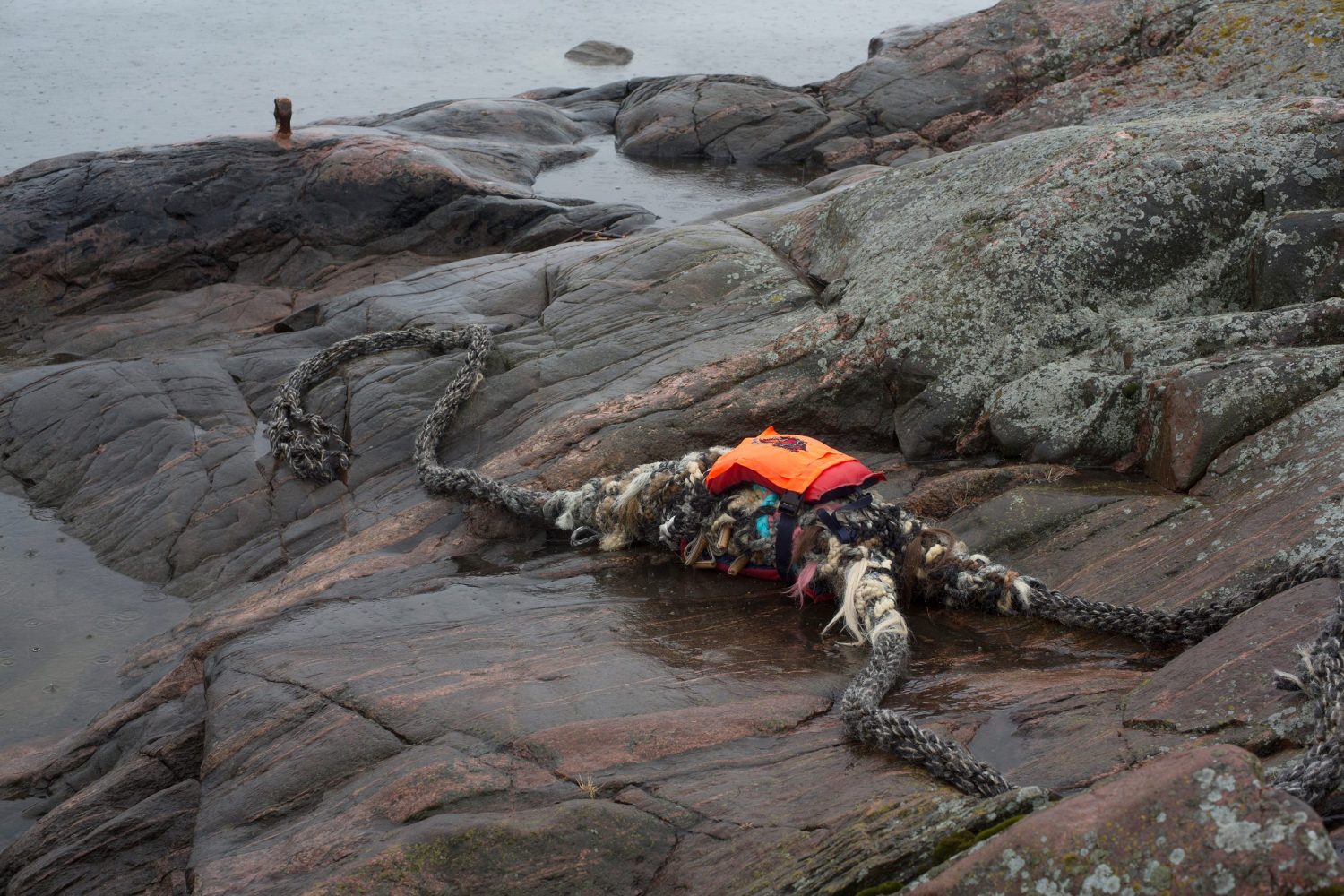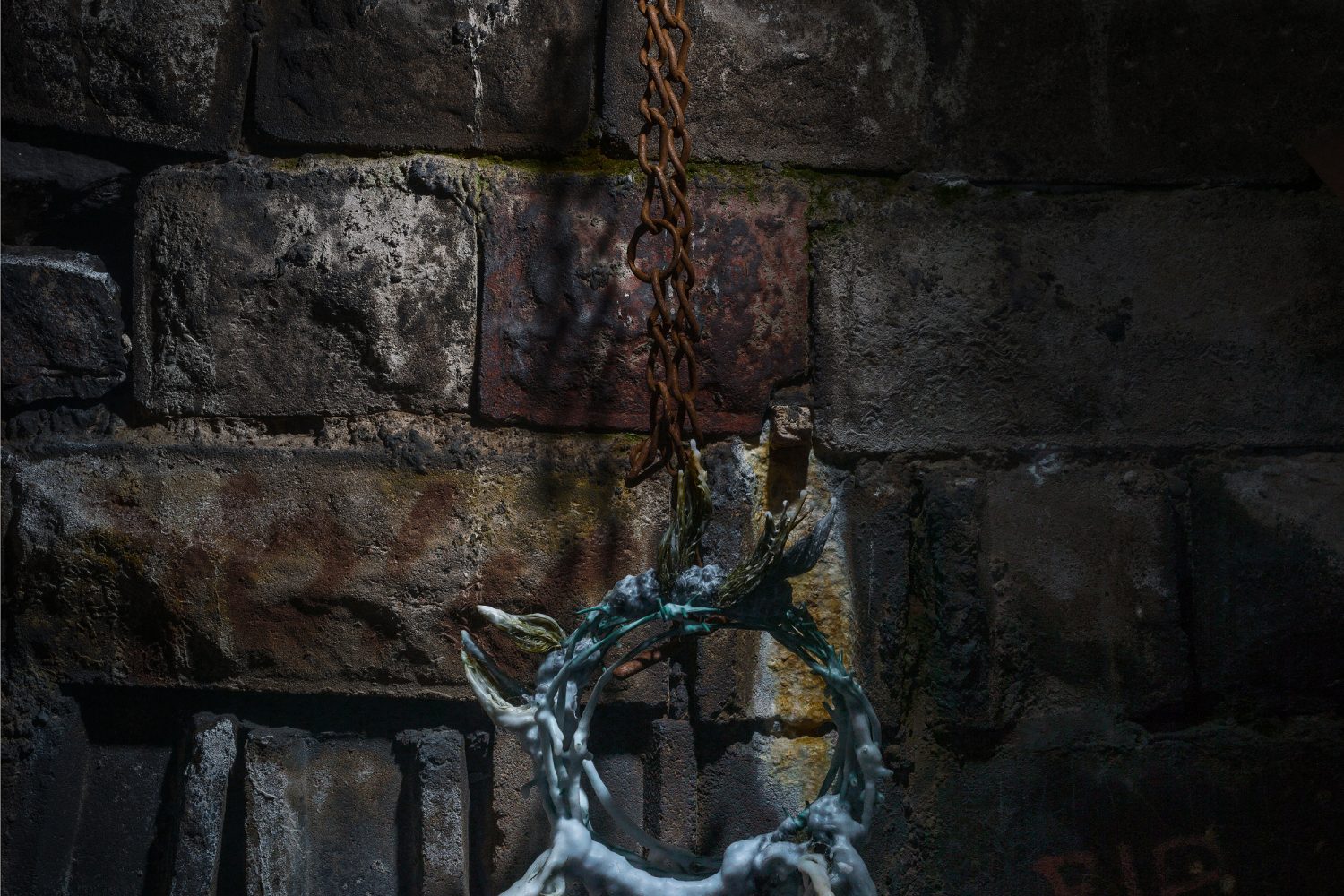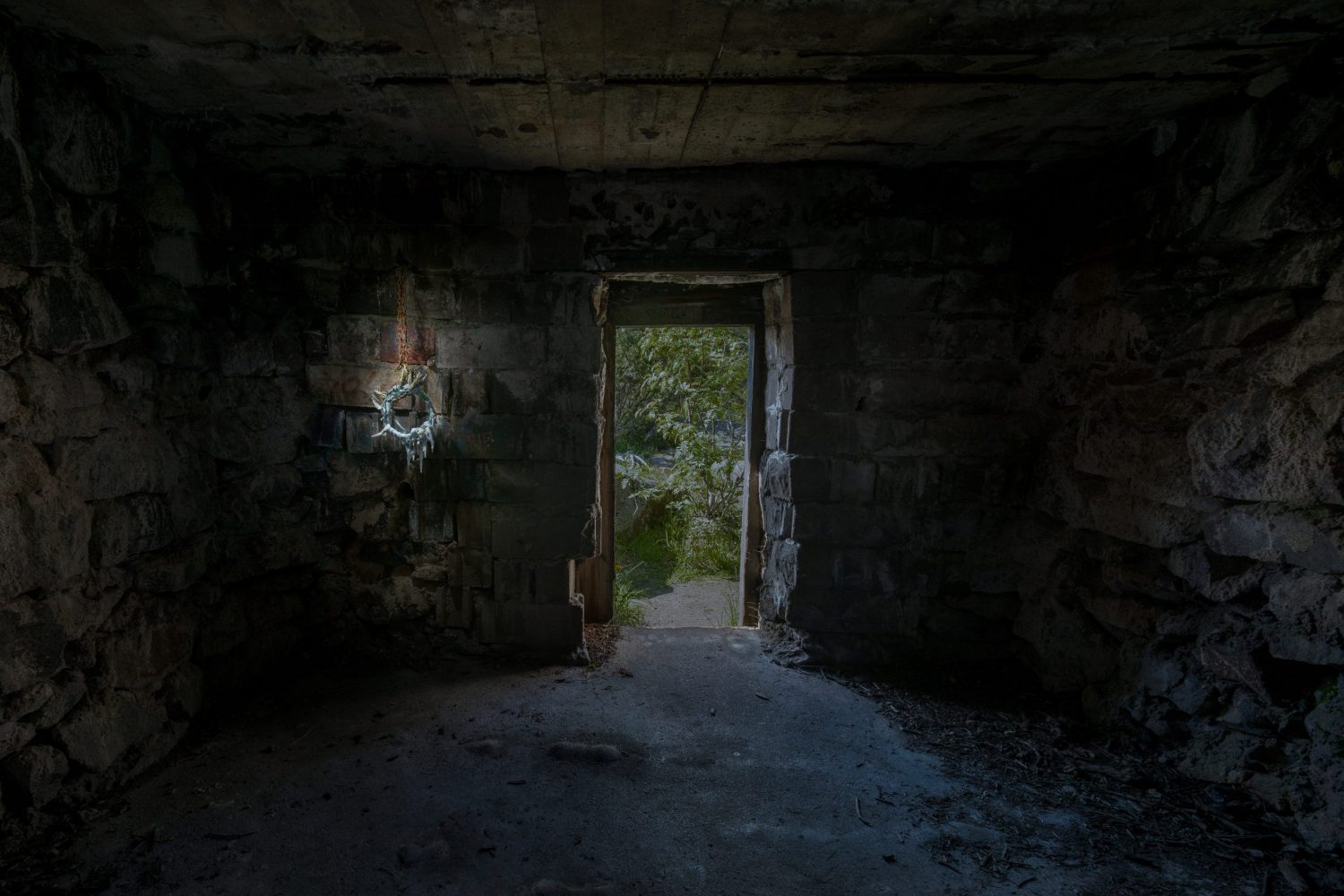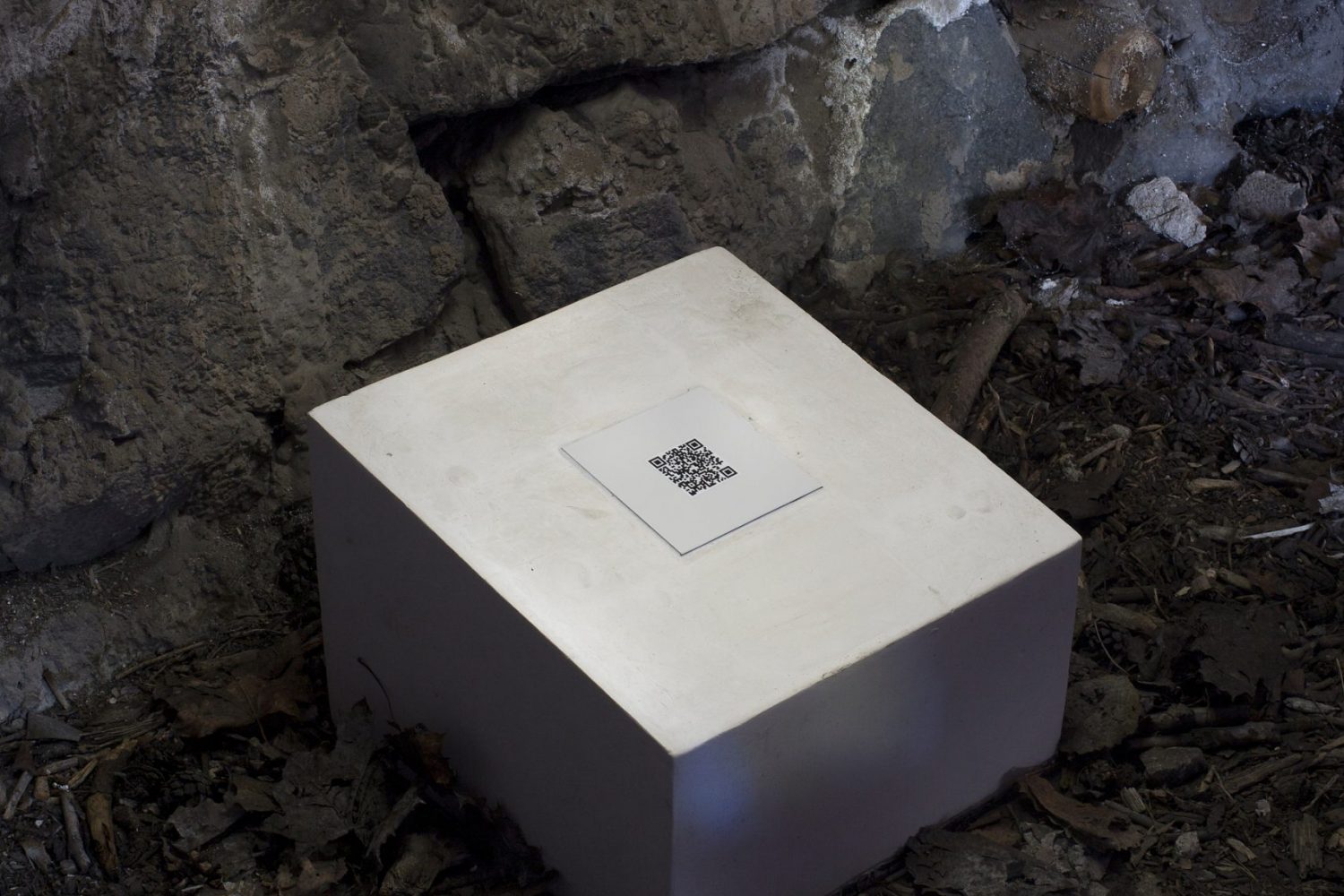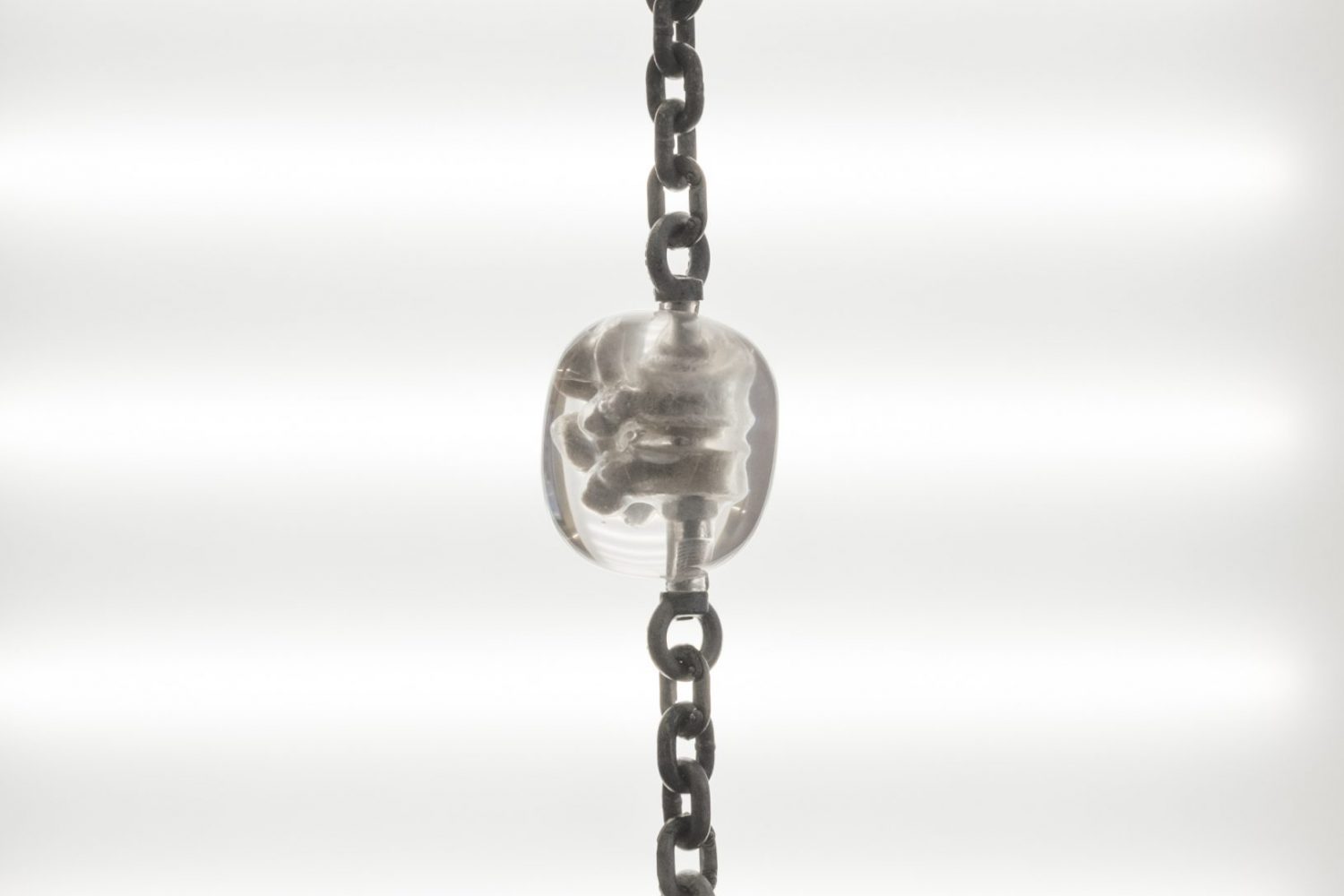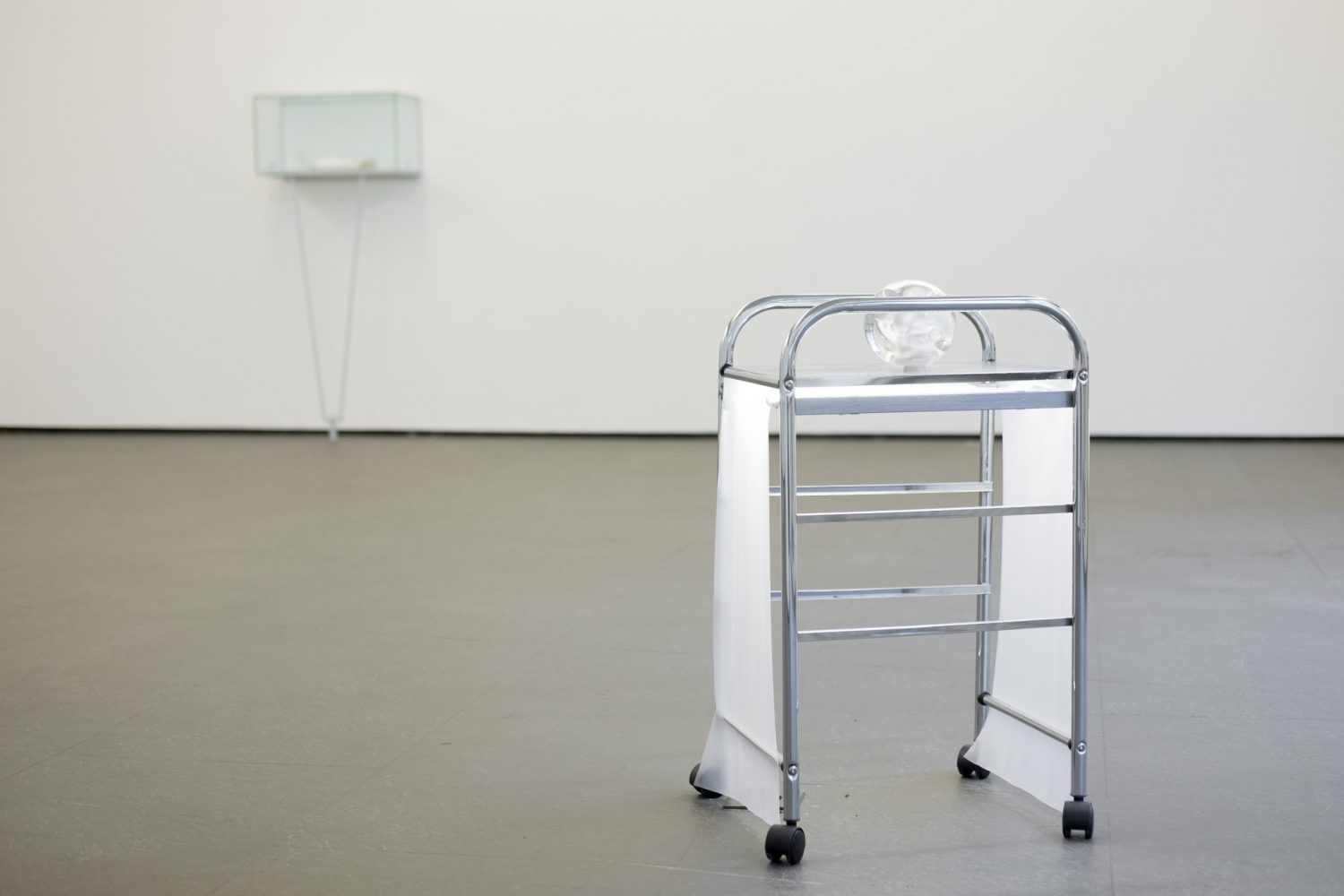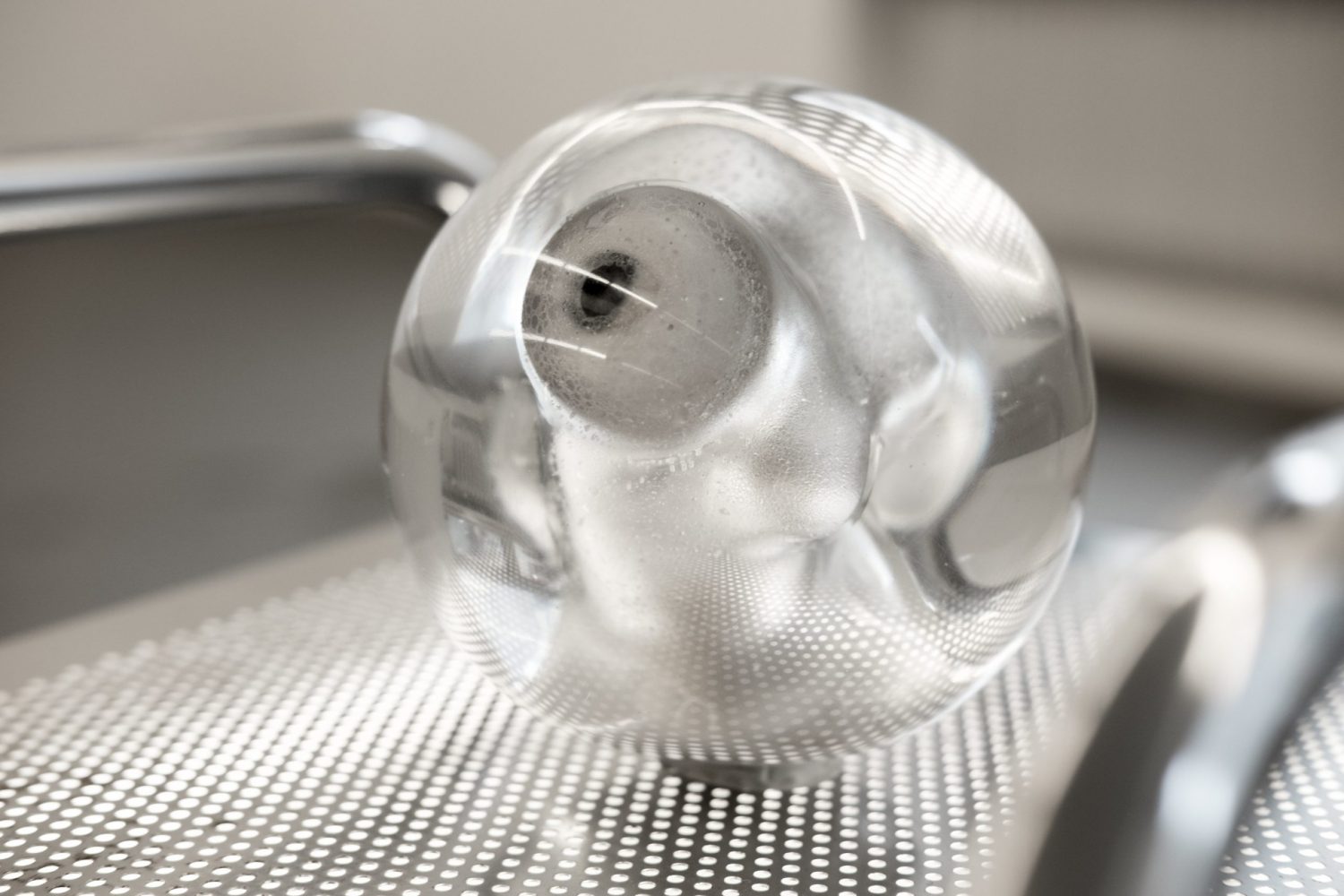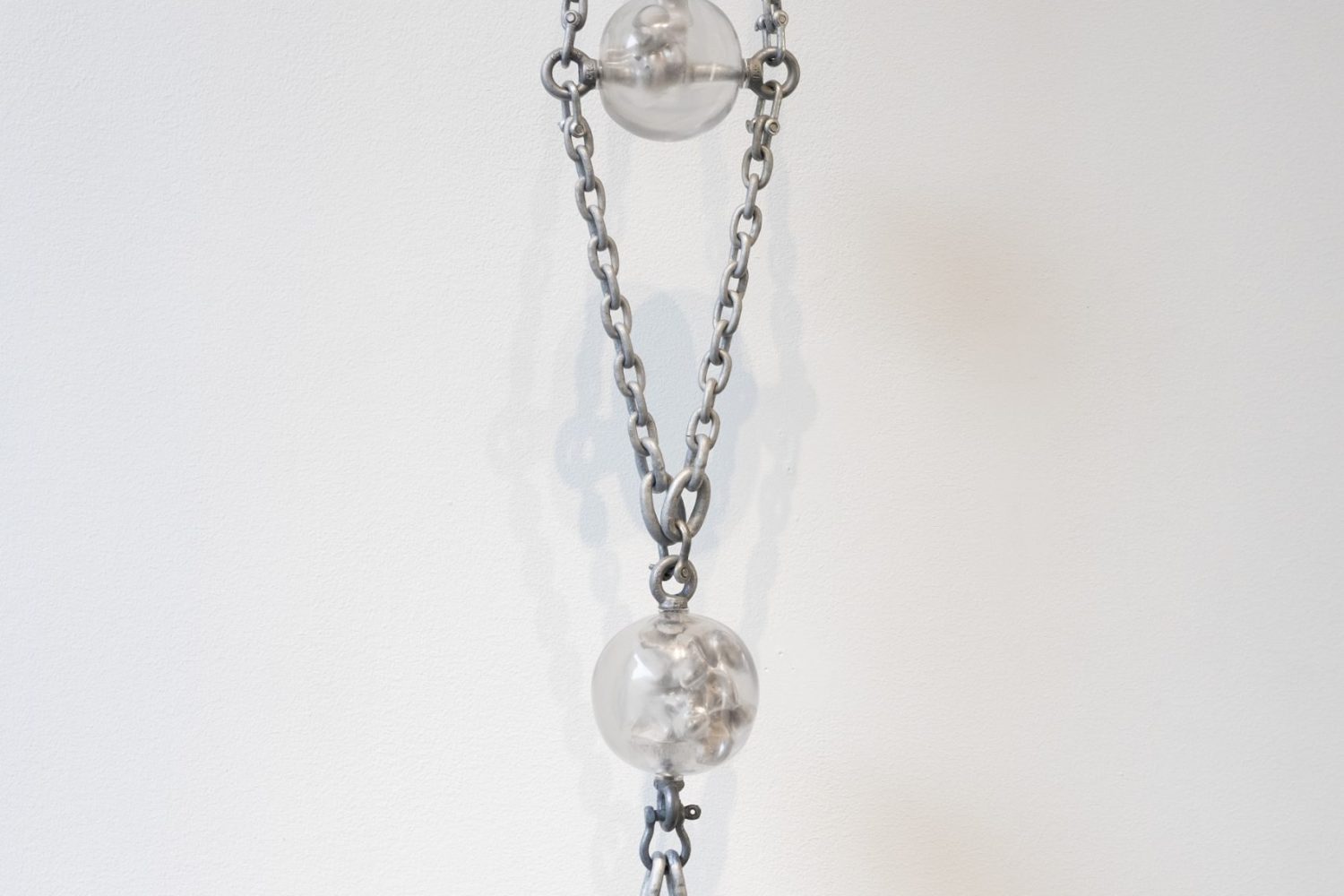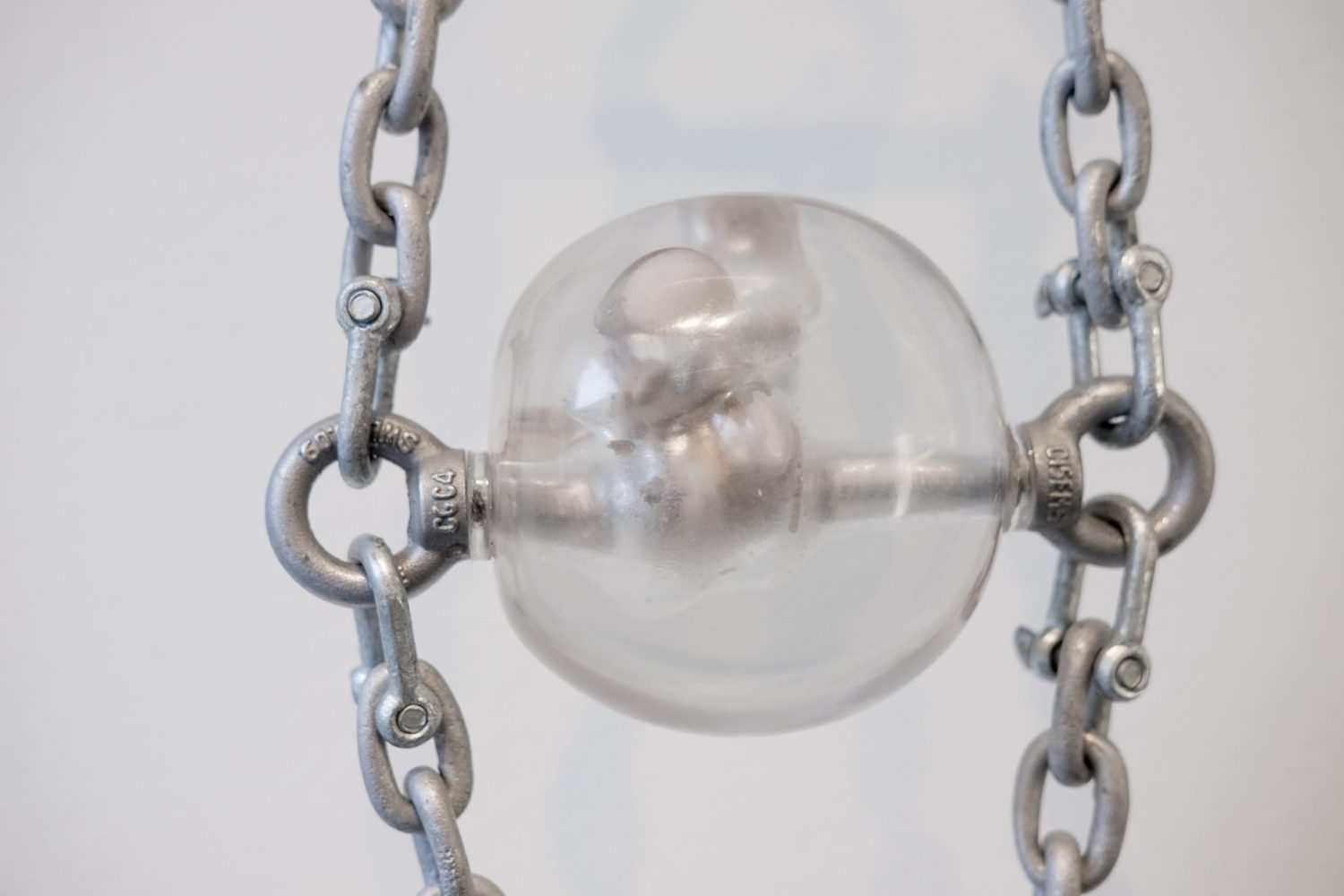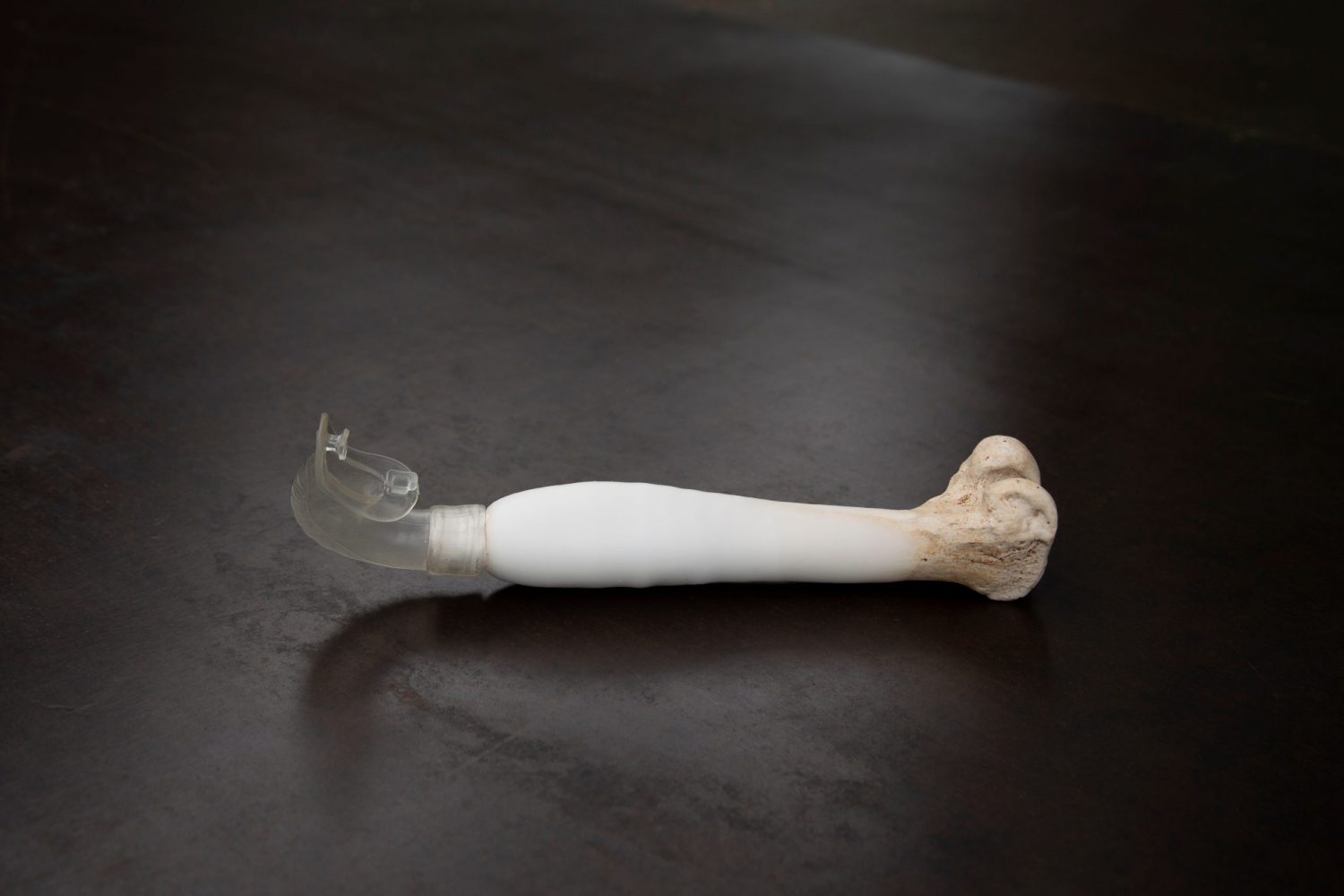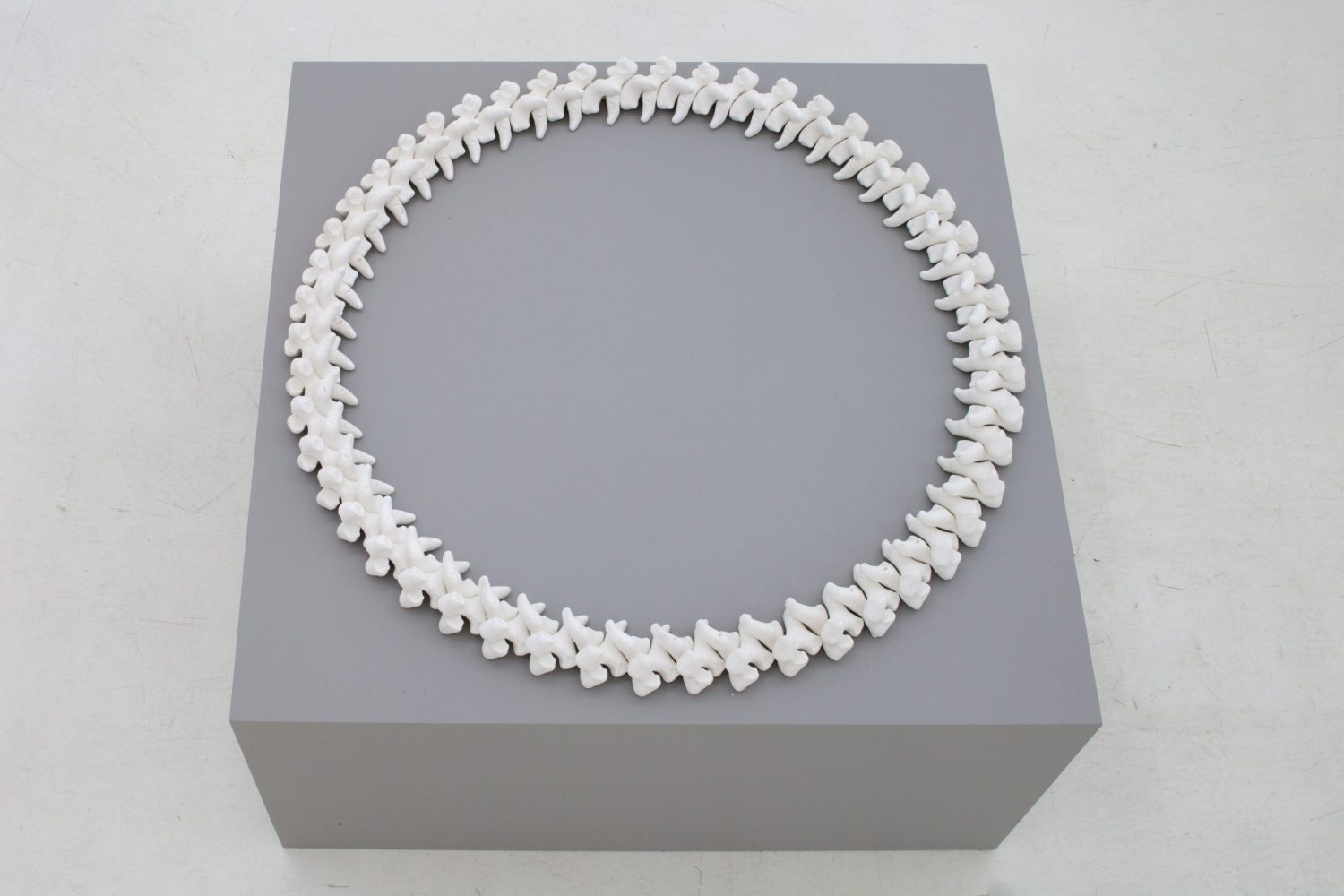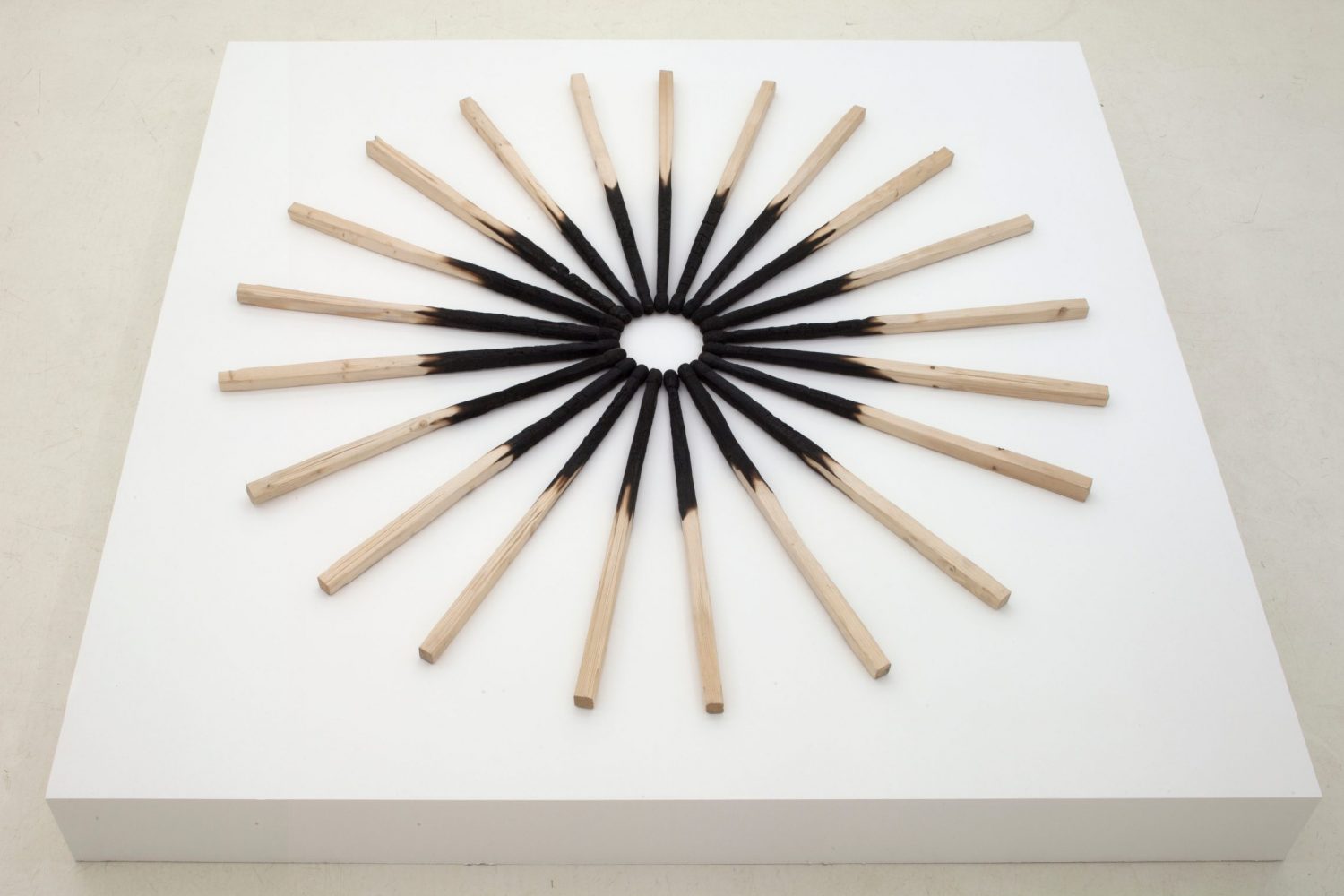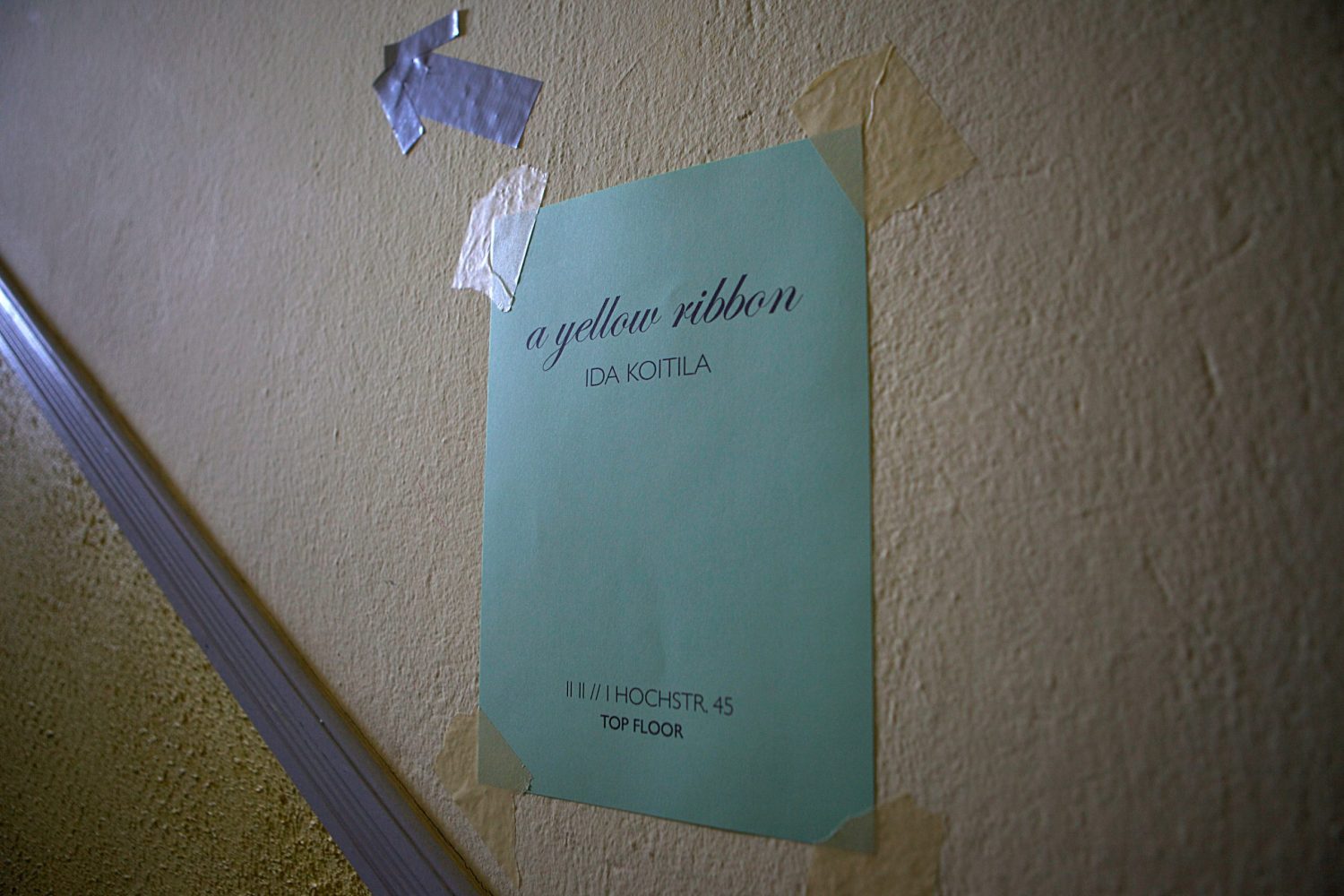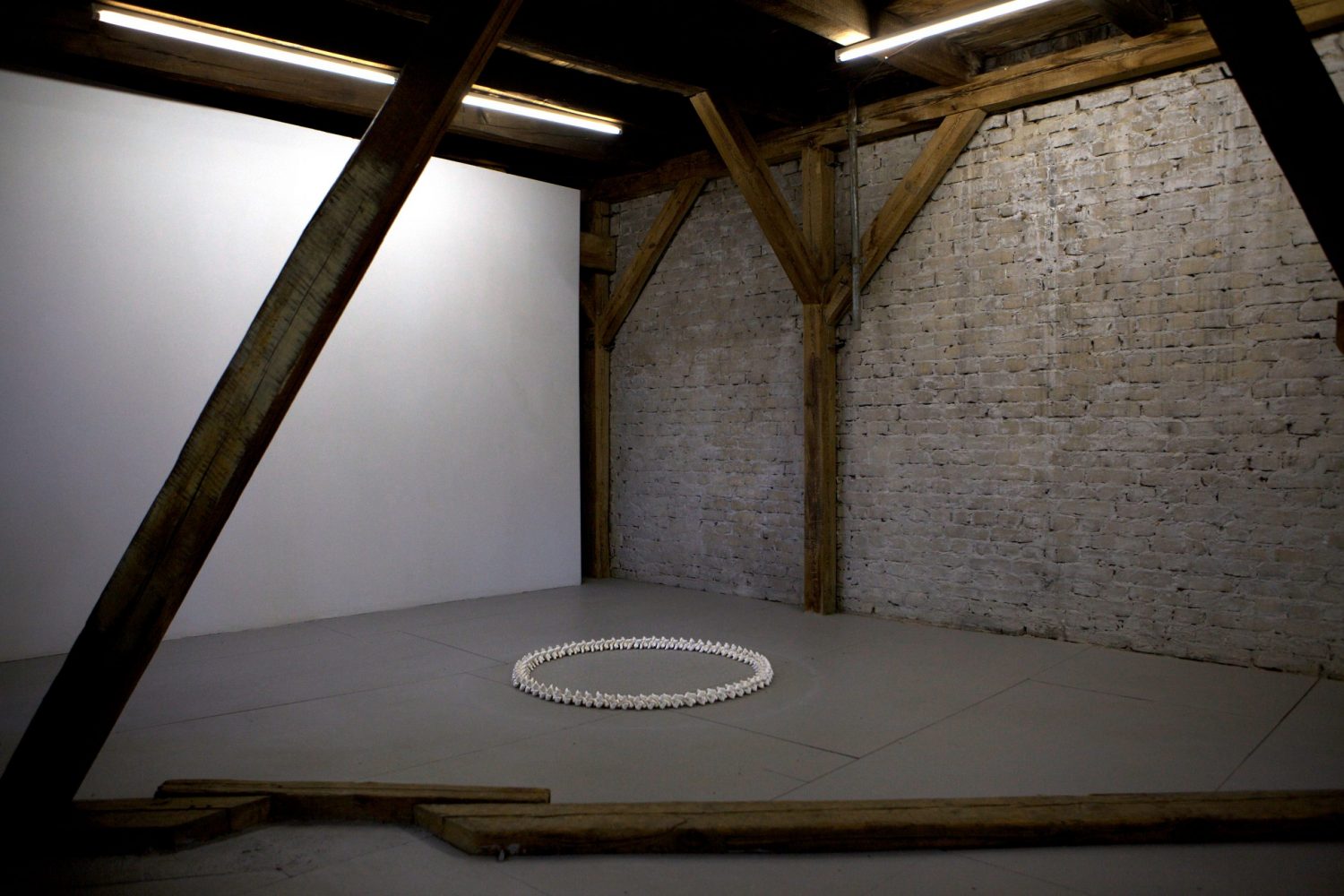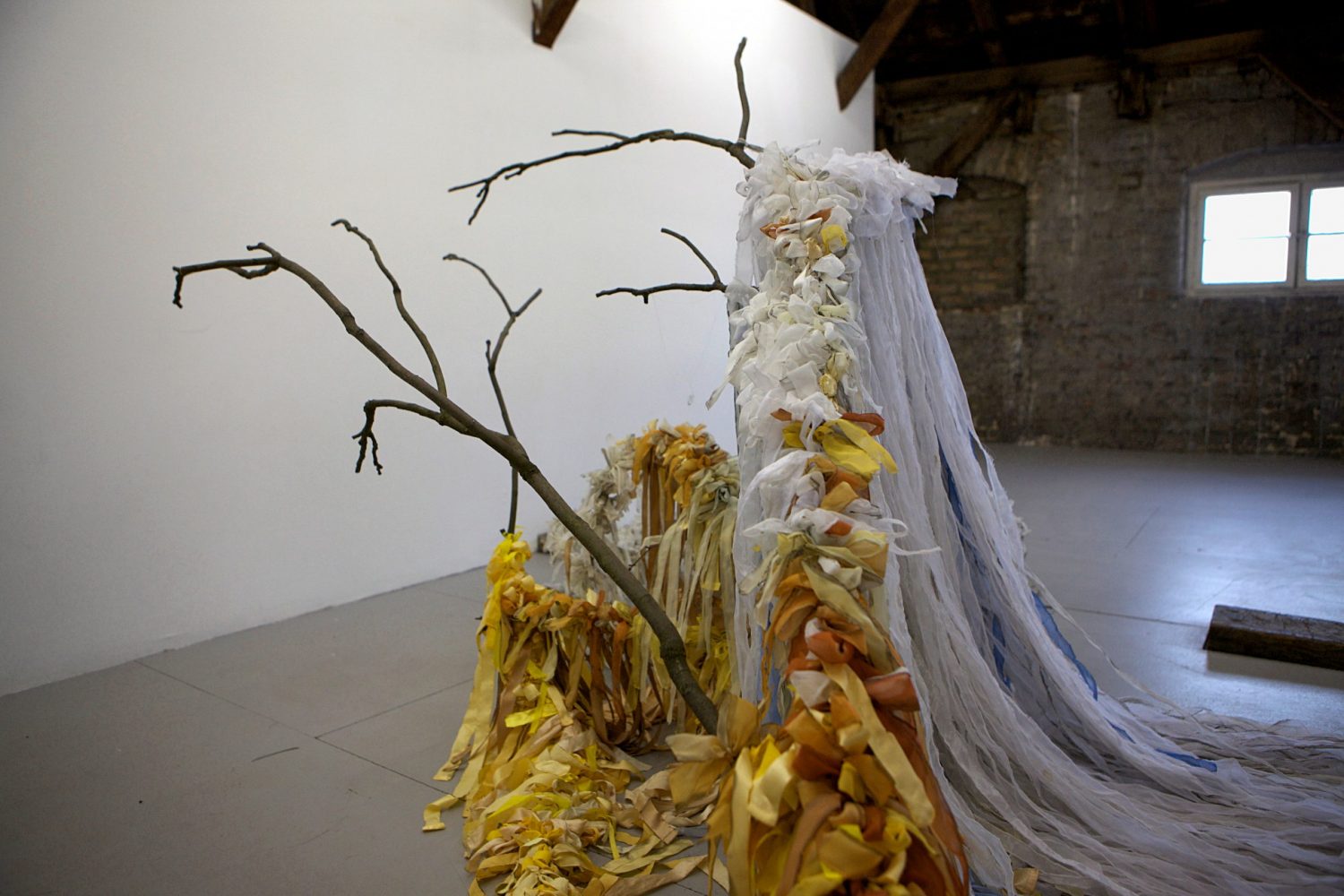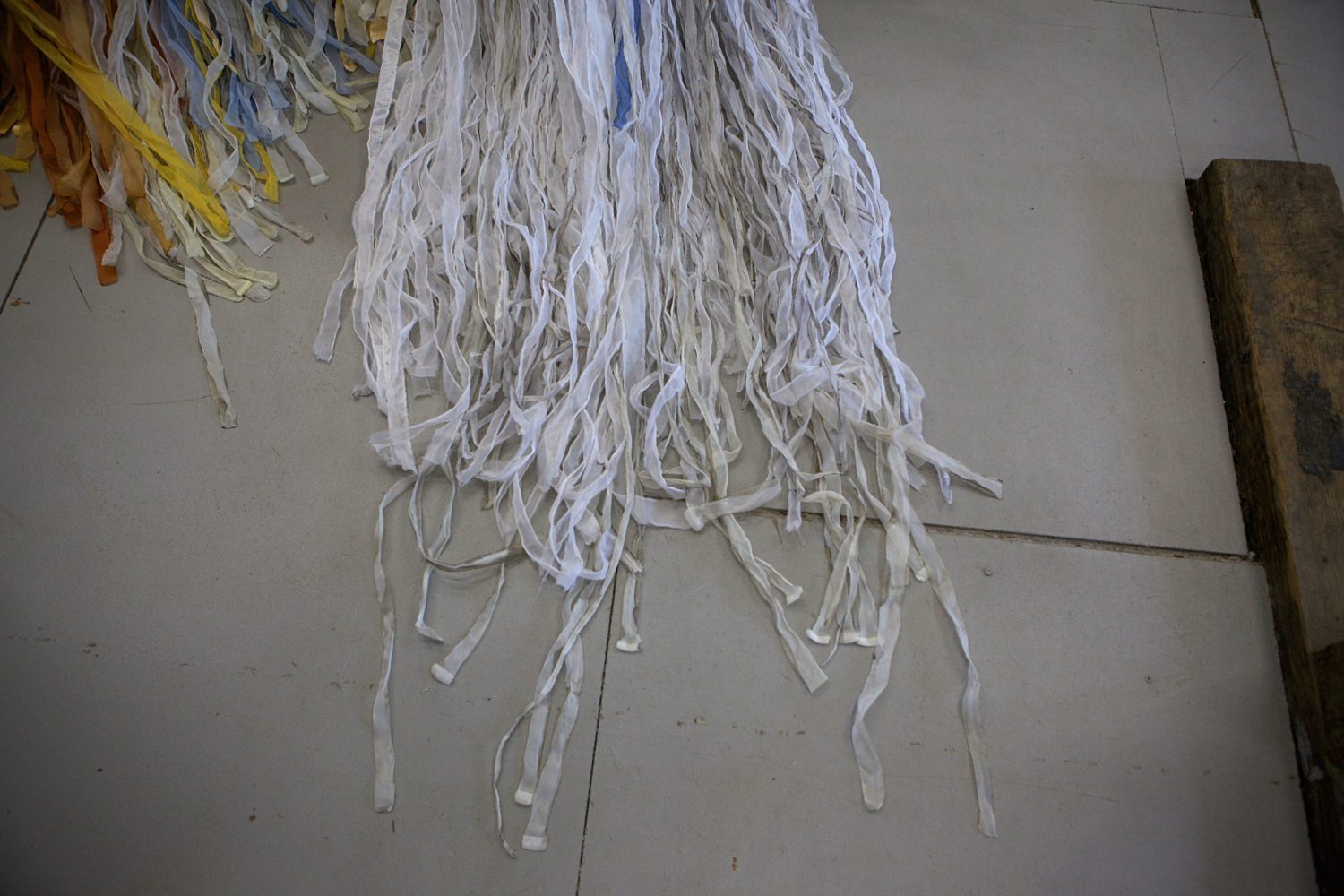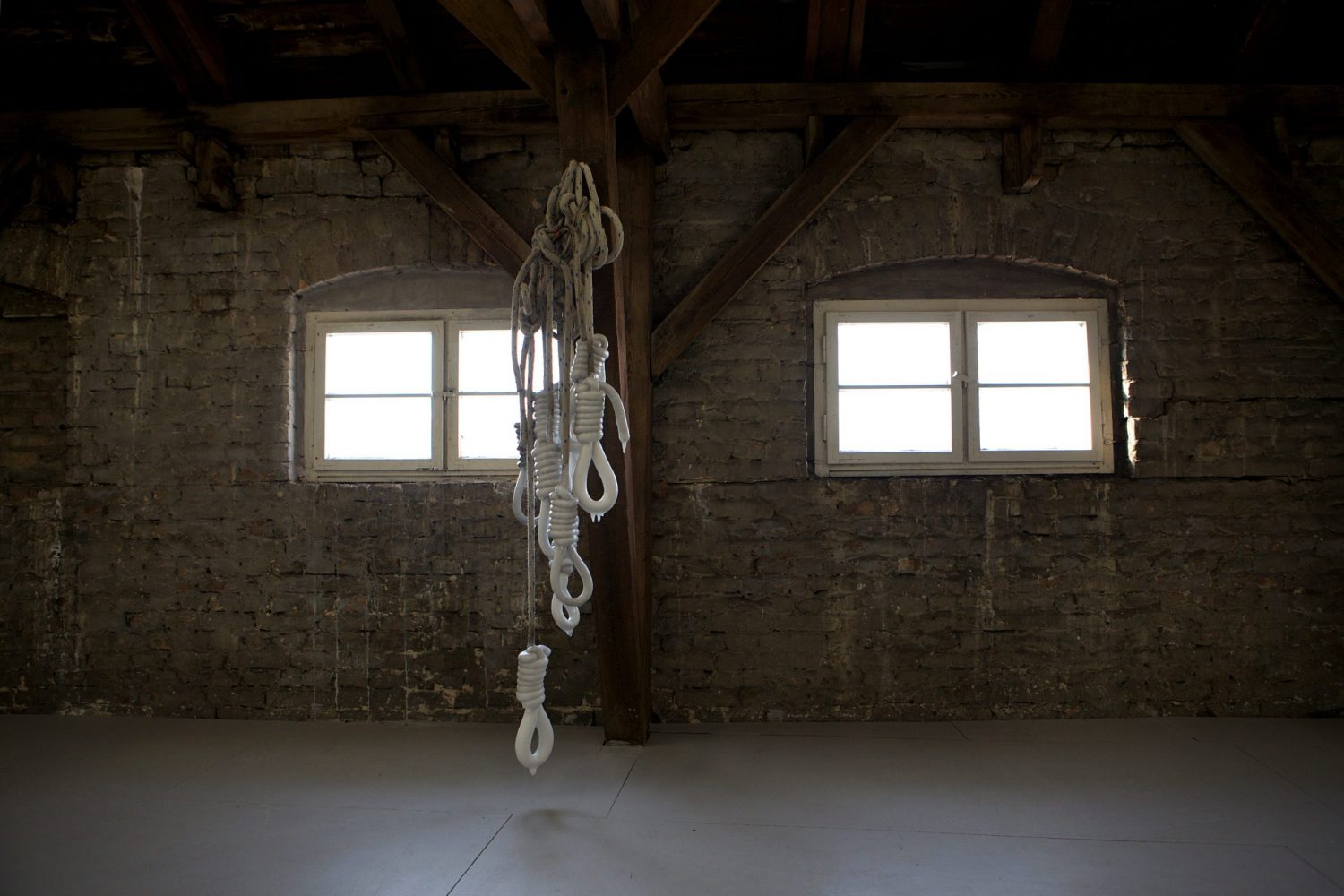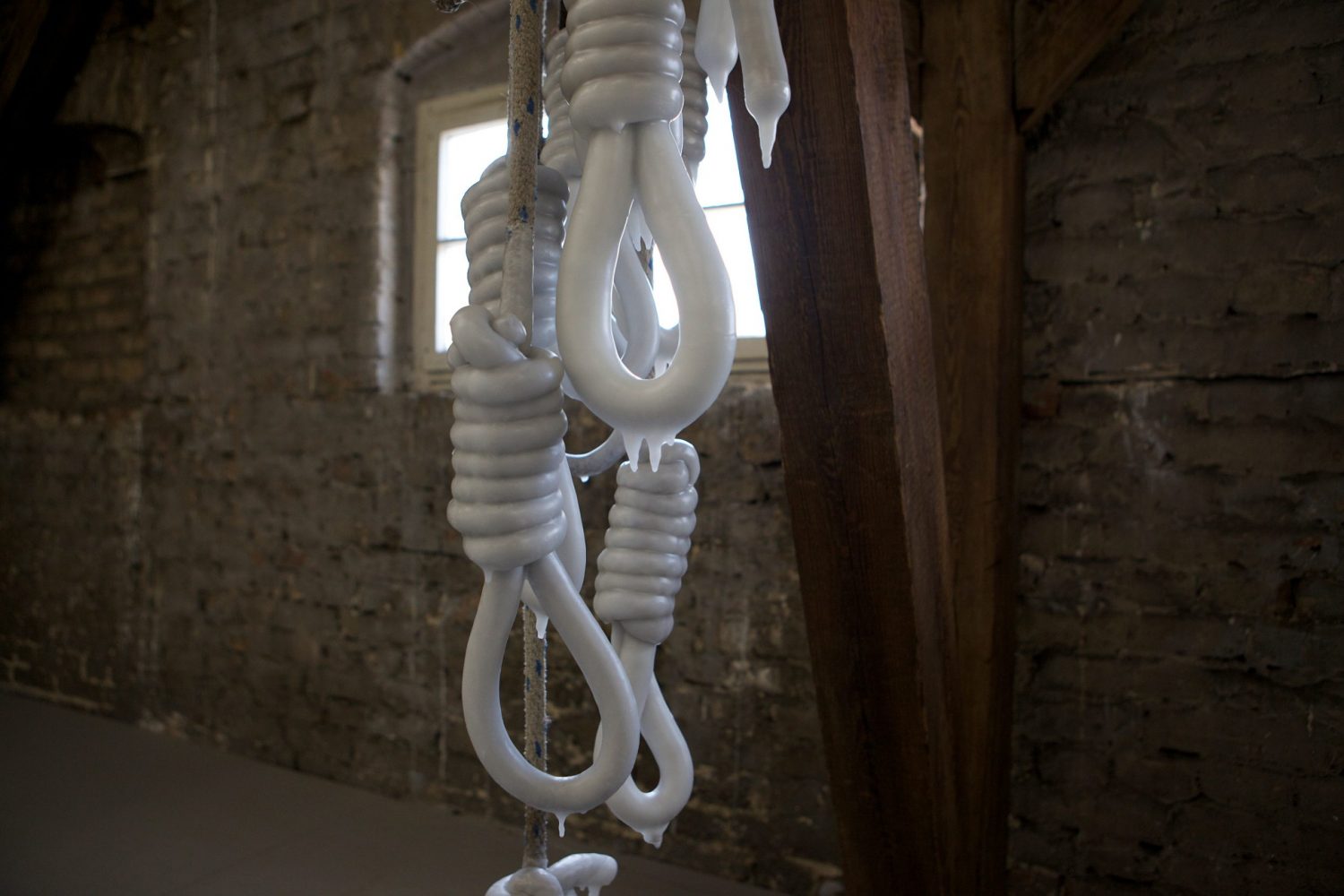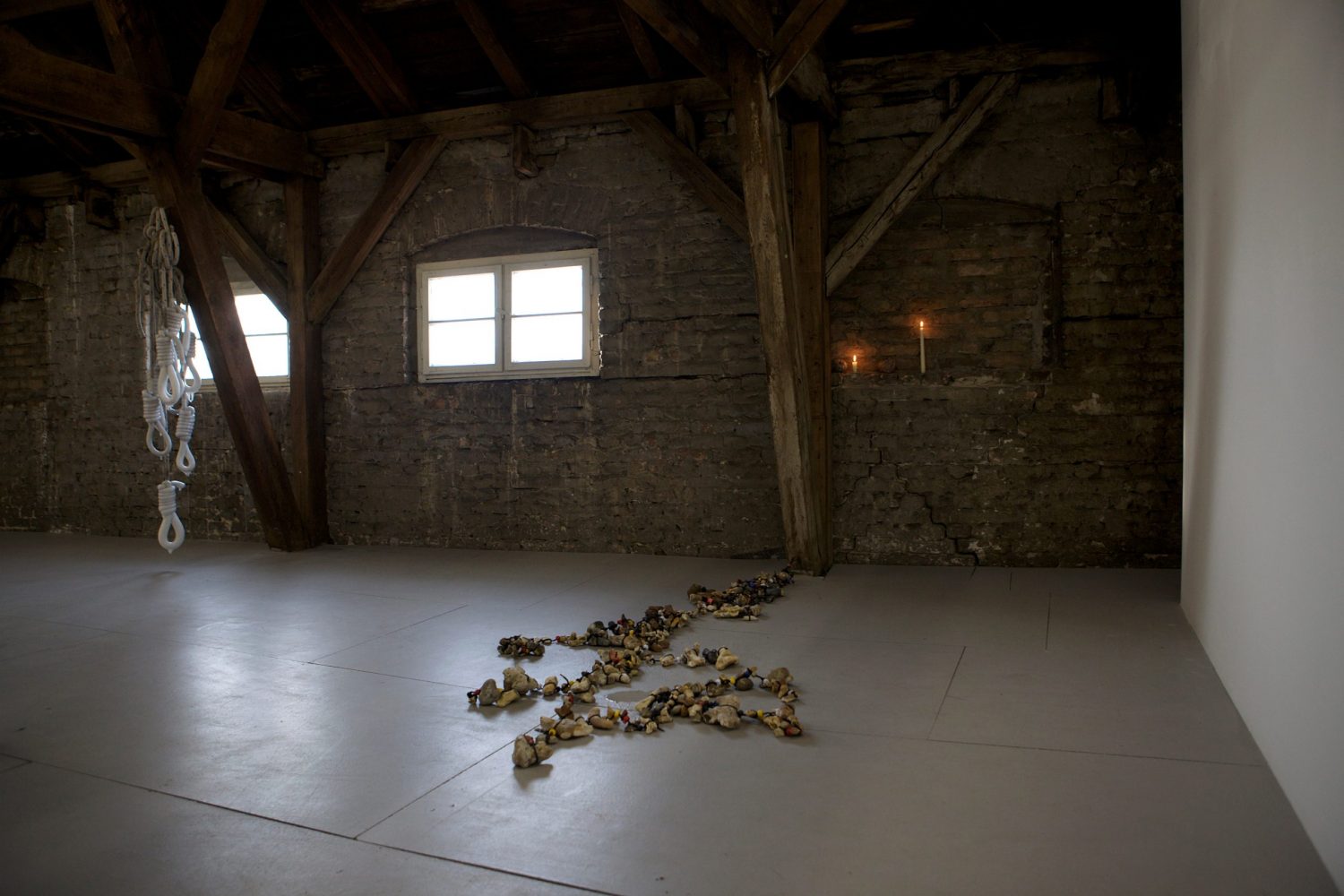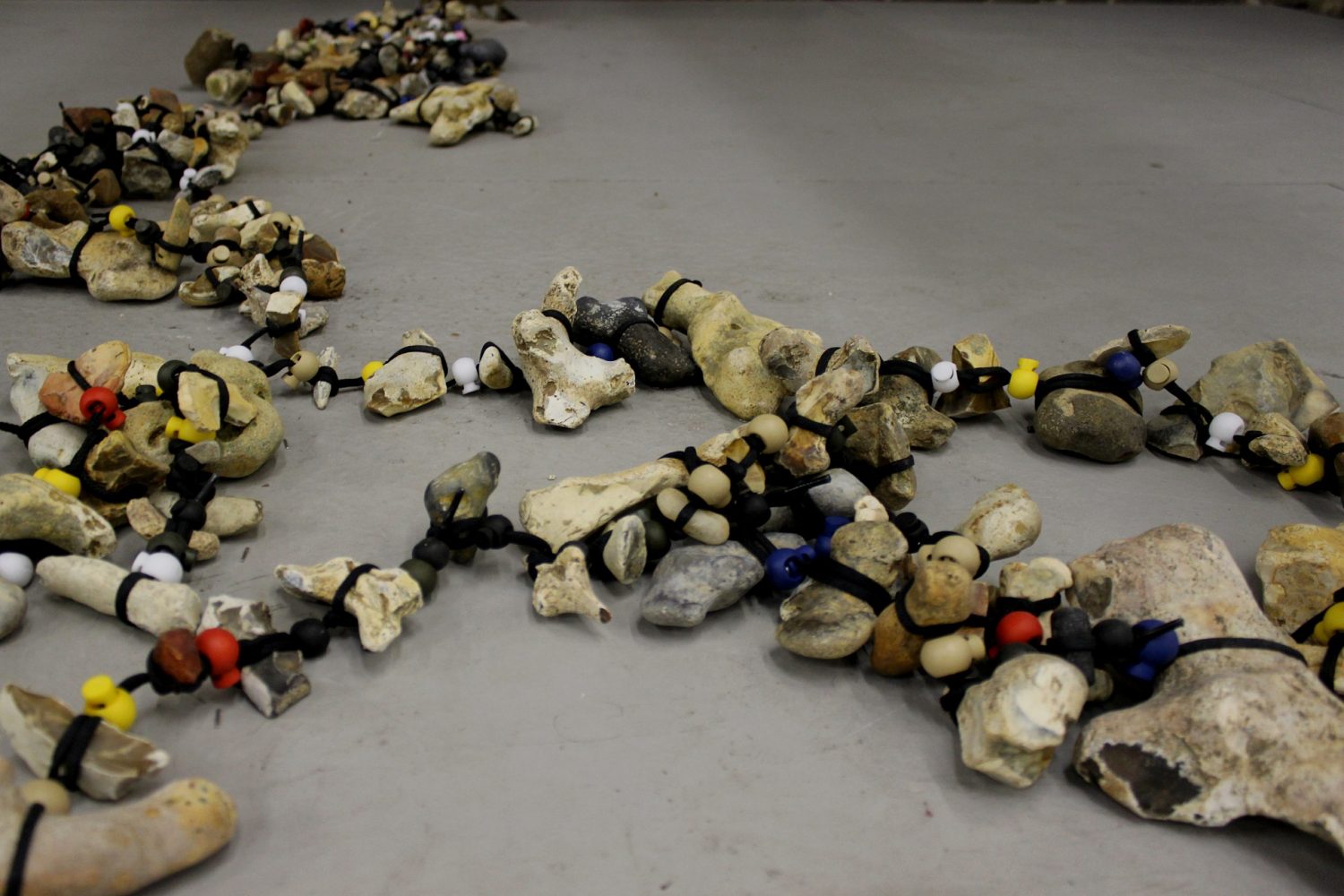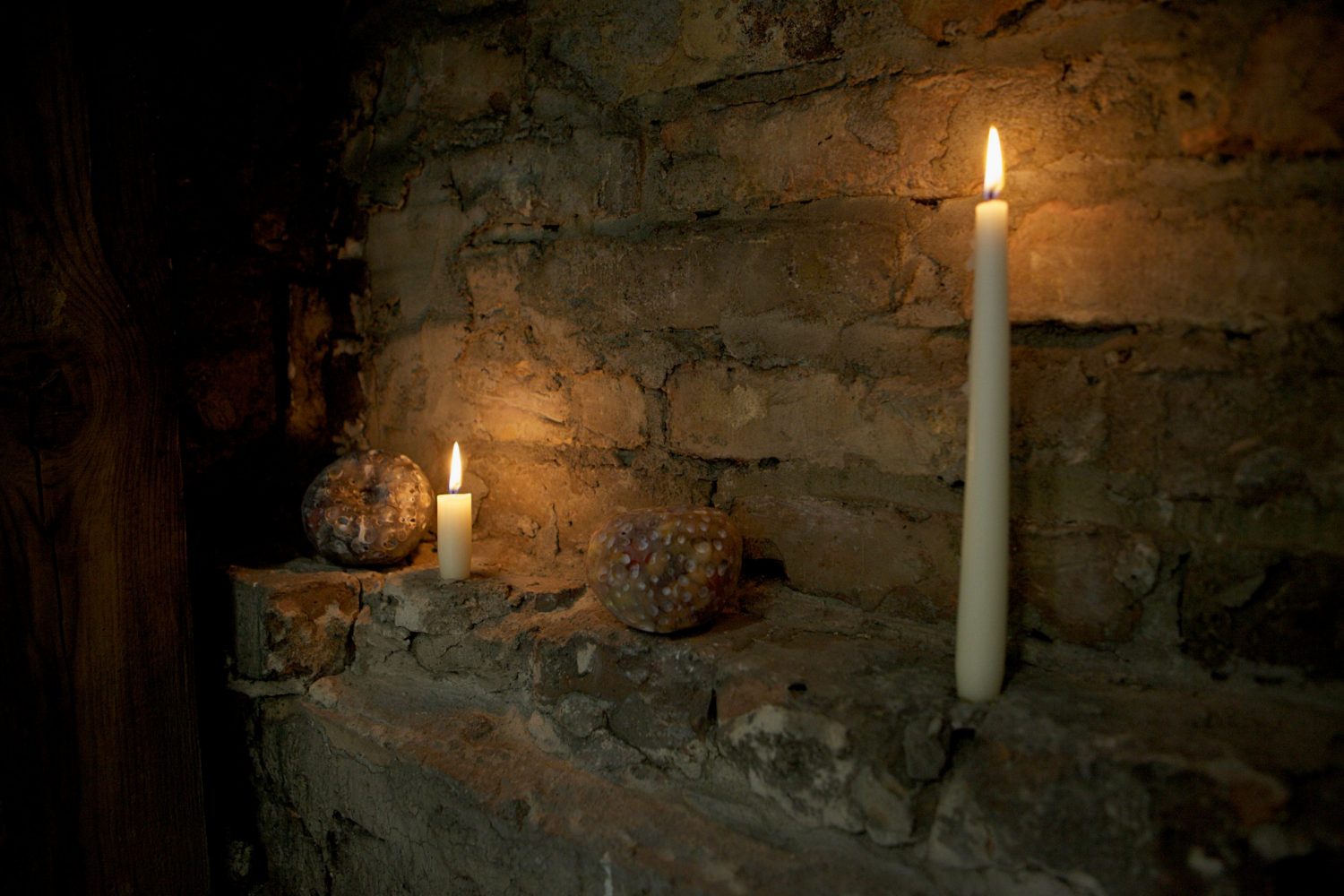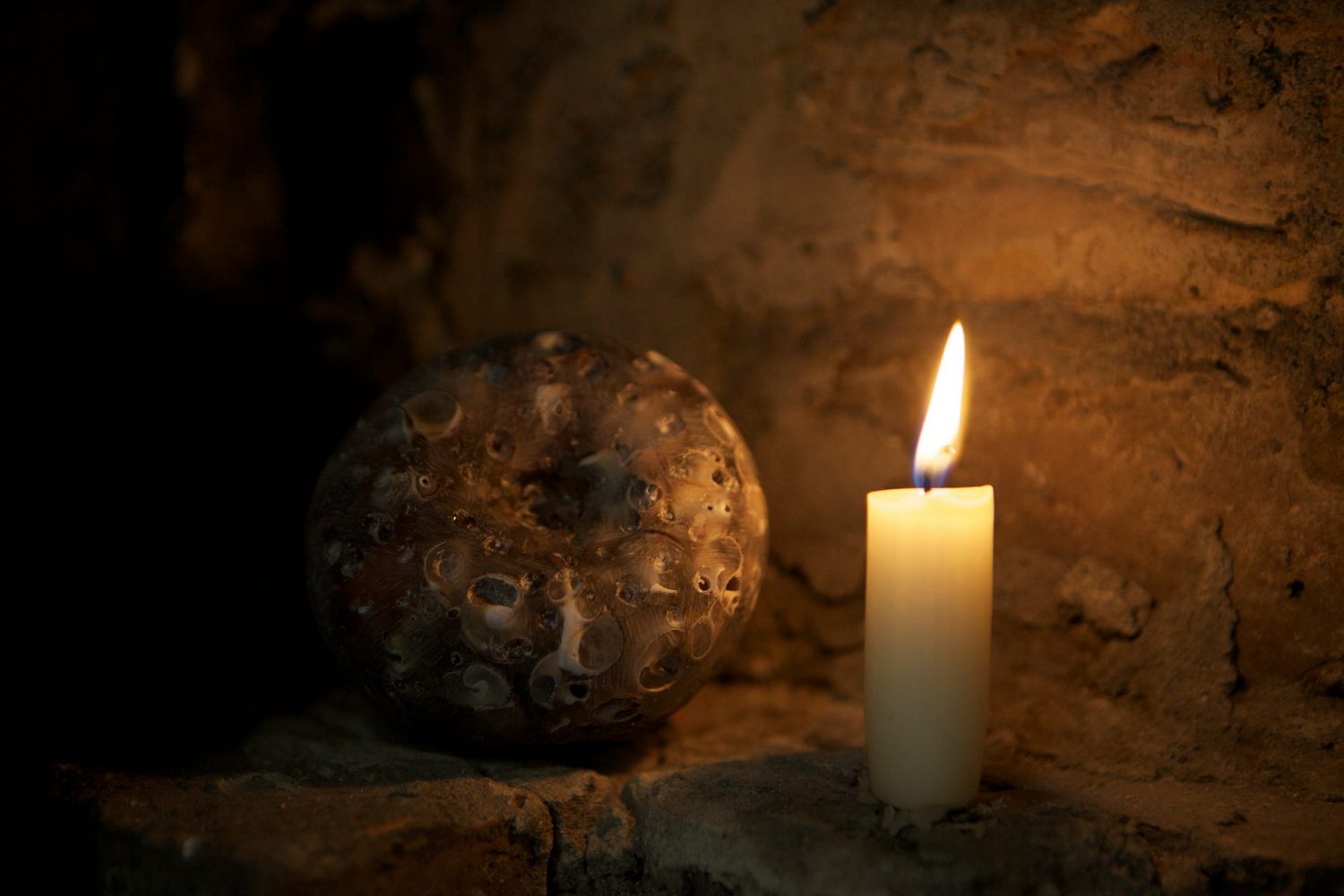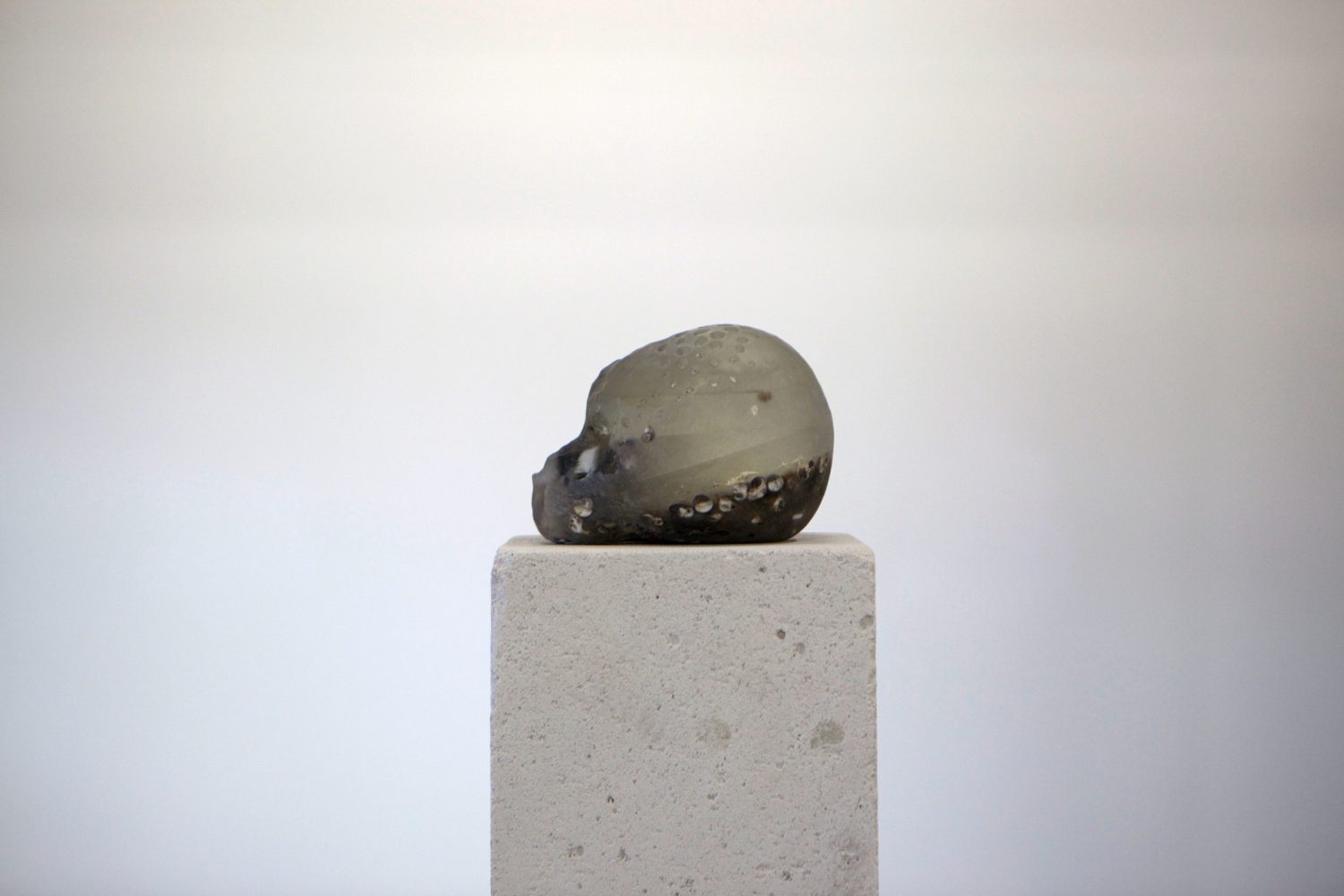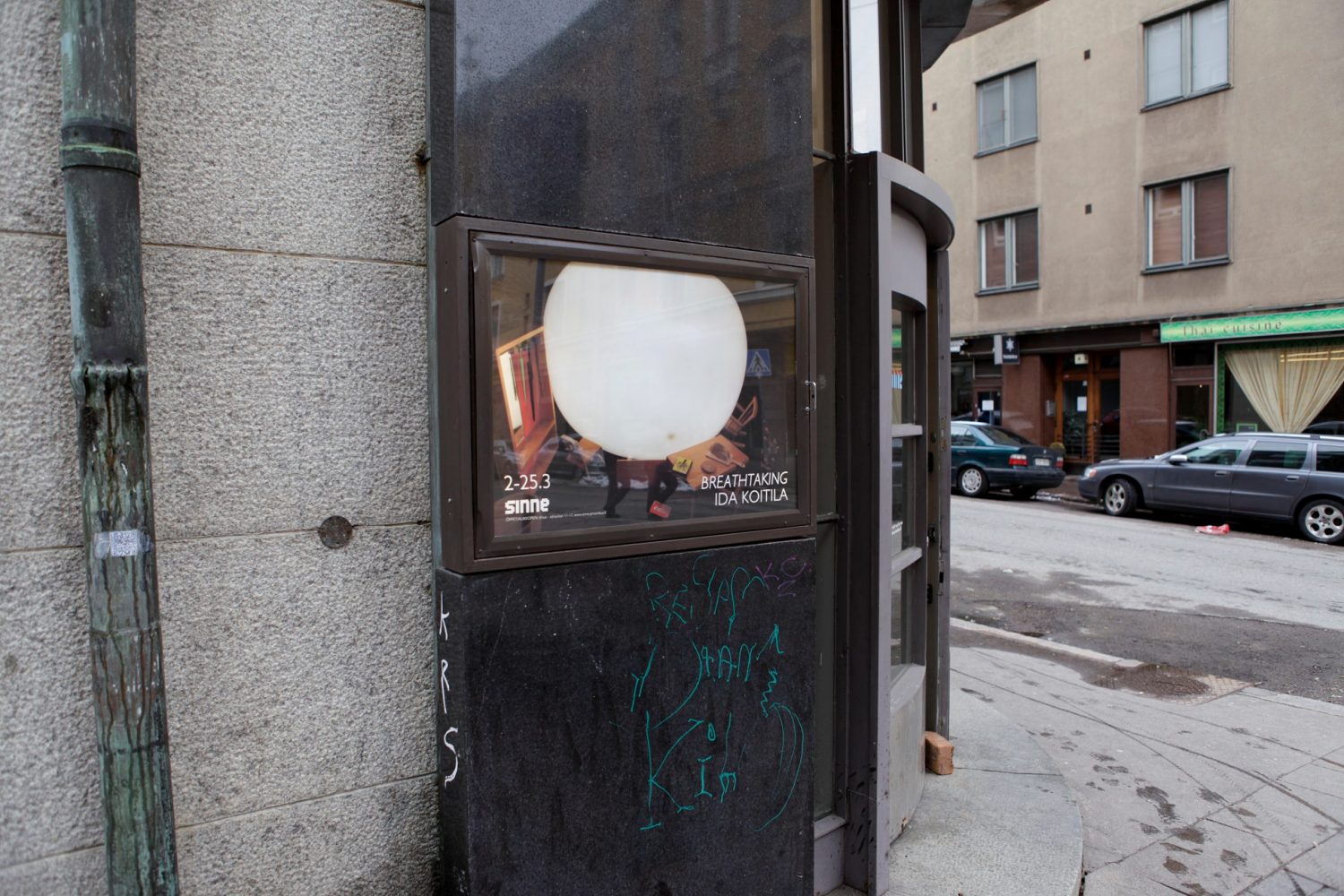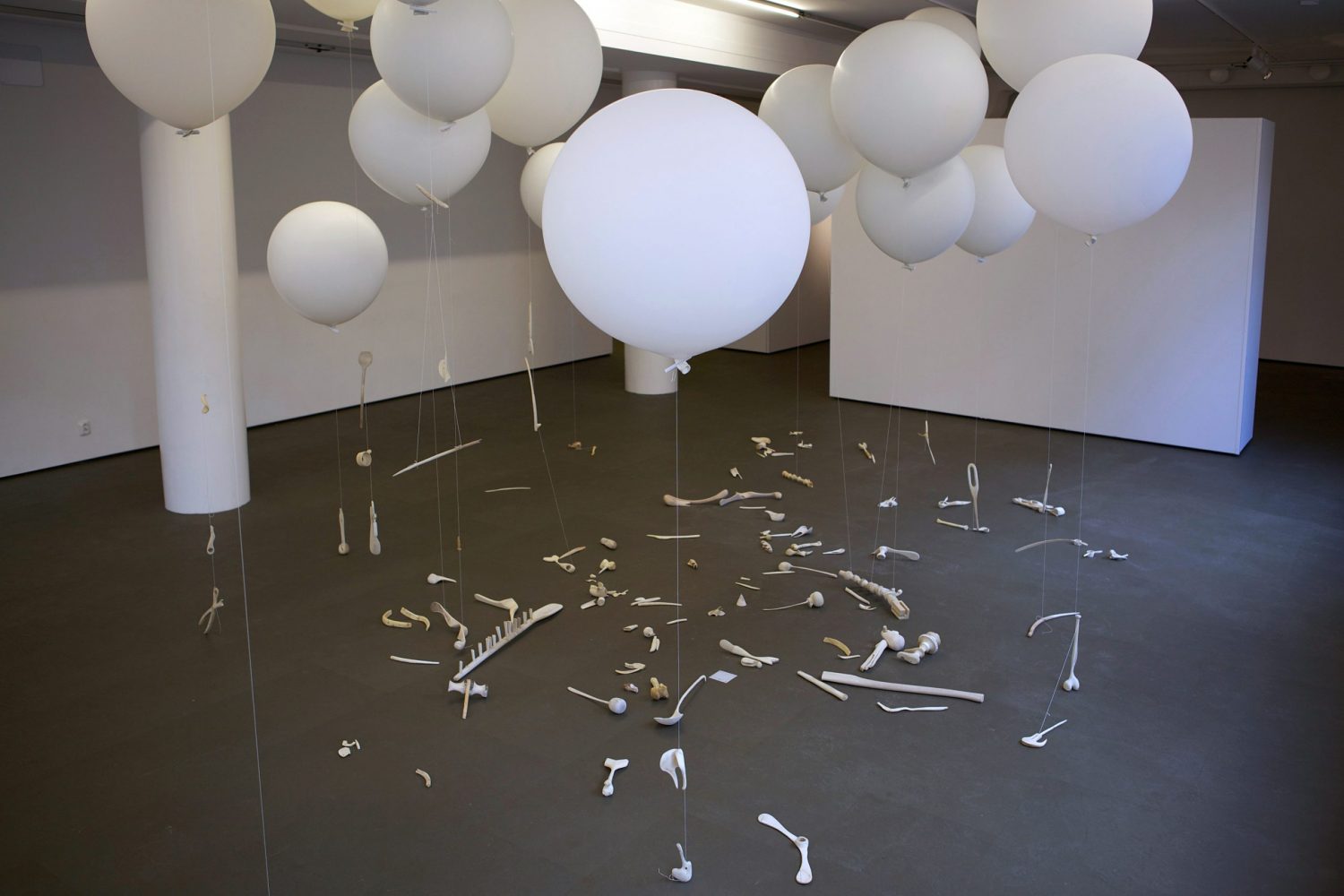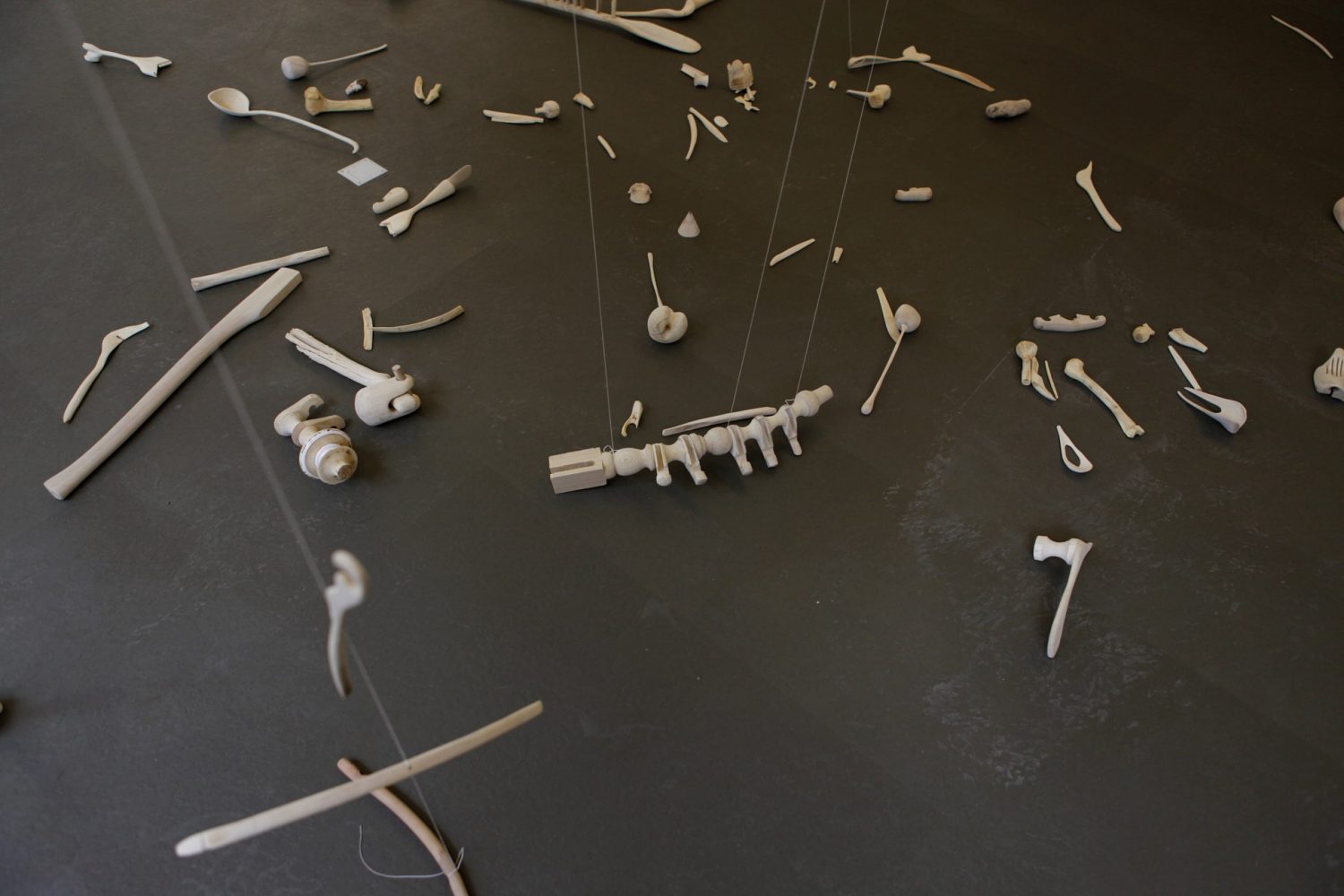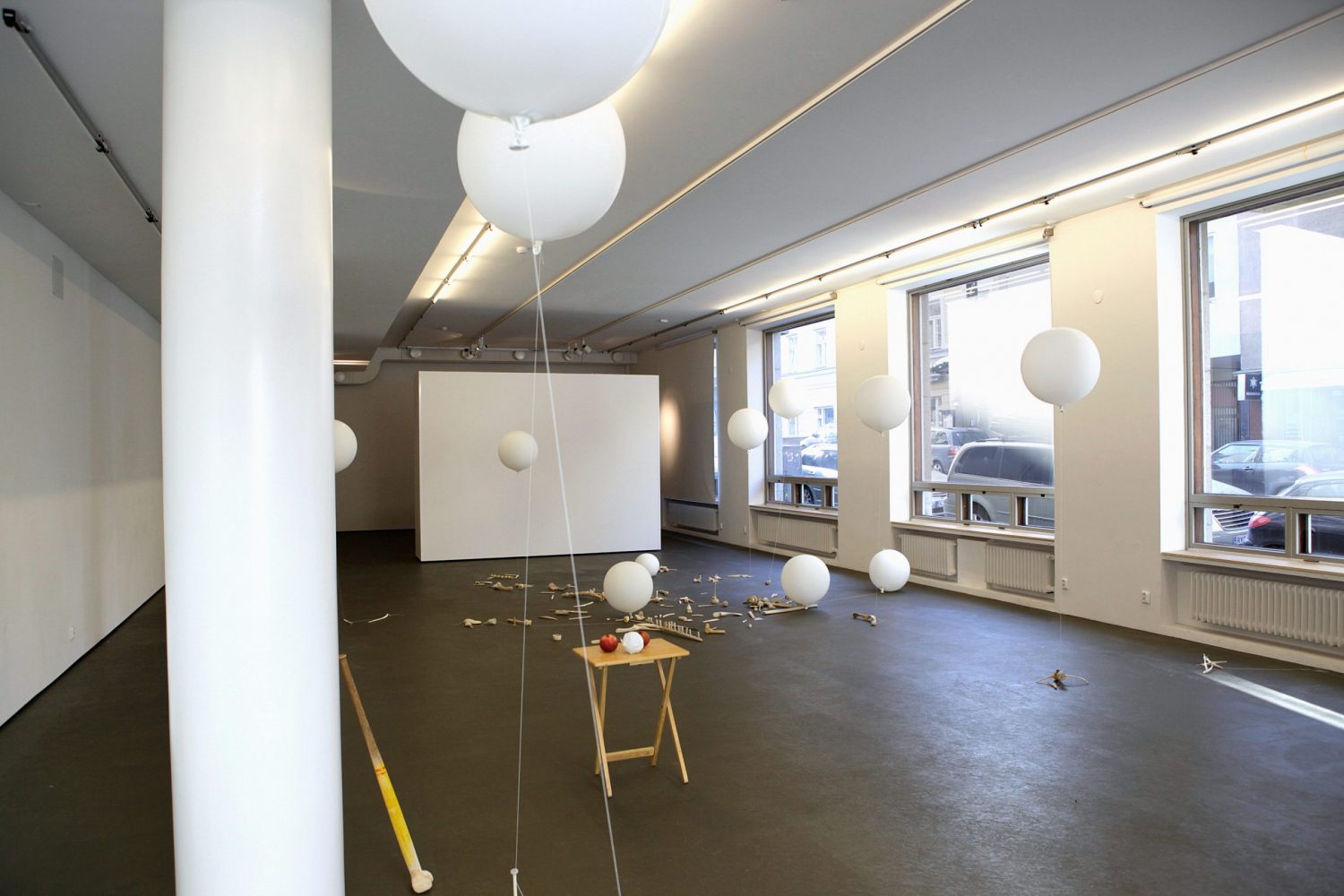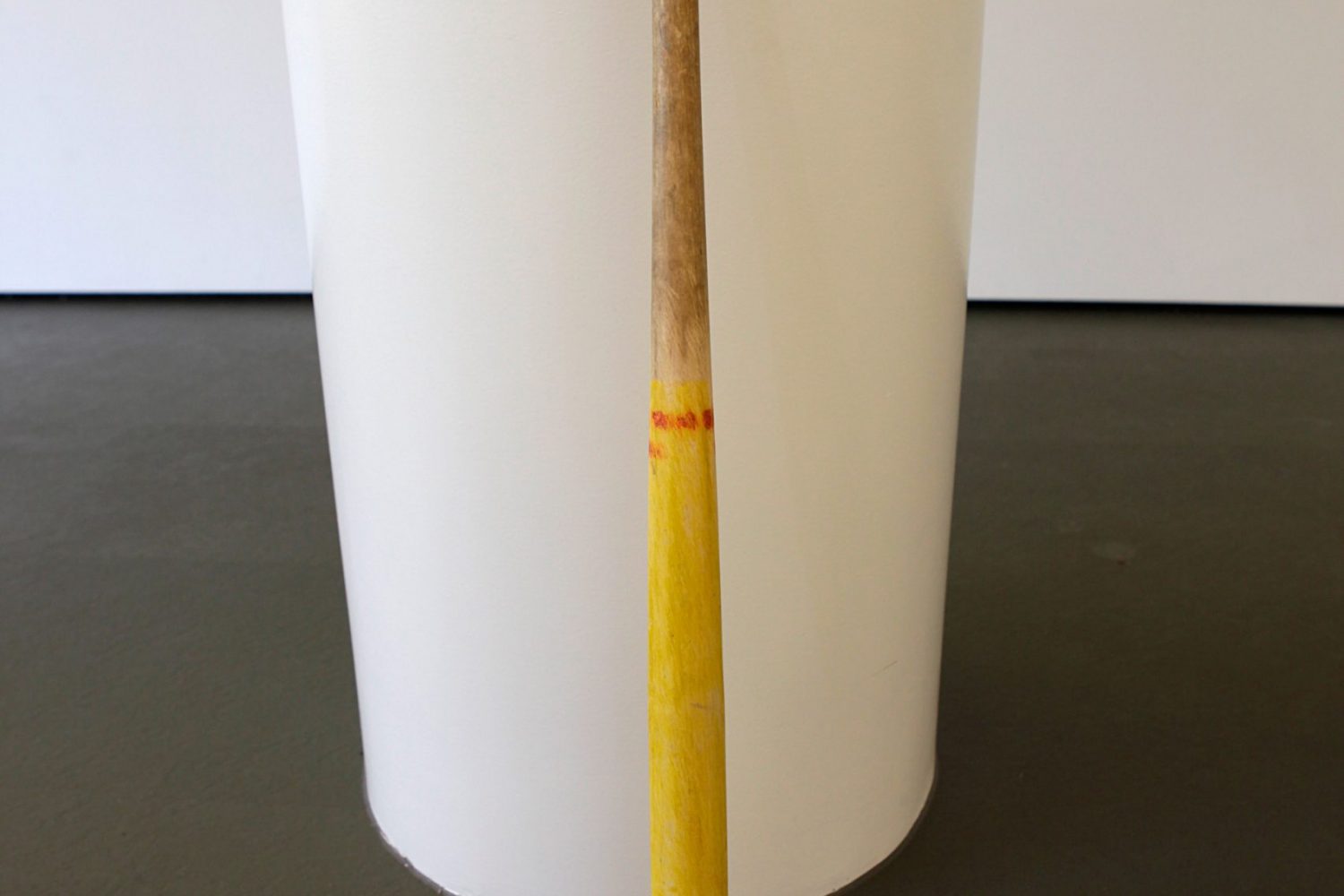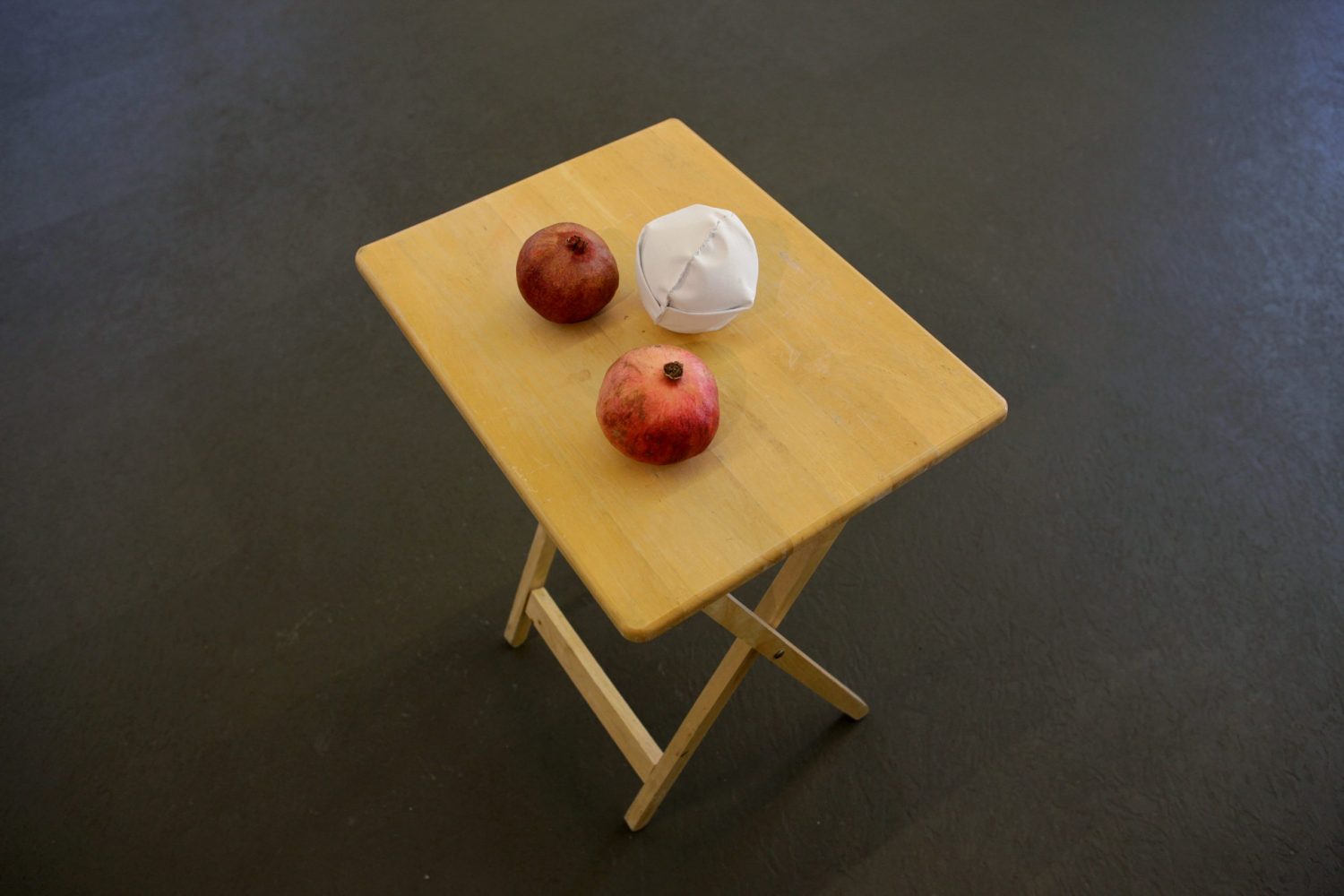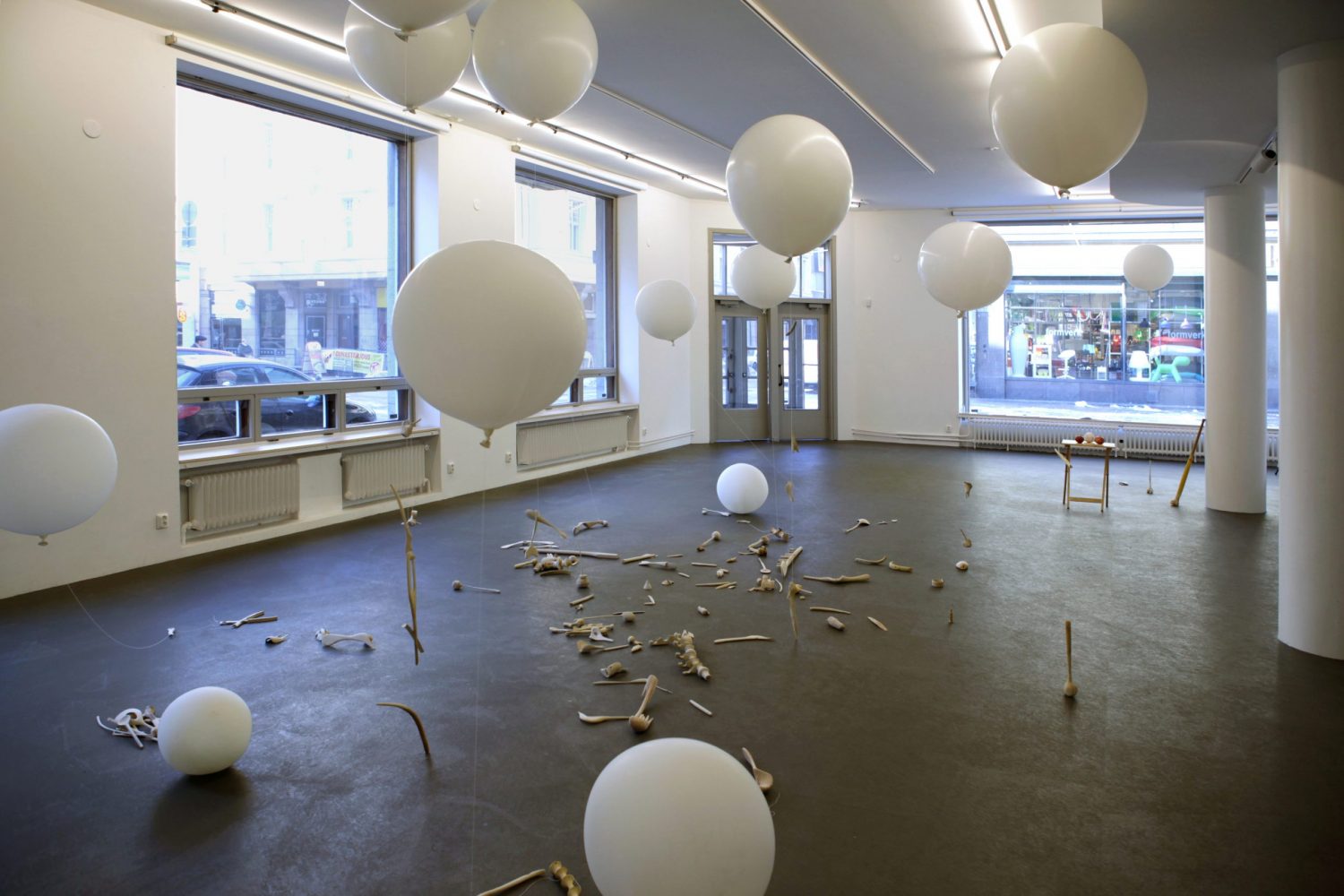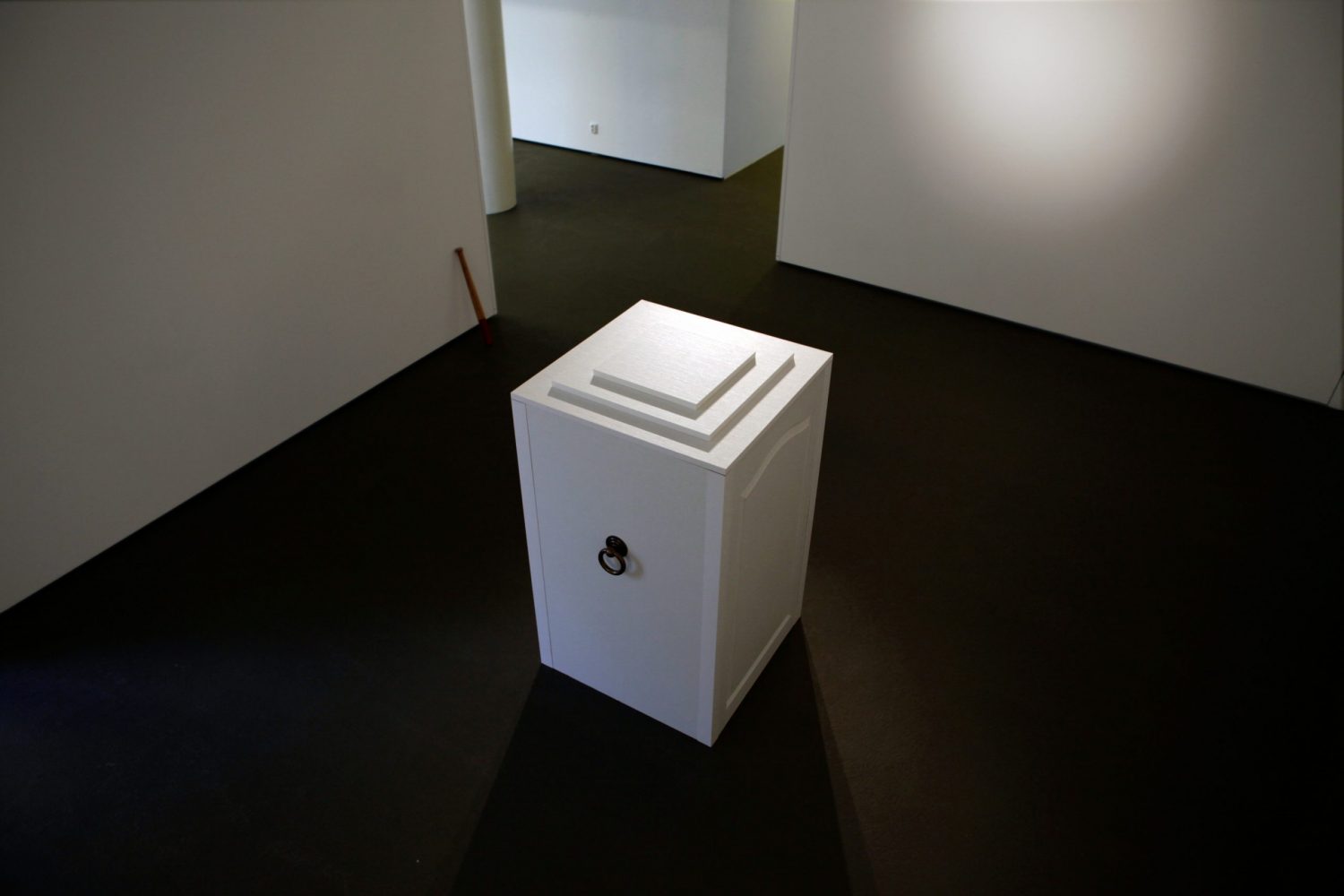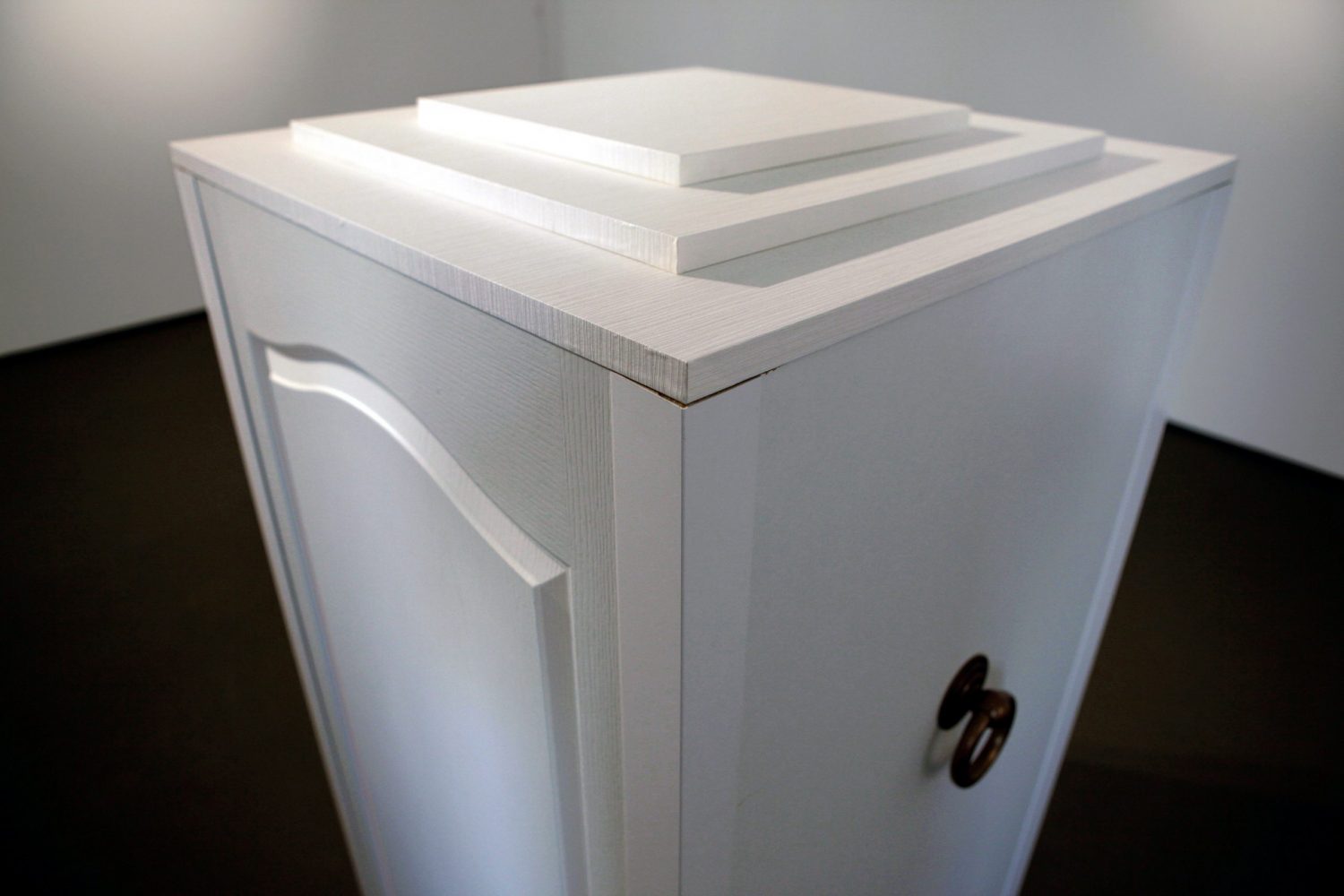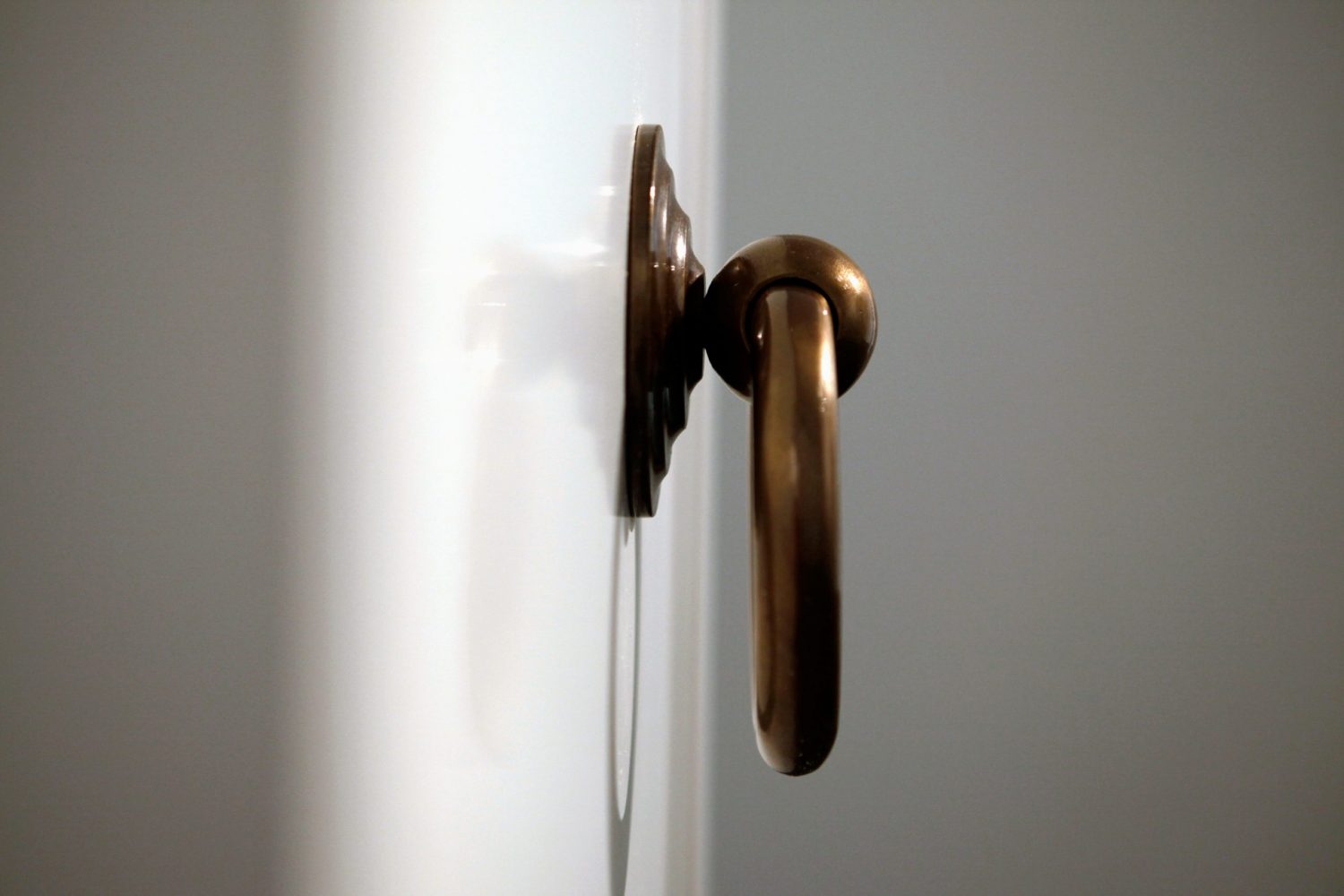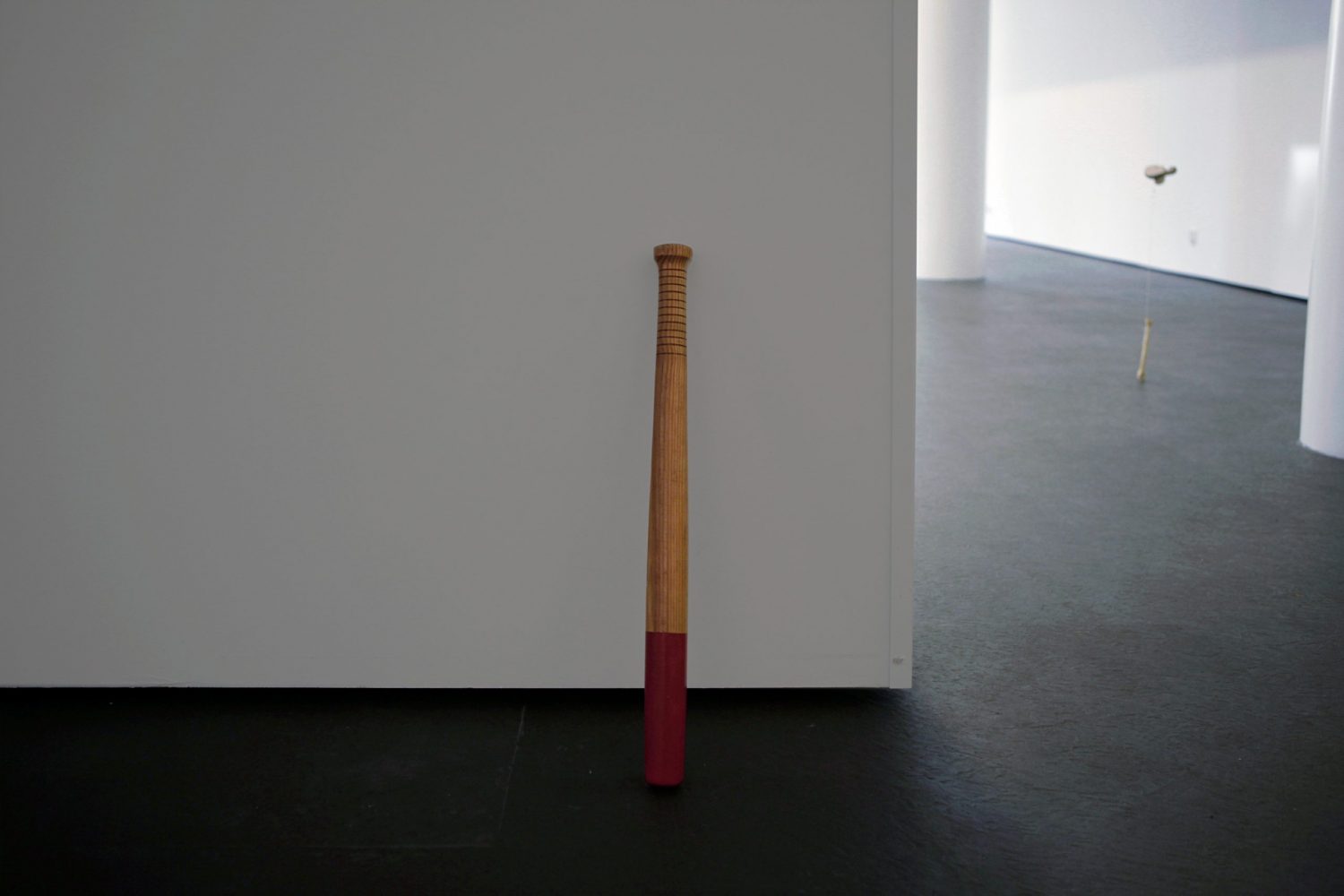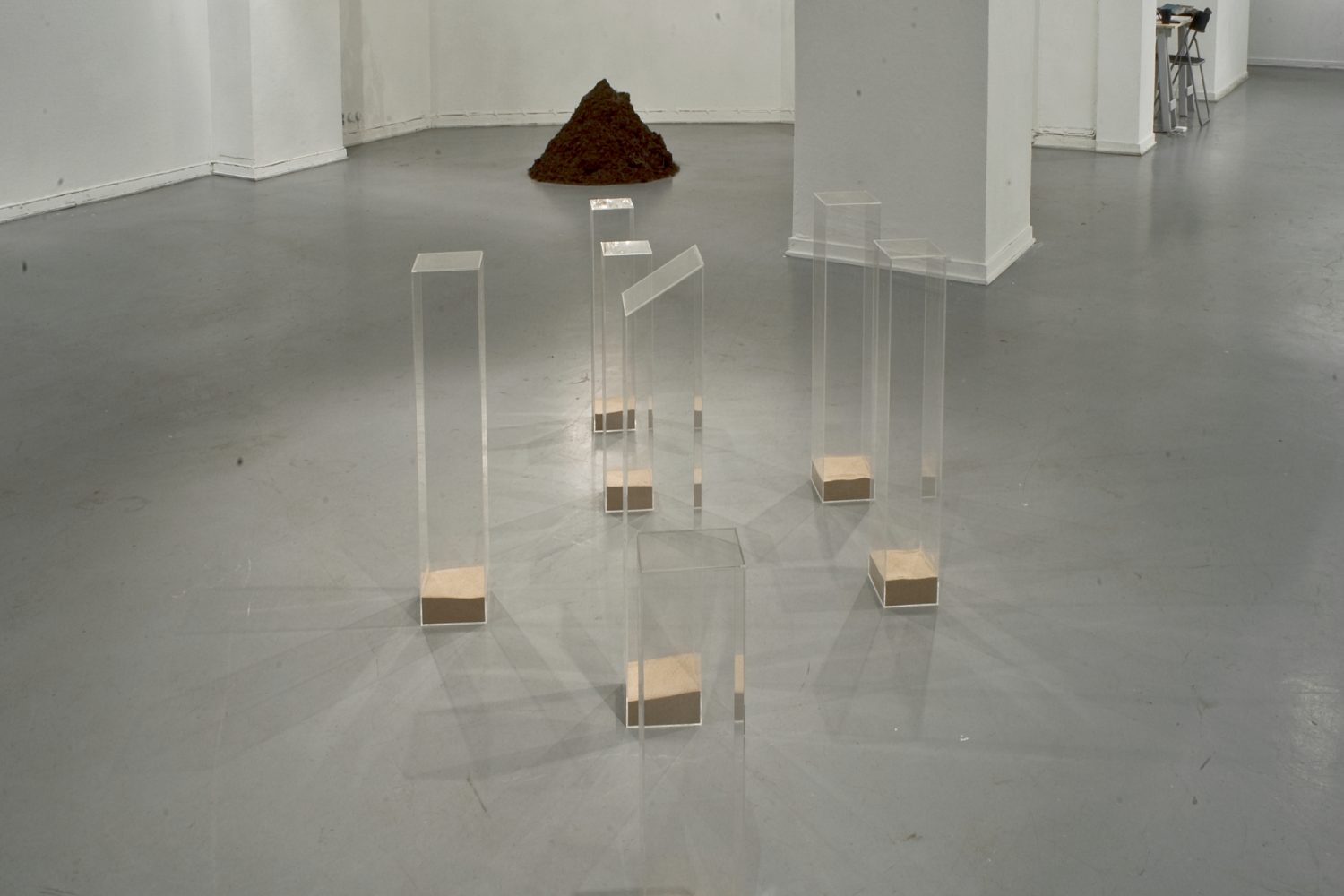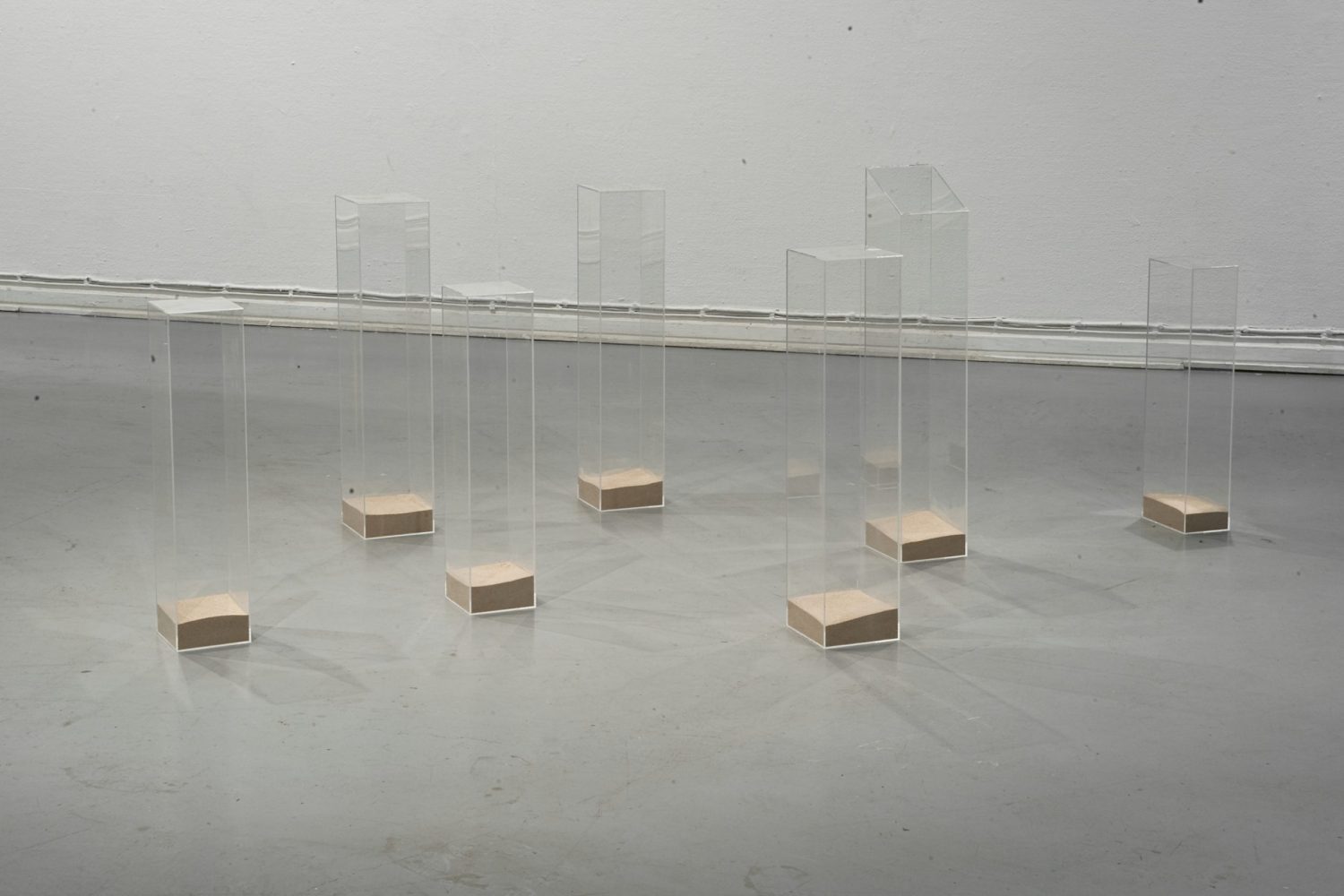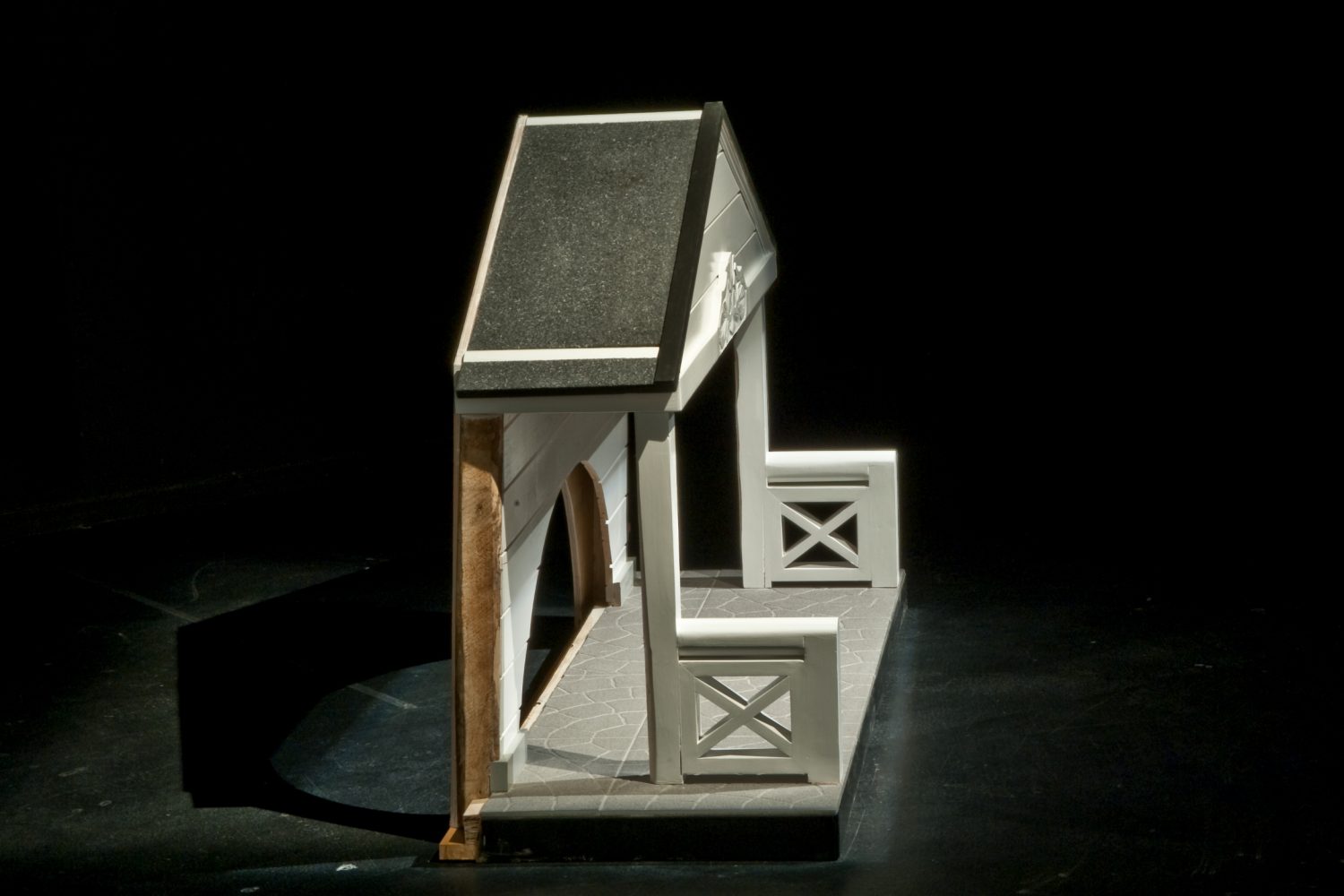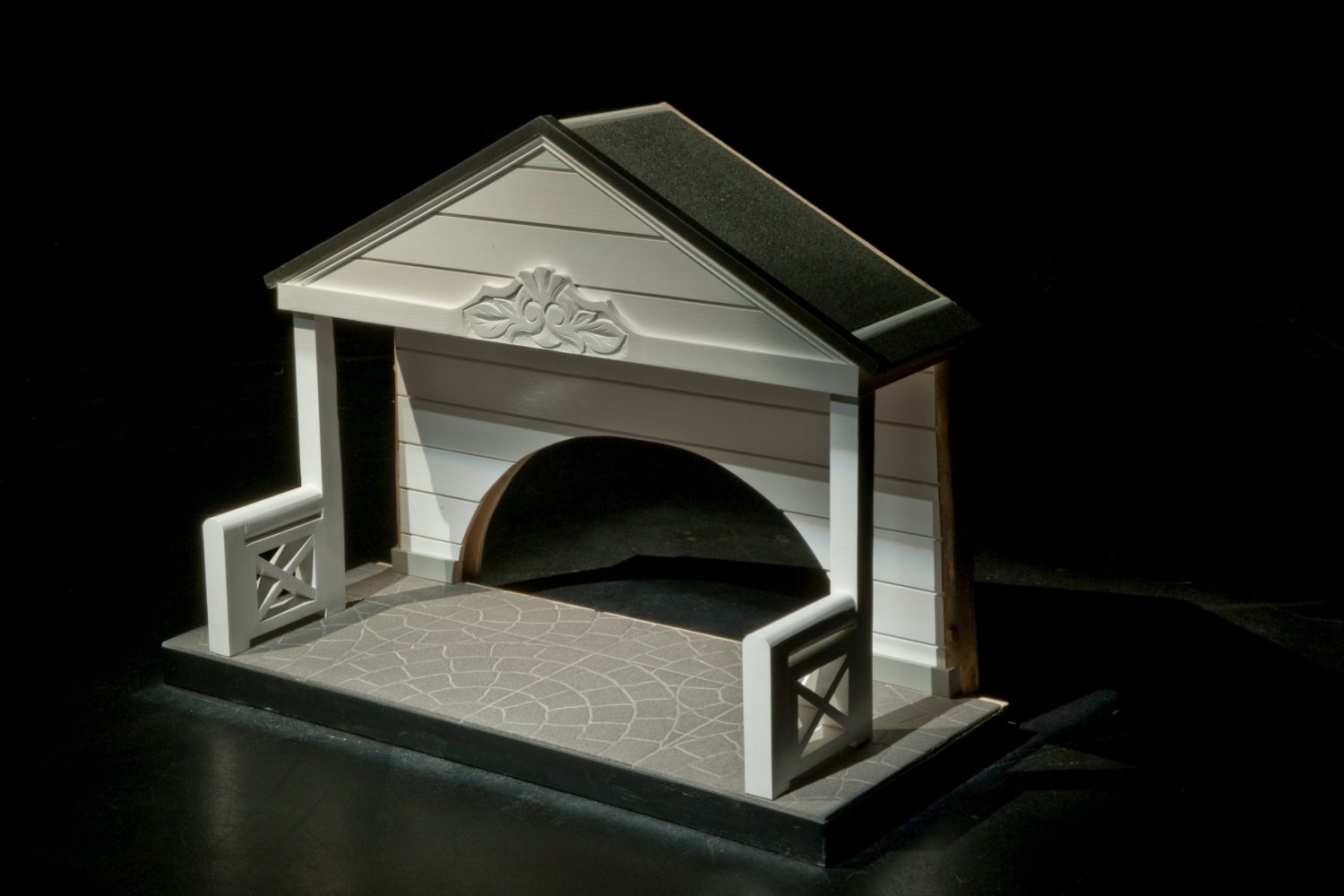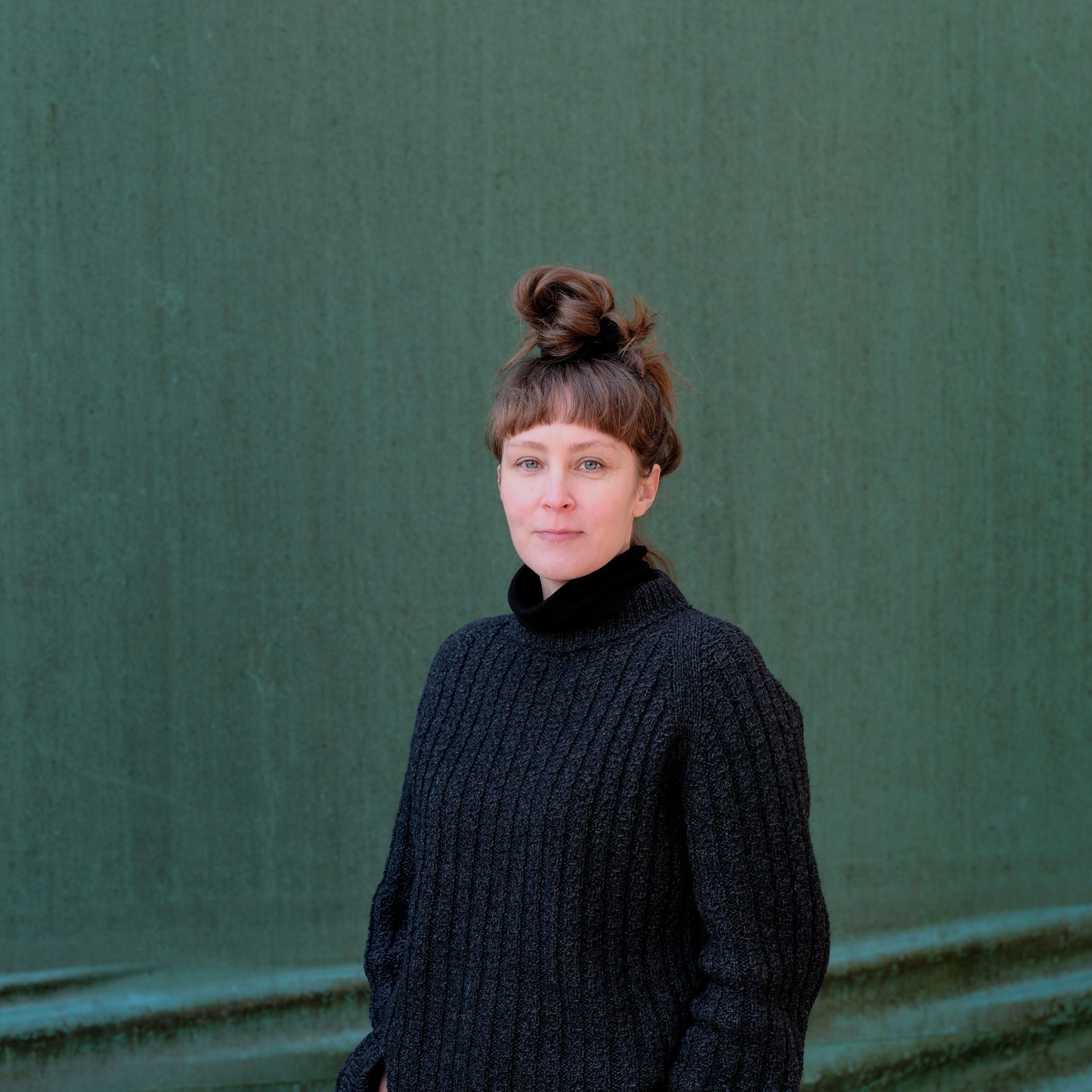
Ida Koitila (b.1983 Borås, Sweden) lives and works in Hanko, Finland. She graduated from the Finnish Academy of Fine Arts in 2011. Her work has been shown at: Space is a Common Thing, Porvoon Triennaali, Porvoo 2024, New Ice Age, Taidekeskus Mältinranta, Tampere 2023, Vidunderligheter, Borås Art Museum, Borås 2022, Mad Love, Seppo Fränti collection, Kiasma, Helsinki 2020, Extensions, Sinne, Helsinki 2019, Skulptur in Pilane, Tjörn, Sweden 2018-2022 and 2024, Crash of Air, Finnish Institute, Berlin 2015, Time that Remains, Helsinki Contemporary, Helsinki 2014.
She is represented in collections such as the Wihuri Art Collection, Kiasma Collections, Kiasma Seppo Fränti Collection, The Pro Artibus Foundation's collection and Borås Art Museums Collection. Public works are Column, Culture center Fokus, Karis 2022, Kunskapens Källa (Pool), Vasa övningsskola, Vaasa 2019, Ebb and Flow, The Tre Smeder Foundation's offce in Kvarteret Victoria, Helsinki 2017. Koitila is a member of the Association of Finnish Sculptors.
ida_koitila@hotmail.com
Photo: Sandra Kantanen
SELECTED
EXHIBITIONS
Space is a Common Thing,
Porvoon Triennaali 2024
Gallery Vanha Kappalaisentalo
Porvoo
2024
Ida Koitila, Roger Metto, Emma Tryti, Anna Nyberg, Mattias Hellberg
Vidunderligheter
Borås Art Museum
Borås
2022
Anna Estarriola, Ida Koitila, Antti Laitinen, Antti-Ville Reinikainen, Heli Ryhänen, Emma Rönnholm och Noora Schroderus
Monstrous Wonders
Borås Art Museum is dedicating a major exhibition to Finland as an art nation and takes a close look at its contemporary art scene, featuring seven prominent Finnish artists. Current themes such as existential issues, behaviour patterns, world views, mysticism, the environment and power can be traced throughout the exhibition, where the bizarre and the poetic meet the humorous and challenging. Based on our conviction of the strong and exciting Finnish art scene, we now explore this more closely. Also, Borås has long and firm ties with Finland through the Administrative Zone, where one in ten living in Borås has Finnish ancestry. The major immigration of labour from Finland to the textile industry in Borås has been vital to the building of the City’s identity. One thing that has become clear in the increased tension in the world is that the bond between Sweden and Finland has grown even stronger and the already close cooperation deepened.
The visual emphasis of the exhibition is on three-dimensional art and moving images. Apart from their conceptually artistic aspects, there is a narrative side to the works, and humour and playfulness are also important elements. Their sense of humour is often of a darker variety, balancing the serious content. Altogether, this forms a powerful weapon that creates detachment and reflection, uncovering underlying structures, behaviours and absurd phenomena in life. Other perspectives that are highlighted are what drives us, and the consequences. How we fill our lives with meaning in these times, and our behaviour patterns. The works focus on power positioning, consumerism and digital technology, interweaving the natural and the artificial. The exhibition looks at humanitarian ideas on meaning and our place in the universe, the transience of life and time, what we do with our time on earth and what we do to the earth. How do we navigate this enormous and complex existence that we are faced with? Topics that become even more urgent in times of crisis. Philosophical, existential, material and human aspects are presented through art.
The presence and exploration of natural elements are portrayed in different ways, more tangibly and physically, or in representations of conditions in nature, illustrating environmental and climate issues, two of the most urgent problems of our time. Nature’s crucial importance to human life has been expressed in many ways over the ages. It has always been an inspiration to artists and a key source of recreation. It has also served as a technological and financial resource, which raises the issue of the Anthropocene, the age where human activities and exploitation have had a considerable impact on the earth’s environment and climate. Our environment can also consist of places of our daily lives, our collective society, the private sphere, and relate to questions of status, power, violence and oppression.
Several works offer a parallel version of the world, which can sometimes seem very close to reality, sometimes twisted and distant, where undefined foreign elements are given space. Other aspects are the presence of an unknown dimension and the sense of something invested with power and even magic. The human quest contains a spiritual perspective, reflections on the existence of animate nature, staring into the cosmos and wondering at the sublimity of being, which has been demonstrated and interpreted by philosophers, theologians, scientists and artists.
This exhibition is a quotidian contemplation on the big questions in life, darkness and light. The works of art show us the familiar in new guises, prompting us to think and question what our world actually looks like. By paying attention to the small, repeated events and patterns that make up the larger picture, we can influence these things and consciously find our way among life’s monstrous wonders.
The participating artists in the exhibition are Anna Estarriola, Ida Koitila, Antti Laitinen, Antti-Ville Reinikainen, Heli Ryhänen, Emma Rönnholm and Noora Schroderus.
Curator and text Caroline Gustafsson
Coastline Sculpture Project
Hanko
2021
Liisa Hilasvuori, Leena Kangaskoski, Ida Koitila, Tiina Raitanen, Emma Rönnholm and Salla Vapaavuori
About
Coastline Sculpture Project was a artist-led project focusing on contemporary site-specific sculpture. The first event was organised in Hanko in July 2021 in cooperation with mobile application Harha. Harha guided the audience to the site-specific sculptures and expanded the experience with sounds, stories, process descriptions and digital shadow works. The event was inspired by a visit to Täktom beach, just a stone’s throw away from Hanko. There are over 60 wood sculptures made by a local artist Knutte Sundberg sprinkled among the high grass and small boat sheds. Some of the Coastline Sculpture Project artists visited the site in the winter of 2019 and decided to generate ideas for their own event. The project provided a possibility to experiment in making, showing and experiencing art. The events, organised during summer time, invited people to be included in the process.
For more info visit https://www.coastlinesculptureproject.org/en/home/
Guilt
On top of Puistovuori stands a wartime Russian built concrete bunker. From inside the bunker the horizon can be seen through a small and narrow crack and through another small opening a glimpse of woodland can be seen. Via a QR code a shadow version of the sculpture Guilt becomes visible. It has been there but is no longer present. In the photograph a thorn crown is hanging on the bunker wall. The thorns are only partly visible under soft curls of hair and white wax which has been dripping down onto the
floor. The drips look like white fangs or tears of chalk.
Guilt deals with inner and outer landscapes and the tension between these two is explored via the concept of Ma, which in traditional Japanese art often refers to a concrete negative space in an image composition. But the word can also have another meaning, where the void exists only in the viewer’s mind.
Mooring
The work Mooring consists of a rope which has been used to tie a ship to the peer. The rope has hundreds of hair braids clinging to it as well as an orange life jacket. On the front of the jacket a burning heart has been embroidered. Around its center hangs a crown of thorns that has made the blood of the heart drip. The braid is a way of attaching, organizing and controlling the uncontrollable. One end of the rope is about to unravel and the other end has been bent as a noose. The central theme of the work is the balance between control and freedom, linked to both metaphysical reality and religion.
